
COUNTRY MATTERS







Iwas giving a talk to a group of young students, and we discussed what they wanted to do with their lives. There were the usual light-hearted comments about wanting to be rich, famous and retire by the age of 30 (a lifetime away in their eyes), but one person said they just wanted to be happy. We then discussed what happiness looked like and it is, of course, different at various stages of our lives. I was reflecting on this and thought about what makes me happy, or perhaps the better word is contented, and I realised it is the simple things that I perhaps do not appreciate enough.
The less obvious may be: an early walk with the dog on a misty morning (especially if our labrador flushes a bird and doesn’t chase after it), breakfast on the terrace, planting vegetables (the anticipation is often better than the finished article), a family supper (especially if we have not met up for a while), mulling over the day after work, watching the Atlantic while listening to my ‘morning coffee in Polzeath’ playlist, catching a good wave, or painting while Test Match Special murmurs away in the background.
One thing that surprised me was that coming into work is on the list, especially as this will be my 40th year practising in the same region. I thought about why I continue to enjoy my job and believe it is the people I work with and the clients we work for. It is the younger people who especially inspire me, and their ability, enthusiasm, energy and ideas are particularly motivating. They all want to succeed and do the very best work possible, and I wish I had been more focused at their age!
I have stumbled through my professional life and always say that I have done every job at Symonds & Sampson, but I cannot boast this any more. The disciplines within the firm are now so varied and complex, especially with planning, building surveying, and contentious work such as expert witness, dilapidations, party wall work, let alone the grant funding and subsidies available to landowners. I’m not sure how many times I have said: “I don’t know the answer, but I know somebody at the firm who will.” For property-related matters, we are a one-stop shop.
I hope this magazine will show you the breadth of the work, and the brains, available at Symonds & Sampson. If an article resonates, I feel sure somebody in our firm will bring you a degree of happiness, whatever that looks like.

Mark Lewis Senior Partner



In this section, we’ve curated a diverse mix of guidance, insights, and inspiration. We begin with advice on succession planning under the Agricultural Holdings Act and emphasise the importance of accurate property valuation. Moving forward, we delve into the topic of grass keep, and revisit history with two villages in our region that were requisitioned during WWII. We explore farm diversification with a real-life example of a campsite and question whether the country’s ongoing water crisis can be resolved. We feature an external article from the Farming Community Network (FCN), highlighting their vital work supporting farmers and families within the farming community. We examine whether councils are wisely allocating CIL payments, we examine the green belt and shift gears to explore green laning and trail riding. Keeping it green, we discuss solar power and the value of our hedgerows, while taking some time out to exercise and go racing. We offer practical tips for succession planning and debate whether wearing a tie has become unfashionable.
Our building surveyors share their expertise, discussing party wall and dilapidation issues, roof spread, optimising airflow in homes, and essential maintenance tasks for the summer months. Finally, we round off with a nostalgic tribute to some classic films.
This section focuses on the sale of farms and live and deadstock, kicking off with a recap of the top ten most memorable sales of 2024. We encourage you to buy agricultural land and stress the importance of having your paperwork in order if you are selling. We also reflect on whether rural communities are becoming increasingly marginalised. Another outside article highlights a sunflower charity, and we explore activities for our fourlegged friends. We comment on new inheritance rules, farm safety, and the latest happenings at Frome Market. We feature highlights from farm dispersal sales, complete with snapshots of the characters who attend these events. Additionally, we take a trip back in time to medieval England and more recent history, revisiting celebrations across the Southwest in 1945.
This section begins with why you should employ Symonds & Sampson as your agent followed by a debate of ‘pool or court?’ We delve into shared ownership and revisit the history of window taxes before stressing the importance of gathering all material information at the outset.
We take a tongue-in-cheek look at house sales, unusual village names, and a fascinating book about England’s largest village. Next, we feature the coats of arms of the counties we cover, the history of the iconic avenue of trees at Badbury Rings, and take a more up-to-date look at one of Poundbury’s notable architects.
We also reflect on a historic cottage industry for those working from home, visit an animal sanctuary, and celebrate the lives of two pioneering women. We showcase the range of properties we sell and examine seaside house prices.
We update you new homes and development sites, we move forward with a musical interlude, featuring one of our agents and a look back at the music of the past fifty years.
Our commercial agents share highlights of top properties leased and sold, provide a review of leases, and add some humor with comedians from Devon. We explore unusual regional customs before shifting to lettings, offering insights on the Renters Reform Act, tips for landlords, and the challenges faced by letting agents.
We share the statistics that establish us as the leading firm of auctioneers in the Southwest, offer guidance on what to do before an auction and explain the critical importance of special conditions. We invite you to bid by telephone, crack the auctioneer’s code, revisit some of the best lots sold, and take a step back in time to explore what was happening a century ago.
The photographs from the summer shows are among the magazine’s most popular features, and this year we’re showcasing the young visitors who stop by our stand—along with their dogs. We highlight memorable moments from charity events, set sail on a gap year adventure on the high seas, and enjoy a competitive pub game during the winter months. The section wraps up with articles on how we support and promote younger staff, a spotlight on the famous footballer in our team, and three very happy wedding photos.


Advice, opinion, information, and inspiration


Calling all farm tenants – changes under the AHA 1986 tighten succession eligibility, making early advice and preparation essential. A-J Monro reports

From 1 September 2024, the eligibility and suitability tests determining whether an applicant can succeed to a tenancy have changed. Assuming the tenancy is governed by the Agricultural Holdings Act 1986, and you have at least one further opportunity for succession, you still need to meet the necessary criteria set out in the legislation to qualify. There are two points at which succession can be applied for: on retirement or on death. In either scenario, the tenant must be the sole tenant at that time.
Under the old rules, the proposed successor applied to the tribunal for succession, whether on death or retirement, and had to demonstrate that they met certain strict requirements. Some of these requirements have been varied as a result of the Agriculture Act 2020, as outlined below:
• Suitability test – Under the old rules, assuming the applicant met the above tests, they then had to demonstrate their ‘suitability’. This included proof of experience in agriculture (which could include educational courses), relevant qualifications and evidence of the ability to use equipment and machinery. The applicant also had to demonstrate they were physically suitable, of good financial standing and age-appropriate. Furthermore, landlords were able to express their views on the applicant’s suitability.
“The applicant must demonstrate that, if the tenancy were let on the open market, a ‘prudent landlord’ would consider the applicant a suitable tenant”
• Eligibility test – The applicant must be a close relative of the deceased or retiring tenant, such as a spouse, civil partner, sibling or child. The applicant can also be treated as a child, but the extent to which this applies is relatively limited. This test remains unchanged under the new rules.
• Livelihood test – The applicant must derive their only or principal source of livelihood from the holding for at least five of the last seven years leading up to the tenant’s death or the service of the retirement notice. This test also remains unchanged.
• Commercial unit test – Under the old rules, the applicant could not occupy an alternative holding capable of being defined as a ‘commercial unit’ – i.e. capable of sustaining the livelihood of an agricultural worker. This test has now been removed in recognition of modern farming practices.
This test has been varied under the new rules. While the above requirements still apply, the tribunal must now also consider the character and condition of the holding and the terms of the tenancy. Most notably, the applicant must demonstrate that, if the tenancy were let on the open market, a ‘prudent landlord’ would consider the applicant a suitable tenant and that they would be in the running against other potential applicants. Another change under the new rules relates to retirement age. Previously, the retiring tenant had to be at least 65 years old. This requirement has now been removed, and there is no minimum age for retirement. Some consider these changes beneficial, whereas others might argue that the new suitability test, particularly the requirement to demonstrate market competitiveness, makes the process more challenging. Any application to the tribunal now includes elements resembling a farm tender rather than the simpler succession-type applications seen under the old system.
Given the increased level of detail required, we strongly recommend that clients seek early advice when considering succession. It is also important to note that the changes in the rules do not affect the strict time limits for applying for succession.
A-J Monro BSC(Hons) MRICS FAAV APAEWE Partner, Head of Professional Services 01202 882103 Wimborne amonro@symondsandsampson.co.uk

Sarah Vere highlights how expert research and local knowledge deliver exceptional property valuations

Our team of chartered surveyors and registered valuers are fully qualified and highly experienced in providing valuations for a wide range of properties across the South-West. These valuations can serve many purposes, including the buying and selling of land and property, probate, capital gains tax, mortgage and secured lending, and much more across the rural, residential and commercial sectors.
We use our in-depth market knowledge and reasoned analysis to provide specialist and intelligent valuation services to clients.
Agricultural Occupancy Conditions are a common factor that can affect property value but are often overlooked by clients. Once widely used as a planning tool, these conditions permit the development of residential properties on the strict basis they can only be occupied by individuals currently or formerly employed in agriculture.
We also analyse up-to-date legislation. For example, if we’re asked to value a portfolio of rented residential property but discover during our research that the Energy Performance Certificate (EPC) falls below the required standard for letting, it may significantly affect value.
While much of this research can be carried out online, there’s no substitute for local knowledge. Knowing whether an area has experienced severe flooding recently, even though it’s outside the recognised flood risk zone, or being aware of the local soil type and its propensity for subsidence, is invaluable. We aim to ensure our clients receive the best possible advice, including alerting them to potential issues during the valuation process.
“A ‘gentleman’s handshake’ can strike fear into the heart of any rural surveyor”
As part of our research, we review the planning history of a property. What may appear to be a charming agricultural barn during our site inspections may, in fact, have permission to be converted into the kind of residential property you’d imagine on Grand Designs. This can obviously have a huge impact on value.
If there is a tenancy, what type of tenancy agreement is in place?
A ‘gentleman’s handshake’ is a phrase that can strike fear into the heart of any rural surveyor, but it’s one we hear time and time again, and it can have a significant impact on our valuation figure.
In summary, there are many factors we consider as Royal Institution of Chartered Surveyors (RICS) registered valuers. Ensuring both you and we have the full facts when determining value is one of our key commitments. Our valuers are ‘best in field’, reflected in our appointment to the valuation panels of all major high-street banks as well as numerous specialist and corporate lenders.
If you would like to discuss a valuation, please contact your local Symonds & Sampson office and we’ll put you in touch with one of our qualified valuers.
Sarah Vere BSc (Hons) MRICS FAAV Head of Tiverton Professional 01884 218911 Tiverton svere@symondsandsampson.co.uk


From quality pasture to practical access, Will Cairns has your tick-list for a desirable grass keep
Finding a good grass keep let is about more than selecting any green field. So, what separates a truly desirable pasture from just another patch of grass?
Quality grass: The foundation of a good keep
The right type of grass is essential. Ideally, the pasture offers a dense, nutritious mix with ryegrasses, clovers and varied grass blends that support its intended use – grazing or cutting for silage.
Convenient access: Location matters
Even the best grass won’t be much use if it’s hard to reach. Location is key for routine checks, transporting livestock and cutting access. A desirable grass keep is easily accessible via well-maintained roads and straightforward routes, saving time and reducing effort. Convenient access minimises hassle for everyone involved.
Secure fencing: Essential for peace of mind
Good fencing might not be glamorous, but it’s essential. Livestock, especially sheep and cattle, are notorious escape artists, and strong, well-maintained fencing keeps them safe. A grass keep with robust fencing along all boundaries provides peace of mind and signals that the landowner cares about the field’s condition and livestock security.
Reliable water supply: A practical necessity
If the land is to be grazed, a steady water supply is critical. Livestock need constant access to fresh water, especially during warmer months. A convenient water trough or natural stream in the field is invaluable – no one wants to haul water to the field daily.
Shelter and shade: Comfort for livestock
If the land is used for grazing, livestock benefit from shade in summer and shelter from strong winds or rain. A desirable grass keep includes natural features like hedges and tree cover. This straightforward feature goes a long way towards animal welfare, ultimately affecting livestock quality.
Fair terms and pricing: A transparent agreement
Clear, reasonable terms are crucial for a positive licence experience. A responsive licensor who maintains the field well is a major asset. Fair pricing and clear terms create a solid foundation for a good working relationship. Farmers want a grass keep that’s a dependable resource, not an unpredictable cost burden, and a straightforward agreement helps everyone succeed.
summary
The ideal grass keep let combines the practical with the dependable: high-quality grass, accessible location, secure fencing, reliable water, natural shelter and fair pricing. When all these factors come together, they create a valuable pasture for farmers and their livestock to utilise.
Will Cairns BSc Hons


Cases that go to court, arbitration or a tribunal of any kind will often require the opinion of one or more Expert Witnesses to assist the judge, jury or arbitrator in reaching a decision on technical or specialist matters arising from the case at hand. The Expert Witness brings their particular experience and knowledge to address the questions before the court.
As property consultants and surveyors working across rural, commercial and residential property our more senior surveyors are increasingly asked by solicitors and clients to provide expert opinion on a very wide range of matters arising in the course of litigation. These matters include probate and family disputes, matrimonial proceedings, boundary and access disputes as well as agricultural arbitration proceedings over matters such as rent reviews, succession and tenancy compensation.
It is generally acknowledged that the seminal role of the Expert Witness and establishment of the early rules of evidence were established in the case of Folkes v Chadd in 1792. This was a property case where the expertise and opinion of an engineer addressed a question whether the construction of a bank had exacerbated the silting up of a harbour on the Norfolk coast or whether it was caused by natural causes. While the expert had no previous knowledge of the site, he brought wide experience from the scientific engineering field that enabled him to provide a considered and independent opinion which was accepted by the judge.
Today the measure of an expert is that they should have a “special acquaintance” with a relevant “body of experience or knowledge” in order to assist the court through “study or experience”. The role and behaviour of the Expert is today set out very clearly in Procedure Rules across civil and criminal law.
An Expert may be appointed by joint agreement of the parties to a dispute, known as a Single Joint Expert. Alternatively the Expert may be appointed by one of the parties only, a Party Appointed Expert. In the latter case, the Expert may be appointed initially in advisory capacity to help determine the strengths of the party’s position.
Whatever the basis upon which the Expert is appointed the Expert’s overriding duty is to give his own independent opinion to the court alone and not to the party(ies) employing him. This is frequently misunderstood by clients but it fundamentally underpins the impartial and unbiassed role of the Expert.
The Expert will usually be asked to provide an Expert Report in the first instance. Written questions may then be put to the Single Joint Expert by each party seeking clarification of any particular matters which may be matters of fact or opinion. Where appointed by one party it will usually be the case that the Experts on each side will be asked to exchange reports and meet in order to narrow down the issues and agree a joint statement setting out those matters that are agreed and not agreed.

The majority of cases concern the valuation of property. Particular complexities can arise around the appraisal of hope value, planning potential and development land. Also the impact of tenancies on value and matters arising from tenancies themselves such as in relation to succession claims and compensation assessments.
Symonds & Sampson span the region with offices from Tiverton to Wimborne, Salisbury to Devizes, and all points in between. We can provide expert opinion on a wide range of professional property matters. Contact Patrick Woodford MRICS FAAV or you nearest office in the first instance.
Patrick Woodford MRICS FAAV Partner 01308 426922 Bridport, Poundbury pwoodford@symondsandsampson.co.uk
George Whittaker digs into farm diversification, unearthing fresh ideas for alternative income streams

Location

As farming businesses face increasing external pressures, including price volatility, unpredictable weather and labour shortages, farm diversification enterprises can provide alternative, reliable sources of income. They are becoming increasingly popular. Various factors will influence the type of enterprise you might consider. We unpick each one and provide some real-life examples for diversification inspiration!
It is important to consider likely passing trade and proximity to your target market. If your farm is close to a built-up area and you have the appetite to do so, you have an opportunity to capitalise on that resource. You may be able to offer products or services requiring customers to visit your site.
Like this…
Camping and holiday lets at Seaview Farm, Chickerell, owned and operated by the Hounsell family, located on the edge of Weymouth. The business is just over two miles from Weymouth beach and benefits from the high number of holidaymakers drawn to the area in the summer months. In planning terms, they utilise their permitted development rights to operate as a ‘pop-up’ campsite. Visit www.seaviewfarm.co.uk

If tourism and dealing with the public is off-putting, you might consider adding value to produce generated on the farm, thus creating additional margin. With relatively little investment (most of which is likely to attract some grant funding), reared or wild livestock or game, for instance, can be processed, marketed and sold to create extra value. The same applies to processing potatoes to crisps, milk to cheese, or wool to yarn, to name a few examples.

Like this…
The Bamlet family of Dewflock Farm, Dorchester, have converted a redundant farm building into a café and farm shop, where they sell home-reared beef, turned into mince, burgers and even biltong, as well as prime cuts of lamb. They also run Posh Pigs, offering mobile hog roasts to add value to pigs reared on the farm. Visit www.dewflockfarm.co.uk
Most farm businesses find sourcing labour a challenge and often cannot commit significant time or resources to a diversification project. Recruiting extra staff can be costly and risky. Other, more passive routes to diversified income may be available to those with the appropriate resources. Renewable energy generation may also be an option, although it is highly location dependent.
Like this…
Louis de Pelet of Milborne Port, Somerset, now runs a successful container storage business called Keep. This provides diversified income in a previously redundant area of farmyard. While it requires some management, it is not considered to be completely passive but involves significantly less labour than the other examples. Visit www.keepstorage.co.uk
Other factors to consider when choosing a new enterprise include time and labour requirements, planning permission and licences, initial capital cost and return on investment, local and/or national competitors, marketing strategy, regulatory compliance and tax implications.
Symonds & Sampson has been involved with all the above projects in a range of capacities, including planning and general business advice. Do get in touch if you’d like us to help with your diversification plans.

Jess Read reveals how the family farm embraced diversification to create The Daggles campsite

At Symonds & Sampson, we have been supporting the county’s farmers since 1858, helping our clients plan diversifications from the early kitchen table conversations to the final construction stages. Increasingly, farmers need to be innovative to ensure effective management of farm resources, improving their livelihoods and reducing reliance on agricultural production as the sole source of income.
I work as a rural surveyor in our Sherborne office and, in 2021, with my second child on the way, decided the time was right to diversify the family dairy farm and open a campsite.

Drummers Farm has been farmed by my husband Mark’s family since 1915. They are no strangers to diversification; in the 1980s, their milk floats delivered farm-fresh milk to Leigh and the surrounding villages, and until the early 2000s, Connie Read’s turkeys were a popular part of many a Christmas dinner!
The Daggles campsite came from my desire to make the most of an area that was underused by the dairy and beautifully unspoiled. We considered utilising permitted development rights to open a temporary campsite, but decided, due to the infrastructure required, that applying for full planning permission would be more appropriate. With experience in the planning application process, I was able to lead the project, and we finally overcame the phosphate mitigation issues that have challenged so many. We achieved planning permission in August 2021.

“We
considered utilising permitted development rights but decided full planning permission was more appropriate”
Next came the hard work of transforming a field into a desirable holiday destination. We had the setting; now we needed the access track, flushing loos, and hot showers! While Mark constructed the blocks, both of which are movable should we need to reposition them in the future, I learned a lot about off-grid sewage management and campsite booking systems.
While the campsite is only open for the summer months, it requires maintenance year-round. In winter, we spend time working in the adjoining woodland and undertaking repairs to the facilities. In late spring, we call upon a neighbouring farmer to graze sheep over the campsite and get it ready for the early June opening.
We are going into our fourth season and are now looking at how we can expand our offering and attract more visitors. The next stage for us is to offer pitches suitable for campervans and to try to increase the number of whole-site bookings. We have several groups who return each year for a weekend gathering, and this is what I love about having the site – seeing groups of friends sitting around the campfire with children running free!

www.thedagglesdorset.com

Jane Ruell asks: is the UK’s water crisis fixable?

The water sector in the UK faces a crisis characterised by drought, sewage overflows, hosepipe bans and public frustration over executive pay. Years of underinvestment in infrastructure like reservoirs, coupled with lenient regulation, have allowed polluters to go unchecked. Housing developments in inappropriate locations and the lack of nutrientneutral new homes have exacerbated the problem, leading to expensive, last-minute solutions to clean up pollution.
Water companies have failed to properly monitor their sewerage works, while both they and the regulator have ignored the growing issues, fearing the impact on customer bills. The close relationship between the industry and the regulator has further compromised accountability.
However, imposing fines and holding companies accountable will only work if the sector is restructured to meet current and future needs. Leading economist Sir Dieter Helm argues for a systemic approach aligned with targets in the UK government’s 25-Year Environment Plan (25YEP) and the Environment Act – not only for water but also for waste, biodiversity and carbon. This requires a new approach to land-use planning, encompassing housing, commercial buildings, roads and transport infrastructure.
Imagine if drinking water was metered with volume-related charges and new homes were required to store and recycle water for non-drinking purposes. This would incentivise efficient water use and storage, reducing overall demand.
The next priority is to ensure that sewerage systems are used solely for sewage, preventing blockages from fats, pharmaceuticals and wet wipes. No water company should be permitted to discharge raw sewage into rivers.
The health of rivers, however, isn’t solely the responsibility of water companies. Agriculture is equally culpable, with artificial fertilisers, pesticides and soil runoff from crops like maize causing significant damage. Farmers don’t intend to harm the environment, but incentives and regulations have allowed these practices to persist.
Rivers and water systems should aim for net-zero carbon emissions, with river catchments contributing to carbon sequestration. Planting trees along riverbanks could cool rivers, enhance biodiversity, sequester carbon, buffer agricultural runoff and improve recreational opportunities.

“Reforming the water sector begins with defining what ‘good’ looks like and creating a roadmap to achieve it”
Reforming the water sector begins with defining what ‘good’ looks like and creating a roadmap to achieve it. Everyone should have access to clean drinking water, but perhaps we should reserve it for essential uses like drinking and cooking, while grey water could be used for tasks like cleaning cars or cooling data centres. This shift would reduce the demand for centralised systems with large reservoirs and significant water abstractions from rivers during times of stress.
A water system that conserves drinking water, uses sewerage systems properly and aligns farming and flood defences with broader environmental goals is within reach, provided we adopt a holistic approach. The obvious way forward is through river catchment management. Each catchment is a unique system where water supply, river quality, food production and leisure are interdependent. Integrated solutions, tailored to each catchment, would be more efficient and sustainable than treating these elements in isolation.
Land-use planning within catchments should prioritise the best locations for housing, industry and agriculture while minimising pollution and considering the total impact on the ecosystem.
Jane
Ruell MSc
Rebecca Hill on how the FCN helps the agricultural community, and what’s on in 2025


The Farming Community Network (FCN) is a voluntary organisation and charity dedicated to supporting those in Dorset’s farming community who need help. We assist anyone involved in agriculture, whether you own a farm, rent land or work for a farming business.
Our volunteers all have farming experience, which is crucial in understanding the unique challenges that come with farming and running a rural business.
Volunteers visit people one-toone, offering a listening ear, practical help and guidance to access the right support. Some cases can be resolved with a phone call, while others may need our help for up to 18 months.
Our assistance covers a wide range of issues, including:
• Support after bereavement or illness.
• Succession planning challenges.
• Helping with queries related to the Rwural Payments Agency, especially where financial stress is involved.
“We assist anyone involved in agriculture, whether you own a farm, rent land or work for a farming business”
• Collaborating with Dorset Trading Standards in cases arising from mental health issues, illness or bereavement.
• Mental health support.
• General reassurance to let people know they are not alone.
In addition to one-to-one support, we aim to raise awareness of FCN’s work and bring rural people together. We hold regular quiz and supper nights, and our first events of the year are:
• Thursday 16 January at The Udder Farm Shop, Front Street, Gillingham, 7pm
• Thursday 13 February at Symondsbury Barn, Bridport, 7pm Tickets are £15 per head, including supper. To book a table of six, email bec.fcn@gmail.com
We also organise Walk and Talk events during the summer and early autumn. Starting in a pub car park, these outings combine a stroll in the countryside with a chance to socialise over food or drinks back at the pub. Dates and details will be available nearer the time.
In 2025, we celebrate FCN’s 30th anniversary. To mark this milestone, FCN Dorset will host a Harvest Service at Sherborne Abbey on 28 September. Again, we’ll have all the details you need closer to the date.

All our work is confidential. If you need support, would like to volunteer or are interested in coming along to our events, please contact us at bec.fcn@gmail.com or barrie.fcn@gmail.com
We’re here to help. Don’t hesitate to reach out if you or someone you know could use our support.

Sam Haskell examines the Community Infrastructure Levy and its effectiveness in solving real problems

You’ve just bought a new home in a growing neighbourhood. The roads are gridlocked, you can’t get a doctor’s appointment, and local schools are oversubscribed. You wonder: Did anyone plan for the infrastructure to support all these houses?
Enter the Community Infrastructure Levy (CIL). Developers building new estates pay into this fund, which councils are meant to use to improve local infrastructure. It’s a flat-rate payment set by the local authority, based on square area. But is it really being spent where it’s needed most?

5. Community facilities: Libraries, community centres and other public spaces where people can gather.
Did anyone plan for the infrastructure to support all these houses?
Local authorities create a list of projects based on community needs, ensuring that CIL funds target high-priority infrastructure. These projects often fall into one of two categories: ‘strategic’, addressing largescale regional needs, or ‘local’, focusing on improvements that directly benefit the development’s immediate area.
Here’s what CIL funding is meant to cover:
1. Transport: More people mean more cars. CIL funds should improve road layouts, add bus routes, or even create pedestrian crossings so you can cross the road safely.
Up to 15 per cent of CIL funds are allocated directly to parish and town councils. If a neighbourhood plan is in place, this share can increase to 25 per cent, empowering communities to decide how best to improve their local area.
Here’s where things get more interesting. Councils are required to publish annual reports detailing how they spend CIL funds. These reports are intended to promote transparency and accountability, allowing residents to see tangible benefits in their communities.

2. Education: Growing communities need more classrooms and facilities. CIL could help add extra classrooms, so students aren’t learning algebra while being packed into temporary spaces.
3. Healthcare: More houses mean more people who need doctors. CIL funding should help expand local healthcare facilities, so your nearest GP isn’t a town away.
4. Green spaces: CIL funds should make attractive parks and green spaces, so your morning dog walk isn’t so monotonous.
Some councils excel at this, while others… not so much. The reports also expose the council’s prioritisation skills – sometimes evidencing their ability to prioritise let’s say, more “creative projects”.
In theory, CIL should deliver results you can see: that extension to the village hall, or a fresh set of swings at the park. Yet, all too often, it feels like these funds vanish into a mysterious black hole. With a bit more clarity and accountability, CIL could address the frustrations of gridlocked roads, overcrowded schools and stretched healthcare. Until then, your children will still have to wait for a turn on the swings!
Green Belts protect nature, communities and urban boundaries – we erode them at our peril, writes Salome Shaddick


In an era where urbanisation is accelerating at an unprecedented pace, the importance of Green Belts has never been more pronounced. These verdant corridors of undeveloped, wild or agricultural land are vital not only for preserving the environment but also for shaping sustainable urban development.
Local planning authorities are responsible for designated land as ‘Green belt’ through powers governed in the Town and Country Planning Act 1947. The designation is formalised in local plans which lay out policies for the area, and the government outlines how Green Belt land must be used through the National Planning Policy Framework (NPPF) which is due to be updated by the new government.
does it exist?
Green Belt land in the UK is a designated area of open space around cities and towns, primarily aimed at controlling urban growth and preventing urban sprawl by highly restricting or prohibiting development. Urban sprawl is a phenomenon whereby cities expand outwards into neighbouring countryside, eventually causing towns and cities to merge and the valuable green space between them to be damaged or lost altogether.
Although the Green Belt serves as a safeguard against overdevelopment, its purpose extends far beyond scenic buffers. Focusing solely on what the Green Belt restricts overlooks its vital contributions – namely, what it provides. When the concept was originally introduced, the Green Belt aimed to ensure urban communities had access to nearby green spaces for leisure and to promote public health. It also actively
contributes to climate resilience, offers critical habitats for wildlife and serves as a cornerstone of community wellbeing.
Tackling climate change and supporting wildlife
Green Belt land is a critical resource for climate resilience and biodiversity. These habitats not only absorb carbon and reduce emissions but also mitigate flooding by absorbing and managing heavy rainfall – a crucial benefit as climate change increases the frequency of extreme weather events. The Green Belt plays a vital role by extending to approximately 1,634,760 hectares comprising of deciduous woodland, floodplains and hosts onefifth of England’s ancient woodland and one-third of its nature reserves. These landscapes serve dual purposes; providing essential wildlife habitats and a naturebased solution to climate change whilst the interface between urban areas and the natural world, the Green Belt also helps counteract the urban heat island effect by integrating green infrastructure into densely populated regions.
Enhancing health and wellbeing
The value of accessible green spaces became especially clear during the Covid-19 pandemic when people increasingly relied on nearby natural areas for mental, social and physical wellbeing. England’s Green Belt offers over 30,000 kilometres of public rights of way, making nature accessible to more than 30 million people. A Natural England survey conducted postpandemic found that 38 per cent of respondents felt nature had become more important in their lives, while 41 per cent emphasised the role of local green spaces in supporting their wellbeing.
Food and farming
Agriculture is another critical aspect of Green Belt land, with 65.6 per
cent classified as agricultural land. This provides a unique opportunity to supply fresh, local produce to nearby cities, reducing food miles and strengthening the UK’s food security. Approximately 28 per cent of the usable farmland (310,000 hectares) in Green Belts is part of an agri-environment scheme that enhances biodiversity and public access.
Despite their recognised benefits, Green Belts face mounting threats. Rising demand for housing and infrastructure has led to calls for relaxing development restrictions. Critics argue that Green Belts contain areas of low ecological or recreational value and suggest that selective development could meet housing needs. While these arguments highlight genuine concerns, they risk setting a dangerous precedent. Building on Green Belts often creates a domino effect, eroding protected areas over time. And the environmental and social benefits of Green Belts are difficult to replace once lost.
Grey Belts are a relatively new concept, referring to semi-urban areas at the edge of cities that could be used for sustainable development without encroaching on traditional Green Belt land. These areas often include underutilised industrial sites, disused infrastructure or low-grade land with limited ecological value. By focusing on Grey Belts, the UK can repurpose neglected or semi-developed land to address housing and infrastructure needs while preserving the most valuable green spaces. Grey Belts provide an opportunity for urban regeneration and sustainable expansion, maintaining a balance between development and preservation.
Will Cairns navigates Britain’s unsurfaced, overgrown tracks –uncovering a pastime that’s equal parts adventure and controversy


If you’ve ever been on a peaceful country walk and heard the low rumble of 4x4s in the distance, you’ve probably encountered green laners. But these aren’t lost drivers looking for the nearest Waitrose –they’re enthusiasts of a pastime as British as a cup of tea.
Green laning is the art of driving along tracks and lanes that wind through some of the UK’s most scenic countryside. You’re still on the road, but it just so happens that road is unsurfaced and overgrown with grass and other vegetation – hence the name. For fans, it’s a thrilling way to explore hidden parts of Britain that many people never see.
But let’s be honest: green laners aren’t always loved by the locals. They have something of a split reputation. To some, they’re countryside champions, exercising ancient rights to travel Britain’s historic paths. To others, they’re the muddy equivalent of invaders, kicking up dirt and rattling down quiet tracks.
Why do people go green laning?
The main attraction? Access to stunning, off-the-beaten-path landscapes. Sure, you could drive the motorways and see the odd service station and sheep-dotted fields, but green laners crave more than that. They want hidden woods, ancient ruins, forgotten valleys and the thrill of exploration and navigating rugged tracks.
It’s a chance to see parts of the countryside that are usually reserved for determined ramblers, and it all comes with the added excitement of conquering bumpy, muddy paths that challenge even the toughest four-wheel drives. It’s a thrill, a workout for driving skills and, for some, the adult equivalent of splashing in puddles – but with a 4x4.
“The adult equivalent of splashing in puddles –but with a 4x4”
Despite these mixed opinions, the majority of green laners are respectful drivers who love the countryside and want to enjoy it in a way that’s compatible with everyone else. They’re often part of clubs with codes of conduct, slowing down for walkers, horse riders and locals alike, and keenly aware that a good impression keeps these routes open for everyone.

Green laners aren’t the countryside wrecking balls they’re often portrayed to be. Most are incredibly conscious of their impact on the paths they love to drive. They follow strict guidelines, stick to legal routes and work to preserve access for everyone. They aren’t anti-social either; many green laners enjoy meeting hikers or other drivers along the way, sharing information and perhaps even swapping stories over a flask of tea.
Next time you see a green laner...
Give them a wave and remember they’re not just out for a loud, muddy joyride or wishing to tear up trails and carve their initials into the landscape. Green laners are countryside adventurers who go where the pavement ends, preservers of ancient rights of way and explorers of the countryside’s wild beauty. And while they might look like they’ve emerged from a swamp, they’re helping to keep Britain’s countryside accessible – just in a slightly more exciting way.
Will Cairns BSc Hons
Surveyor


TJack CurnickJames takes you on a thrilling motorbike journey through Wiltshire’s scenic Trans European Trail
The terrain varies, with some sections offering smooth gravel paths, while others present more challenging muddy tracks and steep inclines and the Wiltshire chalk which is notoriously slippery when wet. When not overcoming technical challenges, riders can be presented with navigational challenges, if the red flags are flying this signal’s active artillery firing or military operations and time to find an alternative route around the closed section of trails. Depending on which they came in riders can then choose to head northwest towards Bath and into Somerset, south through Salisbury and into Dorset, or east toward Dover. The southwestern loop is an 800-mile circular route all the way to Land’s End, while the northern loop heads through Wales and on to Newcastle briefly crossing the border into Scotland.

he Trans European Trail (TET) in Wiltshire offers an off-road trail riding experience through one of England’s most picturesque counties. Part of the larger TET network, which spans over 50,000km across Europe, Wiltshire’s segment is characterised by its rolling chalk hills, ancient landmarks and scenic rural landscapes.
Riders can join the Wiltshire segment from several directions but starting from the north the trail weaves from the Cotswolds along the Fosse Way from Cirencester to Malmesbury and on down to Marlborough through expansive farmland, charming villages and along historic paths like the Ridgeway, one of Britain’s oldest roads. The trail passes near iconic Wiltshire landmarks such as Avebury’s Neolithic stone circle, Savernake Forest, and many of the white horses blending adventure with rich history. The route then provides a loop which snakes around Salisbury Plain, an area renowned for its military history and the famous Stonehenge, a section designed by James Higgs a key TET linesman who maintained the route across much of southern England.
“Wiltshire’s TET route is ideal for motorcyclists seeking both adventure and tranquillity”
Wiltshire’s TET route is ideal for motorcyclists seeking both adventure and tranquillity. The county’s quiet lanes, interspersed with off-road trails, provide a balance of technical riding and scenic detours, making it a favourite for those exploring on adventure or dual-sport bikes. Riding through Wiltshire you are almost guaranteed to meet like minded individuals exploring what England and Great Britain has to offer by foot, bike, horse or car.
As with the entire TET network, riders are encouraged to follow the principles of responsible travel, ensuring they respect local communities, wildlife and natural environments.
Jack Curnick-James
MRICS FAAV Senior Surveyor
01380 710535 Devizes jcjames@symondsandsampson.co.uk

A-J Monro on the

The current most popular form of renewable energy production is solar, with some parts of the country also making progressive steps into wind. Other forms include biomass and the emerging sector of hydrogenfuelled energy production.
Presently, it is reported that the UK produces around 13.3 gigawatts of solar energy. This figure continues to grow year on year, with the land used for solar panels equating to between 0.1 and 0.2 per cent of the UK’s total land area.
However, there is an ongoing conflict over land use. It is generally agreed that only the least productive land should be used for solar farms – typically Grade 3b land, or in exceptional cases, Grade 3a. Prioritising less productive land allows Grades 1 and 2 to be preserved for agriculture.
In recent years, Battery Energy Storage Sites (BESS) have also grown in popularity. These sites balance power levels on the grid by storing energy during periods of low demand (when it is cheapest) and feeding it back to the grid during peak times, when it can be sold at a higher rate.
“We are aware of some sites that have been given a connection date as far off as 2039”
A typical solar park requires between 60 and 100 acres, with average rents currently around £1,200 per acre. Solar farms generally produce about five acres per megawatt.
By contrast, BESS sites require far less space, typically between five and ten acres, and produce around 15 megawatts per acre. These sites command higher rents, at around £2,000 per megawatt.
The UK’s grid infrastructure is widely reported to be struggling with capacity for new connections. This is a critical issue for renewable projects: without a grid connection, the energy produced cannot be sold, making developers reluctant to proceed with construction even if planning permission has been granted. Some sites have reportedly been given connection dates as distant as 2039.

Planning consent for renewable energy projects typically includes a condition requiring development to begin within three years of approval. For developers facing grid delays, this presents a dilemma: should they start construction to preserve their consent, or apply to extend the deadline?
Most agreements between landowners and developers include clauses allowing developers to begin minimal construction necessary to secure planning permission, without triggering the lease. Until recently, this was rarely used. However, it is now common for developers to implement such works to preserve consent while delaying the lease term – meaning no rent is paid to the landowner at this stage.
It has become standard practice for agreements to allow these preparatory works without counting as lease activation. To protect landowners, it is vital to ensure that any land taken for these purposes is compensated appropriately once the lease begins.
A-J Monro BSC(Hons) MRICS FAAV APAEWE Partner, Head of Professional Services

Henry Bosworth highlights the vital role hedgerows play in our landscapes and how farmers can ensure their survival through better management practices

Hedgerows are among our country’s most widespread and valuable habitats, with immense cultural and historical significance. However, tens of thousands of miles of hedgerows have been lost over the last century, making those that remain all the more precious. On the positive side, the rate of direct removal has drastically declined in recent years, with increasing emphasis on creating new hedgerows. Nevertheless, many existing hedges remain at risk due to how they are managed.
Agricultural land accounts for over 70 per cent of the UK, and hedgerows are one of the richest wildlife habitats within it. This places a responsibility on farmers and landowners to manage hedgerows in ways that promote their health and longevity. Historically, there has been little incentive to maintain hedgerows sustainably, but the introduction of the Sustainable Farming Incentive (SFI) has changed this, offering specific guidance and payments for hedgerow management.
The SFI outlines key actions, including:
• CHRW1: Assess and record hedgerow condition
This aims to help farmers understand the state of their hedgerows and plan improvements. Payment: £5 per 100m per side of eligible hedgerow.
• CHRW2: Manage hedgerows
This encourages hedgerows of varying heights and widths to benefit biodiversity. Payment: £13 per 100m per side of eligible hedgerow.
Recording the condition of hedgerows under CHRW1 can offer long-term benefits. Tools like the People’s Trust for Endangered Species (PTES) website and app allow landowners to record hedgerow data and access tailored management advice. This guidance can help identify whether a hedge needs coppicing, laying or if gaps need to be filled.
“For those looking to plant new hedgerows or improve existing ones, capital grants are available”
For those looking to plant new hedgerows or improve existing ones, capital grants are available to support these efforts, including financing for hedgerow planting and laying.
By embracing sustainable practices, farmers and landowners can preserve the health and heritage of the UK’s hedgerows for generations to come.

Henry Bosworth BSC(Hons)
Graduate Rural Surveyor 01380 710535 Devizes hbosworth@symondsandsampson.co.uk
Discover the joys of running and embrace active living in the countryside. Eloise Owen shares her tips for getting started

Around 10 million people, or one in five of the population in England, are fortunate enough to live in the countryside, with just under 60 per cent living within walking distance of green space.
Yet, in today’s modern world, many of us lead increasingly sedentary lives, often without even realising it. Astonishingly, four out of 10 adults aged 40 to 60 in England walk less than 10 minutes continuously each month at a brisk pace. Moreover, people in the UK are 20 per cent less active now than they were in the 1960s.
Physical inactivity is linked to numerous health issues, including heart disease, type 2 diabetes, obesity, poor mental health and certain cancers. According to the World Health Organization, it is a leading risk factor for global mortality, contributing to over 3.2 million deaths each year.
These startling statistics highlight a growing concern: the hidden dangers of inactivity and the urgent need to get moving.

“Running strengthens the heart and releases endorphins that elevate mood and reduce stress”

Running not only strengthens the heart and muscles but also offers a mental boost, with many runners praising the ‘runner’s high’ . Scientists have explained this feeling as the result of two physical processes. First, the body releasing hormones called endorphins, inducing a euphoric state. Secondly, the release of endocannabinoids into the bloodstream, which are biochemical substances naturally produced by the body that bear a resemblance to cannabis! Unsurprisingly then, these processes, brought on by exercise, naturally lift the mood and relieve stress. With the abundance of footpaths, trails and open spaces across the country, running offers a fantastic opportunity to explore our beautiful countryside first-hand (something a treadmill simply can’t match). Alongside these immediate benefits, regular running is proven to reduce the risk of all-cause mortality by 27 per cent!

Pressed for time due to work commitments? No problem. A new trend of ‘networking while running’ is sweeping the nation, with Strava being dubbed the new LinkedIn for active professionals.
Prefer to keep work separate? Running is still a wonderful way to socialise outside the office, with over 2,000 running clubs nationwide, 1,293 parkrun events held every weekend, and thousands of races to join every year. Or, if you enjoy solitude, running alone offers a perfect escape for some peace and quiet.
So, where do you start? There are plenty of free training plans online – Couch to 5k is a fantastic initiative – but the key is simply to begin, and begin small. Try a brisk walk interspersed with short jogging intervals, gradually increasing your pace and distance over time. Before long, you’ll catch the running bug and find yourself making strides towards a healthier, more active lifestyle.
Eloise
Owen BSc (Hons) MSc MRICS FAAV


Winter wind and rain sweep across the countryside, and wise people layer up to keep out the cold; some even wear long johns. Who would go out on such a day? But hang on, what is going on in that remote field? Cars crawl along the lanes, car boots are opened, and vast picnics are revealed while the occupants shelter in the lee of the wind. And what is that we hear? The sound of hooves thundering across green fields, and all becomes clear: the joys of a point-topoint meeting in the West Country.
For many racegoers, the point-to-point season is the a highlight in the rural calendar, and there is a vast knowledge of breeding, trainers and jockeys of all ages so that shrewd bets can be made. There are also people who go for the afternoon but never watch a race, let alone go near a bookie, as they are happy to be out meeting friends old and new and, of course, to give or receive generous hospitality.
Point-to-point racing traces its origins to the early 19th century when it evolved from informal competitions among hunting enthusiasts but is now a cherished tradition deeply rooted in rural communities.
Known for their rich history, vibrant atmosphere, and competitive spirit, these events are organised by local hunts or clubs and take place on often picturesque courses with obstacles including brush fences, open ditches and varying terrain to challenge both horse and rider.
Point-to-point enthusiast
Ross Willmington goes racing

Participation in pointing spans generations, with amateur riders – many of whom are local farmers, trainers or enthusiasts – competing not for the prize money on offer but for the thrill of the race and the honour of victory. The events also serve as a crucial ‘apprenticeship’ for future champions, offering young horses the chance to gain experience before competing in National Hunt races.
“For many racegoers, the point-to-point season is the highlight in the rural calendar”


Across the UK, there are 97 point-topoint courses. Races are usually run over a minimum of three miles, but maiden races for young horses (aged four to seven years) can be run over two and a half miles.
The highlight of many point-to-point meetings is the feature race, often attracting top riders and high-quality horses aiming for glory over a challenging course. Spectators eagerly follow the action, cheering on their favourites and appreciating the skill and bravery required to navigate the course safely and swiftly.
Beyond the races, West Country pointto-points foster a strong sense of community spirit. Local businesses sponsor races, and stalls selling clothing, dog and horse gear, and sometimes vehicles line the course, while younger children enjoy letting off steam on a bouncy castle. These events also support charitable causes, with funds raised often benefiting local community projects or equestrian charities.
If you are at a loose end over the next few months and wonder what you are going to do at the weekend, try coming along to your local point-to-point meeting – but just remember to wrap up warm! pointtopoint.co.uk/fixtures


Good succession planning has always been vital for the agricultural sector, requiring careful thought and, at times, difficult conversations. Last October’s budget has made tax planning a high priority. With a consultation this year and changes set for April 2026, there is still time to evaluate options carefully. While the government may adjust the details, that doesn’t mean planning shouldn’t begin now.
A free of Inheritance Tax (IHT) option is gifting assets during one’s lifetime. Provided the donor survives seven years after the gift, it is tax-free. The budget also made no changes to holdover relief, which allows assets with a capital gain to be transferred, deferring the gain until the recipient sells the asset. However, the donor must not retain any benefit from the gift, which complicates matters where the older generation relies on farm income and, often, lives on the farm. With careful planning, accommodation assets can be split from the core. Income needs and potential care costs of the older generation must also be considered.
Agricultural property relief (APR) is mostly mentioned but one point often overlooked in media and public discussions is how changes will affect the entire business through the loss of Business Property Relief (BPR). This is not only about land and buildings but also machinery, livestock, dead stock, other farming assets, interests in tenancies, and diversified activities. Many farming businesses will hold more than £1m in non-land assets, making this an obvious starting point for giving the next generation more control.

Another option is splitting ownership of the farm when it is currently in a sole name or business, as each individual owner has their own tax-free band.
Trusts, often used in inheritance tax planning, should also be considered. These often incur a 10-year charge, so thought needs to be given to how this would be funded.
“Taking the time to make decisions is essential for good business management”
In some cases, tax risks can be reduced with life assurance, insuring the life of the donor so that the policy pays out to cover the tax bill. For some older people in poor health, this may be costly, but calculations should be made, and younger generations should consider this type of protection going forward.
The agricultural sector is unique in both its opportunities and challenges, but succession planning should now be a top priority. This impacts all businesses. Most farming wills were written before the budget and assumed there would be no IHT on agricultural parts of the estate.
We strongly advise clients to speak with someone they trust, whether a family member, friend or adviser.
Often, a combined approach with advice from an accountant, solicitor and land agent achieves the best outcome, as it allows every angle of the business to be considered. Taking the time to make decisions – even if that decision is to make no changes – is essential for good business management.

Will Wallis MRICS FAAV Partner, Auctioneer 01305 236572 Dorchester, Frome Market, Poundbury wwallis@symondsandsampson.co.uk


didn’t wear a tie, or would they, in turn, not want to work for us if neckwear was de rigueur?
I was once told, probably at school, that a man with the patience to maintain a beard and carefully select a tie to suit his outfit could be considered a man worthy of engagement – a symbol of sophistication and adherence to established sartorial codes. Times, however, are changing.
We face this modern dilemma in our business: when meeting clients, should we sport a tie? Does going without one show disrespect, or would a modern client feel we’re a bit ‘stiff’ for wearing one? Dressing too casually risks giving the impression of a lack of seriousness and professionalism, especially in an agency setting. But overdoing the formality can also create a disconnect.
Of course, there are ties and there are ties. A smartly Windsor-knotted silk tie can complement a quality frayed shirt with double cuffs and tasteful cufflinks, evoking old aristocratic elegance. But a grubby, gravy-stained tie, even atop the crispest shirt, is exceedingly unattractive.
We can all imagine the caricature of the elderly gentleman lamenting falling standards. It’s true that we’re in a more ‘comfortable’ age. Dressing in our Sunday best for church is increasingly rare; the vicar is usually just relieved to see anyone sitting in the pews. Even weddings and funerals have become more relaxed, reflecting a shift towards a more continental approach.
Personally, I find that selecting a tie, looping it around my collar, and tying it helps me prepare for a meeting, whether easy or difficult. It makes me feel more businesslike. Completing ‘the look’, however, often involves an element of luck as much as

“A well-chosen tie can complete the look, adding proportion, pattern and panache”


If I were privileged enough to meet a senior member of the royal family, wearing a tie would be non-negotiable. But then comes the question of what sort of pattern to choose. Hounds chasing a fox might not go down well with some, though a few royals might appreciate it. Garish colours can look desperate in a ‘look at me’ way. And, despite what some may believe, wearing a bright pink novelty tie doesn’t make you instantly amusing.
Why not wear a tie just because? One of the greatest sartorial expressions men still have left at their disposal is a tie. While the prominence of the shirt has risen in modern ensembles, a well-chosen tie can truly complete the look, adding proportion, pattern and panache. It’s such a fun way to dress.
The key, I feel, lies in the overall image: clean hair, neat fingernails, freshly laundered clothes and polished or buffed shoes. But how to finish it off for sartorial chicness? A beautiful tie? Perhaps. However, nothing quite beats a Symonds & Sampson-branded Schöffel gilet!
A-J
Monro BSC(Hons) MRICS FAAV APAEWE Partner, Head of Professional Services 01202 882103 Wimborne amonro@symondsandsampson.co.uk
The UK construction industry’s skills gap presents a major obstacle, but with the right strategy it can be overcome, writes James Shapland

We are all aware of the housing crisis which has been highlighted again by the newest Government. Promises have been made to build 370,000 new homes a year, along with a reformed planning system, the reintroduction of housing targets, and increased levels of affordable houses being built. We have recognised the decline in the quality of new housing on large developments and a general struggle to keep up with previous housing targets. Whilst a reformed planning system is welcome, does the UK have the skills and workforce to be building this quantity of good quality homes?
A substantial portion of the UK’s construction workforce is nearing retirement age. As these experienced workers exit the industry, there is a lack of younger workers to replace them, leading to a depletion of skilled labour. According to the CITB (CITB 2024), almost 22% of the workforce is over 50 years old highlighting an imminent wave of retirements that could exacerbate the issue. Compounding this, there has been a decline in the number of apprenticeship programs available in the construction sector. Many young people are not receiving the necessary training to enter the industry with the required skills. The CITB’s annual report indicates a significant drop in apprenticeship starts in recent years, which poses ongoing risk to the availability of skilled labour.
Therefore, there seems to be a disconnect between ambitious housing targets and the availability of skilled workers to realise these aspirations. Reform to the planning system and other positive steps will no doubt be encouraging to some developers, but the construction of 1.48 million poor quality homes over the next 4-year period will only store issues for the future. A more holistic approach is required to ensure that the homes we build now are fit for purpose, for years to come.
Increasing investment in vocational training and apprenticeship programs is essential. By providing people with comprehensive training opportunities, the industry can develop a consistent, skilled workforce to meet future demand. Collaborations between the government, educational institutions, and industry stakeholders can help create targeted training programs that address specific skill shortages. Initiatives that promote diversity and inclusion within the industry can attract a wider talent pool and programs that support women in construction, provide mentorship, and address workplace culture issues can make the industry more inclusive. Additionally, efforts to recruit from a broader demographic can help address the aging workforce issue by bringing in diverse talent.
“Increasing investment in vocational training and apprenticeship programmes is essential”
Advancements in construction technology and regulation creates a requirement for new skills that many current workers do not possess. This technological shift exacerbates the skills gap as the industry struggles to find workers who are proficient in these advanced techniques. The transition to digital construction and smart building technologies demands a workforce that is not only skilled in traditional construction practices but can also utilise sophisticated software and equipment. The departure of the UK from the European Union has resulted in a reduction in the number of skilled workers migrating from EU countries to the UK. This has further strained the availability of skilled labour in the construction industry. Prior to Brexit, EU workers made up a significant portion of the construction workforce, particularly in major cities.
The effects of such shortages can be far reaching, potentially leading to delays, with impacts on programmes and increased costs. A general ‘that’ll do’ attitude toward housebuilding, particularly on large development sites ultimately results in compromise on the quality of construction. Inexperienced or untrained workers may not meet or understand the high standards required, leading to issues with building safety, durability, and compliance with regulations.
The Covid 19 era saw unprecedented increases in construction costs. Now, with a limited supply of skilled labour, wages for construction workers have continued to rise. This increase in costs drives up the overall cost of construction projects, affecting budgets and making some projects less viable.
In tandem, providing ongoing training and development for the existing workforce is necessary to keep up with technological and regulatory advancements. Upskilling initiatives can help current employees acquire the skills needed to use new technologies and methods effectively, whilst giving them the opportunity to advance in their role. Offering training programs that focus on digital skills, project management, and advanced construction techniques can enhance the capabilities of the existing workforce.
The industry also needs to consider the appropriate use of offsite and modular construction. The production of components or elements of a build in a factory setting can be beneficial in monitoring quality, reducing waste and ensuring consistency. However, care is needed when implementing these methods to ensure we don’t lose the more traditional and established sitebased construction skills, for which there will always be a need considering most of our existing housing stock is traditionally built.
The skills gap in the UK construction industry poses a significant challenge, but it is not insurmountable. By addressing the root causes and implementing targeted strategies and Government policies and incentives, the industry can develop a workforce capable of meeting future demands. Investment in training, promoting the industry, encouraging diversity, upskilling and leveraging technology are all crucial steps in closing the gap. With concerted effort and collaboration, the construction industry can build a sustainable and skilled workforce that will drive growth and innovation in the years to come. This proactive approach is essential to ensuring the long-term viability and success of the construction sector, contributing to the economic prosperity of the UK.
James Shapland BSc MRICS C.Build E MCABE Partner
Barnaby Fry explains how roof spread can affect your home and the steps to prevent it

Simply put, a traditional roof structure is a timber triangle formed of rafters and lateral restraints. At their lower end, the rafters are mounted to the timber wall plate at the top of a wall. They meet at their top end, leaning against one another and secured together, often with a ‘ridge board’ between them.
A purlin may support the rafters at their midspan, running perpendicularly underneath the rafters and often mounted into gable walls. Purlins can also be supported by trusses, formed of timber top and bottom chords; however, these are usually found in larger, older properties. Above the rafters, timber battens run horizontally, to which the roof covering is fitted.
Roof spread arises when the pressure exerted on a roof structure is too great. The structural integrity of the roof begins to fail; the rafters bow and exert lateral pressure on the external walls. Over time, this can lead to significant structural damage, and if left unaddressed, may lead to the structure collapsing.

“Roof spread arises when the pressure exerted on a roof structure is too great, leading to structural
failure”
There are several factors that can cause roof spread in traditionally constructed properties. This is particularly prevalent in Victorian (or earlier) terraced properties, which would originally have been constructed with a natural slate-covered roof. Slate is a very lightweight roofing option, and therefore the roof structures of these properties were not designed to hold significant weight.
In more recent times, these slates may have reached the end of their useful life, prompting homeowners to replace them with concrete tiles. This may be a cheaper option and perhaps at the time seen as more appealing, but concrete tiles are far heavier than natural slates and exert greater pressure on the timber roof structure. Over time, this bows the timbers and defects begin to form.
Another cause of roof spread is improper alterations to a roof structure. Stories abound of homeowners cutting out timber roof supports to create more storage space or an extra room, or installing dormer windows without proper structural design.
Older properties are more at risk from roof spread, due to the natural deterioration of timber and changes in construction techniques. Returning to our Victorian terrace example, such houses were built with narrower rafters and joists than would be used today, making them inherently weaker. Over 100 years of use, combined with issues such as water ingress, condensation and wood-boring beetles, these timbers will weaken further. Even in ideal conditions, timber beams naturally bow and distort with age.
There are several signs that a property is suffering from roof spread: • Sagging roofline: The roof ridge may sag or dip in the middle, indicating that the roof structure is failing. Undulation may also appear on the roof pitch, giving the covering a bowl-shaped look.
• Bulging or leaning walls: The most noticeable symptom is the outward bowing or leaning of exterior walls. Using a long level, you may find that the walls are not exactly vertical and lean outwards from the centre of the property.
• Cracks in walls: Horizontal cracks may appear in interior or exterior walls, usually near the top corners where the roof meets the walls.
These cracks can be monitored with a ‘tell-tale’ device, a small plastic tool fixed over a crack to measure movement over time, helping determine whether the cracking is active.
Thankfully, most roof spread issues are not terminal, and there are several remedial steps one can take to ensure roof spread does not worsen:
• If the roof spread is being caused by a heavy covering of tiles, ideally these tiles would be removed and replaced with a new covering of natural slates, reducing the pressure of the roof. Some repairs and alterations will still likely be necessary to ensure its longevity.
• If the timber beams in the roof structure are in poor condition, they should be replaced or strengthened. Tie beams can be added or reinforced to connect opposing rafters and counteract the outward force. Supports can also be added to the purlins, transferring the weight they hold down to a load-bearing wall and strengthening the structure. These steps should be designed by an engineer.
Roof spread is a serious defect that can lead to substantial and dangerous issues if not addressed. Recognising the symptoms early and understanding the causes are crucial steps in preventing this damage and ensuring the longevity of your property. Remedial works, though potentially costly, are essential to ensure safety both inside and outside the building.
If you are planning to replace your natural slate roof with a heavy concrete tile covering, please give us a call.
Barnaby Fry BSc (Hons) Assistant Building Surveyor 01202 639401 Wimborne bfry@symondsandsampson.co.uk
Andy Keen explains how building surveyors play a vital role in handling the issues arising from disrepair in leased properties, and implications of CDM (2105) and the Party Wall etc. Act matters

The term “dilapidations” refers to the condition of a leased property that has deteriorated due to tenant neglect or other factors. Addressing dilapidations effectively is crucial to protect landlord and tenant interests. This is where the expertise of a building surveyor becomes invaluable. Here are several key benefits of involving a building surveyor:
Building surveyors can accurately identify and document the extent of any disrepair or damage, which is essential for creating an accurate schedule of dilapidations.
Objective and impartial advice
One of the primary benefits of using a building surveyor is their impartiality and ensure that claims are fair and reasonable.
Preparation of a schedule of dilapidations
A building surveyor can prepare a comprehensive schedule of dilapidations, which lists all the necessary repairs and their estimated costs helping to prevent misunderstandings and disputes, and facilitating smoother negotiations.
Expert negotiation support
Surveyors are skilled negotiators who can represent either party in discussions regarding dilapidations claims.
Cost savings
Engaging a building surveyor can lead to substantial cost savings. A balanced approach helps both parties manage their financial exposure effectively.
Compliance with legal requirements
Building surveyors are well-versed in property law and building regulations. This compliance is crucial in avoiding potential legal issues that could arise from improperly handled dilapidations claims.
For landlords, a building surveyor’s assessment can provide valuable insights into the long-term maintenance needs of the property. This proactive approach allows landlords to plan and budget for future repairs and maintenance, preserving the property’s condition and value over time.

A building surveyor’s expertise offers peace of mind by ensuring a professional handles the process, alleviating stress and uncertainty for landlords and tenants alike.
Essential support for dilapidations
In conclusion, the expertise of a building surveyor is indispensable in managing dilapidations effectively.
The Construction (Design and Management) Regulations 2015 (CDM 2015) play a crucial role in the UK construction industry by ensuring that health, safety, and welfare are appropriately managed during construction projects. One of the key roles introduced by these regulations is that of the Principal Designer (PD). Understanding the importance of instructing a PD is vital for ensuring regulatory compliance, promoting safety, and facilitating successful project delivery.
Understanding CDM 2015 Regulations
The CDM 2015 regulations are designed to improve health and safety in the construction industry. They apply to all construction projects, from concept to completion, regardless of size.

Role and Responsibilities of the Principal Designer
The PD is appointed by the client to plan, manage, monitor, and coordinate health and safety in the pre-construction phase. Their responsibilities include:
Managing Risks:
Liaising with Principal Contractor: Coordinating with Designers: Producing the Pre-Construction Information (PCI):
Preparing the Health and Safety File:
1. Legal Compliance
Instructing a PD is a legal requirement for projects involving more than one contractor. Failure to appoint a PD can lead to significant legal ramifications for clients, including fines and project delays. Ensuring compliance with CDM 2015 is fundamental to avoiding these potential pitfalls.
2. Enhanced Safety
By identifying and mitigating risks during the design stage, the PD helps to prevent accidents and incidents during construction and future use, protecting workers and the public.
3. Improved Project Coordination
By managing and sharing crucial health and safety information, the PD ensures that everyone is aware of their responsibilities and the specific risks associated with the project.
4. Efficient Risk Management
Risks are inherent in construction projects, but effective risk management can mitigate their impact.
5. Contribution to Project Success
A party wall surveyor ensures that all works comply with the Party Wall Act. This legislation mandates that property owners notify their neighbours when intending to carry out specific types of construction work.
Construction projects can often lead to disputes between neighbours, especially when shared structures are involved. A party wall surveyor acts as an impartial third party, helping to mediate and resolve conflicts.
Before any work begins, a party wall surveyor conducts a thorough assessment of the adjoining properties. This involves documenting the condition of walls and other shared structures.
“Building surveyors provide objective advice that is crucial in disputes between landlords and tenants”
A well-managed project that prioritizes safety is more likely to be completed on time and within budget, with fewer disruptions and better outcomes for all stakeholders.
6. Future-proofing
The PD’s involvement does not end with the construction phase. By preparing the Health and Safety File, the PD ensures that vital information is available for future maintenance, renovations, or demolition.
When embarking on a new building project or undertaking significant renovations, it’s crucial to consider the impact on adjoining properties. This is where the expertise of a party wall surveyor becomes invaluable. The Party Wall etc. Act 1996 regulates the relationship between neighbours when building work involves shared walls or boundaries. Here’s why hiring a party wall surveyor is beneficial:
One of the critical roles of a party wall surveyor is to prepare a Party Wall Award. This document outlines the scope of the work, specifies how and when the work will be carried out, and details any measures needed to protect adjoining properties.
Party wall surveyors possess specialised knowledge and experience in construction and property law. Their expertise allows them to foresee potential issues and address them proactively.
While hiring a party wall surveyor involves a fee, their services can ultimately save you money. By ensuring compliance with legal requirements, preventing disputes, and protecting properties from damage, they help avoid costly legal battles and repair bills.
By involving a party wall surveyor, you demonstrate respect for your neighbour’s property and concerns. This professional approach can help maintain amicable relationships, which is invaluable, especially in residential areas where community ties are strong.

Andrew Keen BEng, AssocRICS, MAEW IMaPS Head of Commercial Building Surveying 01202 639403 Sturminster Newton akeen@symondsandsampson.co.uk

Poor ventilation isn’t just uncomfortable – it can harm your health. Discover simple strategies and clever technology to keep your home fresh, healthy and energy-efficient says Patrick Diskin Barr

Ever wondered why your home sometimes feels stuffy? You’re not alone. Many of us have been sealing up our homes to save on energy bills, but what if it’s affecting your health?
We spend more time at home than ever, especially with the rise of remote working. However, our homes are not typically held to the same air quality standards as commercial properties.
Think back to the iconic car scene from Titanic with the handprint on the fogged-up glass. If your windows look like that in the morning, it’s a clear sign that your home needs better ventilation. While it might be fun to leave a message for your partner, the stale air is definitely not doing you any favours.
We generally lack information about the air quality in our homes. Monitors for it aren’t mainstream, and Energy Performance Certificates (EPCs) focus on energy saving without considering ventilation or air quality. The recent energy crisis has made us wary of opening windows for fear of letting heat escape.
We need to focus on increasing the number of air exchanges – the number of times the air is refreshed – in each room of the house. Generally, more air exchanges mean a better chance of reducing condensation, mould, volatile organic compounds (VOCs), and particulate matter (PM).
So, how can we improve air exchange in the home without losing heat? Start with the basics: open your windows! Crossventilation can be incredibly effective. When we heat our homes, we warm the building’s structure, so opening the windows for a few minutes to let fresh air in doesn’t lose as much heat as you might think.
The Germans have a traditional method called Stoßlüften, or ‘shock ventilation’. This involves opening all doors and windows for a maximum of five minutes in the morning and evening to allow fresh air to circulate through the home without significantly cooling it down. The goal is to reduce moisture and condensation, thereby preventing mould growth.
If cross-ventilation isn’t sufficient or you’re not a fan of the shock ventilation method, technology is here to help. There are several methods to provide air exchanges in the home.
Mechanical Ventilation with Heat Recovery (MVHR)
• Whole-home system.
• Expensive to install.
• Expensive to run.
• Continuous air exchange and filtered fresh air.
• Regular maintenance required.
• Quiet at low speeds.
If you’re designing a new home from scratch or have a superinsulated property with high levels of airtightness, MVHR is ideal. The system has filters to regulate airflow in and out of the home. In high-pollution areas like big cities, fresh air is filtered and pushed into ‘dry’ rooms, while stale air is extracted from ‘wet’ rooms (kitchens, bathrooms and utilities). This creates a high level of air exchange. Maintenance and servicing are essential, as with any mechanical system. The heat recovery element uses the warm stale air extracted from the property to heat fresh incoming air without mixing, and there’s a bypass to reduce overheating in warmer weather.

• Whole-home system.
• Economical to install.
• Expensive to run.
• High level of air exchange when required.
• Centralised unit maintenance required.
• Quiet at low speeds.
While MVHR is an excellent system, it’s not suitable for all properties. A more adaptable, easier-to-install option is DCV. This system provides continuous extraction from ‘wet’ rooms, using sensors to adjust fan speeds as needed. This can be achieved with a centralised unit that connects multiple rooms or with decentralised extractor fans installed in bathrooms, kitchens or utility spaces. For best results, good airflow into other rooms of the house is crucial – keep trickle vents open and ensure a 10mm gap under internal doors. Ideally, leave internal doors open to maximise air exchange.
• Individual room.
• Economical to install.
• Economical to run.
• Improves airflow.
• Low maintenance (mostly cleaning).
• Quiet at low speeds.
Historically, extractor fans have been noisy and disruptive. However, modern designs, particularly continuously running models, are much quieter – operating as low as 13 dB, which is quieter than a whisper (20 to 30 dB). When they ramp up, they reach 37 dB, still below normal speech volume (70 dB).
Cost-wise extractor fans are economical. Fans running at 1 watt per hour cost approximately £0.02 per hour (Based on Ofgem Price Cap January 25 of at 24.86 pence per kWh) With the fan running on its lowest setting it would cost approximately £0.18 per month. This figure is then multiplied by the number of fans, which shows it can be cost-effective to ventilate your home if you decide against the German method.

Do you use your extractor fan? Does it sound like a hurricane and interrupt your shower concerts? If you’re inspired to make improvements, a great starting point is an air quality monitor. Look for one that self-calibrates, and you’ll gain insights into the humidity and CO2 levels in your home.
Regular air changes are crucial for maintaining a healthy home environment. Don’t let your home suffocate. Take a breath of fresh air and explore ventilation options that suit your lifestyle and budget.

James Shapland tackles the essential summer maintenance jobs that will save you time, money and stress later in the year

Ah, summer – a time for the beach, country walks or simply relaxing in the garden. Yet, there are less enjoyable tasks, often overlooked, that should take centre stage during the warmer months: home maintenance!
Like tooth decay and divorce, prevention is much better (and cheaper) than cure when it comes to keeping your home in top condition, and summer is the perfect time to tackle those maintenance jobs. So let’s plan ahead and see what you should be doing over a few summer weekends.
Check and clear the roof
Moss and organic debris can accumulate on your roof during the winter months, potentially damaging the roof covering. This debris can also become dislodged during storms or heavy rain, washing into gutters and causing blockages. Summer is an ideal time to inspect your roof covering and repair or replace any dislodged or missing slates and tiles, ensuring you’re prepared for the winter weather. Since these tasks involve working at height, they may be best left to professionals unless you have safe access equipment.
Clear and inspect gutters
Painting windows and doors may not be anyone’s favourite task, but neglect it at your peril! While uPVC and metal-framed windows are mostly maintenance-free, timber sliding sash and casement windows require regular care. Split, cracked and flaking paintwork can allow water to penetrate behind the protective finish, leading to timber decay. Often, this decay is hidden by the paint and doesn’t become apparent until it’s too late, necessitating timber repair or even complete replacement. Lubricating window hinges and hardware will keep them functioning smoothly. Ensure trickle vents are clear of cobwebs and debris to provide essential background ventilation, which helps control internal condensation. Summer is also the ideal time to check seals and draught-proofing.
“Like tooth decay and divorce, prevention is much better (and cheaper) than cure when it comes to keeping your home in top condition”
If you have a wood-burning stove or open fire, sweeping your chimney at least annually is crucial. This ensures efficient removal of combustion gases by clearing bird nests, cobwebs and soot that might obstruct the flue. Sweeping also removes creosote, a by-product of combustion that can cause chimney fires. As chimney sweeps are often fully booked in autumn and winter, completing this task in summer ensures your fireplace is ready for use when colder weather arrives.
As a building surveyor, one of the most distressing sights I encounter is the number of severely blocked, leaking and overflowing gutters and downpipes. Blocked and leaking gutters are a common cause of damp issues; when they overflow, water often runs down the external walls of the property. Over time, this can saturate the walls or allow water to seep in through cracks in the render, pointing or around windows, causing internal dampness. Cleaning gutters and sealing any leaks during the summer months will ensure your rainwater systems function properly and discharge water efficiently – something that will make all building surveyors happy! Unless you can safely access your gutters, this job may also be best left to professionals.
Following on from gutter blockages, another common cause of dampness in UK housing is blocked and leaking drains. Moss from the roof and vegetation in gutters can wash into below-ground drainage and soakaways, leading to blockages. In extreme cases, it may not be possible to clear the pipework, necessitating excavation and relaying at considerable cost. Regularly clearing debris from gullies and drainage channels prevents blockages and ensures your drainage remains freeflowing. Below-ground foul drainage can also become blocked or start leaking, causing unpleasant issues in your garden, so jetting it annually is a wise precaution.
As temperatures drop in autumn, firing up your trusty boiler after six months of inactivity may reveal issues with your heating system. Annual servicing of your gas or oil-fired boiler ensures safe and efficient operation. Bleed radiators, check that thermostatic radiator valves are functional and not seized, and verify that your heating system is operational before colder months arrive. Don’t be the person frantically searching for a heating engineer at the last minute – your heating system and wallet will thank you.
While the tasks mentioned above may not be enjoyable, home maintenance is a case where a little effort upfront can yield significant long-term benefits. A well-maintained home will not only save you money by preventing costly repairs but also appeal to potential buyers if you decide to sell. A home in good condition is more likely to pass a building survey with flying colours. And once you’ve completed these summer tasks, you can reward yourself by relaxing in the garden with a cold beer, satisfied in the knowledge that your house is in excellent health.
James Shapland BSc MRICS C.Build E MCABE Partner


James Shapland digs out his DVDs and looks back on the best films of the last 60 years
Iam a bit of a film freak, if that’s the term for someone who enjoys a good yarn. Getting to the cinema isn’t as easy now that we have children, but settling down on a wet afternoon or a winter’s night to watch a film is a real treat. Looking back at the films released in 1965, 1975, 1985 and 1995 has been a delight, and there were some real crackers.
“Let’s start at the very beginning, a very good place to start.” Excellent advice from Julie Andrews, who sang Rodgers and Hammerstein’s famous line in The Sound of Music. It’s one of the most recognisable films of the year, but I prefer the grittier Cold War stories – The Ipcress File with Michael Caine, or the film adaptation of John le Carré’s masterful The Spy Who Came in from the Cold, starring Richard Burton.
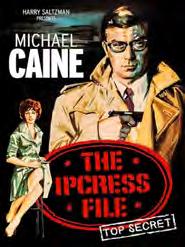

Perhaps you’d like something lighter? In that case, James Bond’s Thunderball may hit the mark. It’s the one with the jet pack and the eye-patched Largo. And for something wacky but with great music, there’s always The Beatles’ vehicle Help!
Now this was a year to remember! Thrills, chills, poignant performances, and plenty of laughs. First up is Tim Curry stealing the scenes as Frank-N-Furter in The Rocky Horror Picture Show. The film may be 50 years old, but it still sells out when performed live.
Then there’s Dog Day Afternoon, a tense hostage drama starring a young Al Pacino, who had already gained fame from The Godfather trilogy. Next, I’ve chosen One Flew Over the Cuckoo’s Nest, which rightly earned Jack Nicholson a best actor Oscar as the leader of a group of patients in a mental health institution. Nurse Ratched still freaks me out!


What better to make you jump than Jaws? Enough said! And for complete British silliness, we can’t forget Monty Python and the Holy Grail, which is packed with so many great lines: “Come back, it’s only a flesh wound!”
Dig out those shoulder pads and roll up your jacket sleeves as we dive into more great films! Back to the Future remains a must-watch today, with Michael J Fox travelling back to 1955 in a story with an Oedipus twist. In fact, the entire trilogy is one of the few where each instalment is spot on – making for a seamless story as a whole.
Whoopi Goldberg’s big-screen debut in The Color Purple was groundbreaking, offering a powerful portrayal of Black American life spanning 40 years, beginning in the early 1900s.


One of my favourites is Cocoon, a mixture of sci-fi, comedy and adventure. It does get a bit sloppy in places, but it’s a fun story. For a thrilling crime romance, you could try Witness, with Harrison Ford taking a starring role just after his skirmish in 1984’s Indiana Jones and the Temple of Doom. And let’s not forget one of the strangest yet thought-provoking films from the year: Terry Gilliam’s Brazil. It’s a real head-scratcher – you may need to watch it more than once.
For this year, I’m kicking things off with The Usual Suspects – a thriller with more twists than a Slinky. I won’t spoil it by revealing the identity of the mysterious crime lord, Keyser Söze.
Casino is another hard-hitting film. It stars Robert De Niro at his finest, and he is equally compelling in another of this year’s releases, Heat, where he stars opposite Al Pacino. Who’d have thought he’d go from this to adverts for Warburtons?


Being of a certain age, I was enthralled by the first computeranimated feature film, Toy Story, which fulfils every child’s fantasy of seeing their toys come to life.
One film I’ve grown into is Before Sunrise where Jesse meets Céline and they spend the night walking around Vienna, discussing their lives and futures. It features a lot of dialogue and isn’t one to watch if you’re distracted! A nod to Braveheart (though I’ve never been convinced by the casting) and Se7en if you like a bit of Brad Pitt!
James
Shapland BSc MRICS c..Build E MCABE Partner

Braving the elements to give the best advice to our clients, customers, and friends

Head of Farm Agency, Andrew Tuffin is an unrivalled expert in the business of buying and selling farms. Here he picks his highlights from Symonds & Sampson’s recent sales:

Kitwhistle Farm, Beaminster
170 acre commercial arable and livestock farm. Offered in 3 lots and sold well as a whole to a local estate.

Newlands Farm, Wellington
Poultry Farm comprising 4 bedroom modern house with an AOC, 3 operational poultry houses and 50 acres. Purchase included laying hens.

Hambledon Farm, Blandford
207 acres of arable and pasture land with good road frontage offered in 5 lots. 4 buyers, mainly local.


Gamblins Farm, Wellington
Touring caravan park in a popular and accessible location with 25 pitches and ablutions set in 15 acres. Sold in 2 lots by auction

Blue Violet, Speyton, Okehampton
2 bedroom cottage within a partially built extension, farm buildings in 25 acres of pasture and woodland. Sold by Auction well in excess of guide

Steaming, Blandford
13 acre smallholding with AOC bungalow. We conducted the probate valuation in 2010, advised since then and sold 14 years later on the morning of the budget.

Umborne Farm, Axminster
A 74 acre residential and livestock farm with Victorian farmhouse and cottage in a rural valley setting with the River Umborne meandering through the pasture land.
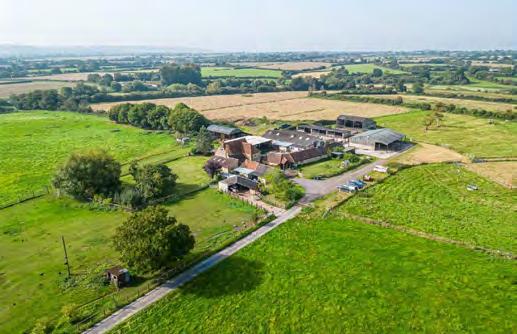
Great Thornham Farm, Melksham
A 120 acre ring fenced grassland farm including a period farmhouse, annexe and 3 bed lodge. SSTC.

North Gorley, New Forest
A timber poultry shed in 3.35 acres with commoners’ rights on the forest. 42 viewings and sold for 176% of the guide price.

they’re not making it any more
Will Wallis looks at who is buying land… and why

The government’s changes to Inheritance Tax in the October 2024 Budget have sparked plenty of debate in rural circles. The Labour Party hopes to raise £500m, which amounts to 0.22 per cent of the much-discussed £22bn ‘black hole’ in the UK’s public finances often cited by ministers.
The question we’re often asked is how this will affect land prices. The answer depends on the buyer. Will it be a working farmer, or an absentee investor previously looking to shelter money for future generations? Factors such as the size of the land and whether neighbouring farmers want to expand will also play a role.
Farmers face increasing pressures, including rising borrowing costs, inflation, volatile commodity prices, falling support payments and higher input costs. For working farmers, the most important question is the amount of profit they can generate from the land. If we continue to have extreme weather events and crops cannot be drilled, the profits – as well as the seeds – get washed away. On the selling side, the market depends on whether landowners need to sell quickly or are holding out for the right price. It’s a fine balance.

“These are complex and rapidly evolving markets, so expert advice is crucial”
Recent sales data from Symonds & Sampson hints at a shifting landscape. Smaller parcels of land are often bought for amenity or sentimental purposes – such as tree planting in memory of loved ones. Larger blocks, however, are usually snapped up by family farms looking to expand or diversify their holdings.
We’re also seeing rollover buyers – farmers reinvesting the proceeds of development land sales. Whether their land was sold for housing, commercial projects or infrastructure, many farmers stay rooted to the industry.
New trends are emerging too, with land being bought or leased for environmental purposes, such as nitrate offsetting and biodiversity net gain. These are complex and rapidly evolving markets, so expert advice is crucial.
It’s a time of change in the land market, with policy shifts creating both challenges and opportunities. Taking professional advice before making decisions has never been more important.
Will Wallis MRICS FAAV Partner, Auctioneer


Lucy Carnell outlines the key documents to organise before selling your farm to avoid delays and complications
e find that some clients are very organised and forward-thinking about selling their farms, but there will always be cases where the unexpected happens and timescales are tight. If you can plan ahead, all the better, and here are a few matters to consider, in no particular order:
Is the property registered?
We are still finding that some parcels of land are not registered with the Land Registry, and this can cause confusion over boundaries, especially when deed plans have old coloured plans made up from even older photocopied plans. Centimetre-wide markings for the boundaries can be confusing.
Has the property been properly registered?
We have known cases where land is mistakenly registered by the neighbour. It can cause issues and delays when it comes to preparing for marketing, especially if the neighbour wants to buy the land in question. It is always best to sit down with us early and check all parts of the farm. You may need your solicitor to produce statutory declarations, which all take time.
Do you have a good solicitor?
Rights of way for you and buyers of different lots
If the farm is being lotted, there may be cases where rights need to be granted for water to certain parcels. An easement may need to be drawn up by your solicitor.
Overage clauses
This should be considered and discussed at an early stage, as drawing up an agreement always takes time. When advertising, we need to know the exact terms of the overage, so all prospective purchasers are well informed.
Will your mortgage lender or local authority let you sell a part of the farm?
There may be a Section 106 agreement only allowing a sale of the farm as a whole, and the mortgage provider may want reassurance that there will be enough capital left to cover the loan. These organisations are usually extremely busy, and it can take time to obtain responses.
“Plan ahead if you can. If you can’t, we will always guide you every step of the way”
This is occasionally a problem if the farm has been in the same ownership for many years. The former solicitor may have retired or sold the business, and the firm does not have a suitable, or knowledgeable, agricultural solicitor. It is so important to instruct a solicitor with the right skill set and experience. Using a residential solicitor to sell a 200-acre dairy farm is never a good idea.
Getting the right paperwork together
We will go through a detailed property information form with you, as will the solicitor, but there will also be various bits of paperwork that will need to be found: planning permissions (especially the exact wording if there is an agricultural-tied dwelling), rights of way, wayleaves, Sustainable Farming Incentive agreements, etc. Having this paperwork organised and on hand will save time.
Do you have tenancies in place, and have the correct notices been served?
We quite often see verbal agreements: “They’ve said they’ll be out by the end of March.” Everybody prefers a written notice and agreement! In some cases, a sale cannot proceed without written confirmation. Always check your tenancy agreements and establish the notice periods that tenants require.
Have you taken proper tax advice?
A prudent seller will know what their exposure is to Capital Gains Tax and when any tax will be due to be paid. This should be budgeted through to mortgage repayments, early redemption penalties, and the monies required for a new dwelling. The advice, therefore, is to plan ahead if you can. If you can’t, then we will always guide you every step of the way.
Lucy Carnell BSc (Hons) MRICS
Partner
Ross Willmington examines the pressures reshaping rural life and what it means for the future of the countryside


There is a growing sentiment among many of England’s rural communities that they feel marginalised or even endangered. This feeling stems from a variety of social, economic and cultural pressures that have reshaped rural life over the past few decades.
Several factors contribute to this sense of loss:
• Urbanisation and development: The expansion of cities, new housing developments and infrastructure projects in rural areas have led to changes in the landscape and the character of the countryside. Plans to build on the green belt are alarming.

“ The countryside is increasingly viewed as a commodity valued more for its aesthetic appeal than as a living, breathing community.” ”
• Rising house prices and second homes: In many rural areas the popularity of second or holiday homes has priced many local families out of the housing market. This trend leaves some villages and small towns with hollowed-out communities, as homes remain vacant for much of the year, weakening the social fabric.
• Changes in agriculture: Traditional agricultural livelihoods have been under pressure due to changing global markets, increased mechanisation, the unsustainability of smaller family farms, and ever-increasing regulation. Many farms have been forced to diversify into non-agricultural ventures or sell up altogether. This has a ripple effect, weakening the wider rural economy and eroding the sense of identity tied to the land.
The closure of essential services such as primary schools, post offices, shops, doctors’ surgeries and village pubs, once the heartbeat of rural life where people gathered, has made country folk feel more isolated.
An influx of urban residents into the countryside, however, some able to work remotely, bring muchneeded new energy to rural communities. There are children to attend local primary schools and support for village activities and local businesses. Most integrate well into their chosen communities, although tensions can arise when there is a lack of understanding or respect for traditional rural ways of life.
In a broader sense, there is a fear that the very soul of the countryside is being lost, as commercialisation and development take precedence over preserving the landscape and culture that define rural England. The countryside is increasingly viewed as a commodity, a place to visit, valued more for its aesthetic appeal than as a living, breathing community.
For England’s country people, this sense of being endangered is deeply emotional. It’s about more than just economics or politics; it’s about the loss of identity, tradition and a way of life that has endured for generations. They fear that the countryside will become a place where they no longer belong, overtaken by external forces and reshaped by values that don’t reflect their own.
To preserve the character of rural England there must be recognition of the deep cultural value that country people bring to the fabric of this nation so that we can all enjoy this green and peaceful land.
Ross Willmington DipAgFM MRAC Partner 01297 33122 Axminster rwillmington@symondsandsampson.co.uk
Hazel Hoskin shares the story of the Dorset Sunflower Trail at Maiden Castle Farm, a community treasure raising thousands for charity

The Hoskin family has farmed Maiden Castle Farm for 35 years, running beef, sheep and arable enterprises. In 2021, the year eldest son Tom turned 18, the farm began hosting a remarkable fundraising event that has captured the hearts and imagination of the local community.
Tom was born prematurely at just 26 weeks and spent the first few months of his life in the Special Care Baby Unit at Dorset County Hospital. His mother, Hazel, wanted to give something back to the NHS and the hospital. She decided that a field adjacent to the lane between the town and Maiden Castle would be the perfect location for a sunflower trail. The first seeds were planted, and the Dorset Sunflower Trail has flourished over the past four years.
The Dorset Sunflower Trail has become a beloved part of the local community. Streets, shops, businesses and pavements are adorned with sunflowers during the season in support of the trail. In 2024, nearly 100 artists took part in plein air painting (the practice of painting outdoors), and there was a photography competition, storytime in the sunflowers, a trail run, sundowners, live music, a café, crafts, a quiz and a raffle to win the beautiful driftwood sculpture heart nestled among the blooms.
“There’s something about sunflowers that is just uplifting”
Hazel’s expectations were exceeded from the outset. In the first year, charging £5 for entry, she hoped the trail might raise a couple of thousand pounds. However, the trail opened shortly after the end of lockdown and immediately connected with the public, who not only relished the uplifting sunflower experience but also supported the worthy cause. Nearly £25,000 was raised.
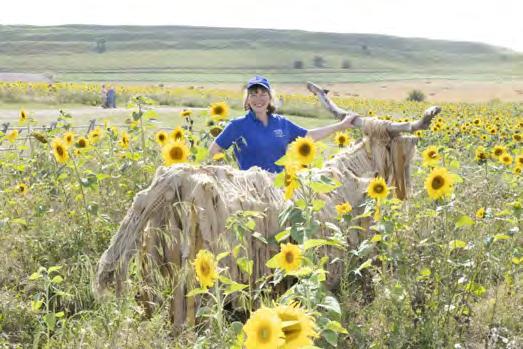
The weather hasn’t always been kind – planting was late in 2024, growing conditions were challenging, and the events schedule faced some last-minute adjustments. Despite this, everything came together for another exceptional year.
Thousands enjoyed the sunflowers, and over £16,300 was raised for Dorset County Hospital’s new emergency and critical care unit. As one visitor noted: “There’s something about sunflowers that is just uplifting; as soon as you arrive at the gate and see a field of sunflowers, it’s very hard to feel negative!”
While visitors get great joy from the trail, it’s also brilliant for wildlife, attracting pollinators and enriching on-farm biodiversity. It has also helped forge a positive bond between farmers and the local community.
Photo Captions
• Image 1: The winning photograph in the 2024 Sunflower Photography competition, taken by Dawn Butler.
• Image 2: Hazel among the sunflowers with the wonderful driftwood Highland cow created by Dan Wakeman, Driftwood Sculpture (@www.imadethis76.co.uk/).
Mentions
• Seven Springs Studios: www.sevenspringsstudios.com
• Maiden Castle Farm Sunflower Trail: www.maidencastlefarm.co.uk/sunflower-trail
Jack Edwards explores two villages forever changed by the echoes of evacuation during WW2


Imber and Tyneham. Two villages in two different counties inextricably linked by the word ‘evacuation’ during WW2.
Imber
Imber, near Heytesbury, is on Salisbury Plain in Wiltshire. The 150 villagers, with just 47 days’ notice, were ‘liberated’ from their homes in 1943 when American troops training for D-Day moved in.
The Ministry of Defence started buying the farms and properties in the 1890s to make Salisbury Plain the largest military training ground in the UK. Since the villagers were seen as ‘just’ tenants, it was easy for the authorities to gain vacant possession, but they assumed their absence would only be temporary until the war ended.

However, Salisbury Plain is a useful training ground, so the villagers were never allowed back. Even for visitors, the road through Imber village is rarely open, and all the buildings are used for urban warfare training. It has been especially useful for training during The Troubles in Northern Ireland.

There is an annual church service on St Giles’ Day attended by former residents, soldiers who have used the village for training, and the general public. Since 2009, the annual summer opening of the village has been served by Routemaster doubledecker buses on a scheduled service from Warminster, known as the Imberbus, which raises money for charity.
“Please
treat the church and houses with care; we have given up our homes where many of us lived for generations to help win the war to keep men free. We shall return one day and thank you for treating the village kindly”

Tyneham is another ghost village where time stopped in 1943. The village, situated between Wareham and Swanage near Worbarrow Bay, was evacuated by 225 souls and now remains part of the Armoured Fighting Vehicles Gunnery School, an important training establishment of the British Army. The village and 7,500 acres of surrounding land were requisitioned for use as a firing range for training troops. It shows how people rallied together at that time, as a notice was left on the church door: “Please treat the church and houses with care; we have given up our homes where many of us lived for generations to help win the war to keep men free. We shall return one day and thank you for treating the village kindly.”
You can still see some of the original buildings at Tyneham. The Row was four terraced houses, numbered from the higher end nearest the church. Both the restored church and school buildings are still intact and have exhibitions about the village and its residents. At Tyneham Farm, some of the outbuildings have been restored, and there is a picnic area.

Jack Edwards MRICS FAAV
Both villages are worth a trip, and it is worth stopping to consider what it must have been like to lose your home with nowhere to go.


Edward
Looking through a book on local history, I read about the court roll from the 16th century. There was mention of the assize, tapsters and people being ‘in mercy’. I had to dig further and find out what it all meant.
The Assize of Bread and Ale was a 13th-century law that regulated the price, weight and quality of bread and beer manufactured and sold in towns and villages. In rural areas, the statute was enforced by manorial lords who held tri-weekly court sessions.
It seems like a complicated mathematical procedure, as the weight of the bread was adjusted according to the price of wheat. If the grain price increased, the weight of the loaf was reduced. Similarly, with beer, the price of a gallon of ale was regulated with the cost of wheat, barley and oats.
The statute said: “When a quarter of wheat was sold for three shillings, or three shillings and four-pence, and a quarter of barley for twenty pence or twenty-four pence, and a quarter of oats for fifteen pence, brewers in cities could afford to sell two gallons of ale for a penny.” You can see why I’m scratching my head!

determined the fines and punishments. Other penalties included William Joyce, a miller, for taking excessive toll; various tenants who were in default of rent; and Thomas Butler (2d) for breaking the assize of bread. John Helyar had to scour the ditches by a lane and, if it was not done by the date of the next court, would be fined 20s. This was equivalent to 30 days’ wages for a skilled tradesman, so it was not insignificant.
“It was a tough time to be scraping a living from the countryside”
The court roll mentions many misdemeanours; a typical one would be: “Richard Fisshe (2d), Richard Chynock (2d), and John More (2d) were tapsters and sold beer in unstamped measures; therefore they are in mercy.”
A tapster, it may come as no surprise, is a person who draws and serves alcoholic drinks at a bar. ‘In mercy’ is still in use today and means the judge has the power to decide the punishment for the guilty party. I presume the 2d is the fine.
It would have been a busy time for the manorial lord as he
It is a fascinating insight into life at that time, when Henry VIII and subsequently Edward VI were on the throne. There appear to be punishments and payments for all sorts of things. Straying animals were prevalent – no barbed wire in those days – so hedges had to be maintained (3s 4d if not). There was a fine for overstocking a field (12d), and there was even a death tax payable (a ‘heriot’) to the lord, usually paid in livestock. One ox, value 26s 8d, was sold by the bailiff, which we may assume was a sort of estate auctioneer. The widow was usually allowed to stay at the farm, so long as she remained single; she would have had to choose her next husband carefully!
It was a tough time to be scraping a living from the countryside, and I am not sure it would have been for me!
Edward Dyke FRICS FAAV Partner
George Russo looks at the technology improving farm safety


It can so easily happen. You are rushing to get a job done and, in your haste, you forget a basic procedure and WHAM. Hopefully it will be small but it could be a major accident on the farm – one of the most dangerous industries in the UK. We are 21 times more likely to die prematurely because of working in farming and we must all be more vigilant.
We must ask whether technology can help prevent accidents especially through the maintenance and management of machinery. It could be as straight forward as visibility – is the tractor cab clean and all wing mirrors power washed to give full vision. Will cameras for reversing help or will the machines behind the tractor obscure and hinder the driver. Perhaps there should be 360 degree cameras or a radar system.
When we look at modern cars and their automatic brakes this may not work on machinery that will give a major jolt just from blades of grass or ears of corn.
What will most farmers do. Turn them off.
It is, however, not only the machines that can cause injuries. Farming is a hazardous industry. Farmers and farm workers work with potentially dangerous machinery, vehicles, chemicals, livestock, at height or near pits and silos. They are exposed to the effects of bad weather, noise and dust. The risks also include family members working at the farm and children living at the farm.
Agricultural work can also be physically demanding and the repetitive nature of the work causes a range of health problems, including severe back pain.
There are many courses online – it is just finding the time but investing a few hours and stopping to think may just save your and other’s lives.
Health and Safety Executive (HSE)
https://www.hse.gov.uk/agriculture/ hsagriculture.htm
Work Right
https://workright.campaign.gov.uk/ campaigns/agriculture/
Farm Safety Foundation
https://www.yellowwellies.org/
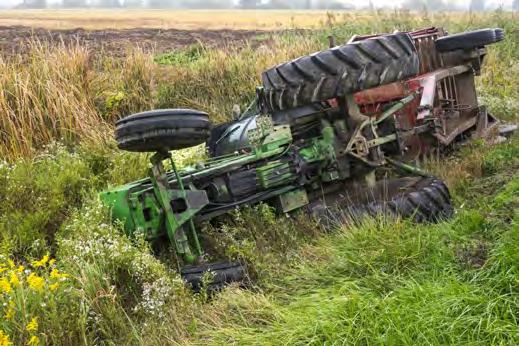

George Russo BSc (Hons) Graduate Rural Surveyor 01935 423526 Yeovil grusso@symondsandsampson.co.uk

Livestock markets have unrivalled competition when it comes to marketing store stock by offering competition, transparency, vendor control and guaranteed payment.
Our weekly Wednesday and Friday auctions thrive off the national shortage of livestock which has seen vendor’s expectations far exceeded and the resurgence of the value of livestock auctions. We have made several positive changes to the structure of the market and the business however we are pleased to say that what has not changed is our dedication to achieving the highest price for our vendors and offer the best possible service when marketing their livestock. We have a dedicated team of professional, experienced and friendly auctioneers and fieldsmen at Frome who specialise in providing a complete marketing service from on-farm advice through to aftersales feedback.


There is a social aspect to livestock markets. The market café is without doubt the social hub where farmers meet, network and share knowledge. Being a local farmer and caterer, Kate Isgar does a fantastic job in running The Market Café which has proved extremely popular on market days offering traditional homecooked food.
The health and wellbeing of farmers is important to us and we are pleased to facilitate an on-site Health Hub where farmers can make use of the weekly drop-in clinic with an NHS nurse or have the opportunity to talk about their mental health. 2024 in numbers:
Store & breeding cattle – over 24,000
head selling to over 308 buyers throughout the year with an average of 50 represented per week from all parts of the country.
Finished cattle – Over 2,500 head sold to 31 customers throughout the year.
Cull cows – Over 2,300 head sold to 18 customers throughout the year.
Calves – over 10,000 head sold to 207 customers throughout the year.

Reared Calves/stirks – over 3,500 head sold to 178 customers throughout the year.
Dairy cattle – over 1,200 head sold to 91 customers throughout the year.
Sheep – over 40,000 head sold to 186 customers throughout the year.
Pigs – over 7,000 head sold to 102 customers throughout the year

Bradley Towell, Store Cattle Auctioneer – 07496 263916
Lester Williams, Store Cattle Auctioneer – 07778 646031
Trevor Rowland, Store Cattle & Dairy Cattle Auctioneer – 07968 480401
Will Wallis, Pig Auctioneer – 07833 453482
Greg Ridout, Dairy Cattle Auctioneer – 07817 517467
Tom Rogers, Calf & Reared Calf Auctioneer – 07384 462288
Ross Whitcombe, Sheep Auctioneer – 07815 985737
Andrew Frizzle, Fieldsman – 07977 136863
Clive Peach, Fieldsman – 07970 620859

The Farm Sales department held 29 on-farm auctions in 2024 and the sales diary continues to fill up.
We hold the largest standing straw auction in the UK every year near Blandford. In 2024 the total sold across the 3 sales was in excess of 12,000 acres stretching from Lyme Regis to Reading and everywhere in between. Straw prices were at record levels with a top price of £192 per acre being paid for winter barley straw.
Dairy dispersals have been held on-farm and within Frome Livestock Auction centre, the highlight being Stuart Holland’s high yielding and very impressive Friesian herd finding new homes across the entire UK.
The region we are covering for machinery auctions continues to expand and we are regularly holding sales now in Berkshire and Hampshire, as well as Devon, Dorset, Somerset, Wiltshire and Cornwall. A John Deere X9 Combine was the first to be sold by auction in the UK since their release in 2021 selling for £233,000 on behalf of Chilbolton Down Farm Partnership.


Land Rover Defender 90 sold at a small evening sale in the summer for £11,400 making far more than expected and going to Ludlow

Online monthly collective timed auctions continue to grow and offer vendors the convenience of selling items from their holding without the need to transport to a sale field. These sales are held every 4-6 weeks during the year and contain lots including tractors and vehicles through to calf jackets and sheep shears!
Fodder sales continue to be held monthly travelling across the width and breadth of our area with wheat, barley, hay, grass and maize silage typically being traded. No matter how many bales or tonnes you have available, we endeavour to go above and beyond for both our vendors and purchasers.
For further information please contact: Greg Ridout – 07817 517467



Best View: For two completely different reasons, Hordle Manor Farm at Milford On Sea as one more field and there was a vertical drop off the cliff into the English Channel or The Chedington Court Estate auction on Beaminster Down taking in the unbelievable view.

Most rewarding sale: Peter Hasell’s at Kitwhistle Farm, Beaminster, a lot of the lots offered we had sold previously and still had the old lot numbers attached! We had children’s toys, garden equipment through to a super collection of Deutz tractors.

Largest Crowd: Moor Court Farm and Chilbolton Down Farm near Sparsholt with approx. 800 in the field and 500 online.

Third time lucky: We went back to Alan and Alexa Buckland’s 12months after their herd dispersal and initial machinery auction for their third and final dispersal.

Furthest Buyer: Poland – 1683 km
Furthest Auction: Warren Farm, Basingstoke – 72 miles

Wettest Sale: 28th March at Vale View Farm, West Stour for Nick Hudson where the farmyard flooded for the first time in his history of the farm!
Item the Auctioneer would like to take Home:
• Greg – John Deere 6R215 from Moorcourt Farm, Winchester – it was fully loaded with extras and absolutely immaculate!
• George: 28ft Livestock Trailer with Hydraulic Deck sold on behalf of Chedington Court Estate


Largest on Farm Sale of Cattle: Higher Kingston Farm, Dorchester on behalf of Hollands Farms Dorchester Ltd

Most Unusual Sale: Springdale Farm near Exeter including

• Paul -Volvo EC55B Pro Tracked Excavator sold at the Exeter West Collective Sale. There are so many things I could do with that at home!
• James – The wonderful mobile cattle handling unit at the Warren farm dispersal- The only issue is to afford the cattle to put through it

of an


A tremendous crowd descended on Sparsholt in Hampshire in October 2024 as our Agricultural Auctions experts held two significant dispersal sales on one day.


The dispersals held on behalf of the Chilbolton Down Farm Partnership and Moor Court Farm Partnership signalled a change in farming policy for the two operations.


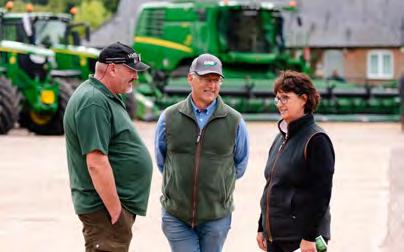



During the run-up to the sale, an outstanding catalogue of well-maintained, high-quality machinery had been advertised widely, and attracted great interest. In addition to machinery and equipment, the sales included a significant entry of sheep-handling equipment and workshop tools. At one point in the day, over 300 cars were parked at Moor Court Farm, and the highest-ever online following logged in to the sale — no mean feat considering that there was absolutely no mobile reception on site!







Auctioneer Greg Ridout reported a solid trade, mainly to the private sector, with machinery heading as far afield as Scotland, Ireland, and everywhere between.
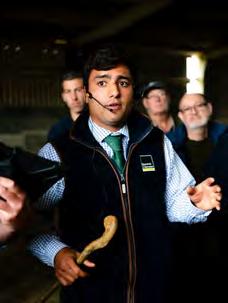

“Would-be purchasers are drawn to genuine dispersal sales of such well-maintained machinery and equipment, and it has been a privilege to conduct the sales on behalf of highly regarded farming businesses. Holding both sales on one day was a bold move. However, the tremendous on-field and online attendance resulting in strong trade on the day proves it was the right thing to do. I must credit the Symonds & Sampson team and members of both farming businesses, who worked incredibly hard to ensure the day went smoothly”.



James Morrish reveals the world of machinery auctions and the stories behind the sales


Selling a farmer’s entire range of machinery and tractors is always an honour. Whether it’s due to retirement, a change in policy, or a shift in career, these sales often represent a lifetime of memories – and, in some cases, several generations of work. Many items are deeply sentimental, like a trailer passed down from a grandfather, and every lot has a story to tell.
Preparation is crucial when organising and running machinery sales. A long-established auctioneer once told me: “Fail to prepare, prepare to fail” –and my word, he was right! Over the years, we’ve built strong relationships with buyers, often knowing who’s likely to bid. This helps us target the right people and ensure they’ve marked the sale date in their diary.
For collective sales, where items are either brought to a central location or offered online, we often hear comments like: “Isn’t it amazing where all this stuff comes from.” In truth, these events are the result of meticulous planning. Much of our time is spent visiting farms, photographing equipment, and documenting its history. Providing potential buyers with detailed information not only builds trust but also helps us achieve the best prices for vendors.
and full specifications provided. The volume of phone calls, texts and emails has increased dramatically, and our online bidding platform allows us to reach buyers across the UK and Ireland. Since many bidders rely solely on our descriptions, accuracy is paramount.
Recently, we’ve invested in a mobile auction rostrum that allows us to connect to the internet, even in remote areas, enabling real-time online bidding. It’s just another way we’re making sales more accessible and efficient.
We look forward to continuing this journey in 2025 and to helping you with your sales – and your stories.
3 March online collective
6 March collective fodder
25 March Blackdown Hills collective
29 April Mid Devon collective
5 May online collective
9 June online collective
“Fail to prepare, prepare to fail – and my word he was right”
Collective machinery sales are growing in popularity, and one of the highlights of 2024 was the sale in Newbury, Berkshire. The event attracted more than 800 attendees, with buyers from Northern Ireland, Wales, Cornwall and Kent. It was a great day, capped by a £43,000 sale of a New Holland tractor from the estate of a deceased rock band drummer.
The process has changed a great deal since I started, when adverts in The Western Morning News listed almost every item –right down to gates and rolls of barbed wire. Today, machines are photographed from every angle, serial numbers recorded,
21 July online collective
15 September online collective
27 October online collective
8 December online collective
More dates will be added so please check our website and social media
07415 438849
James
Morrish
Agricultural Auctioneer 01884 218911 Tiverton jmorrish@symondsandsampson.co.uk

Jack Edwards explores the vital role of seasonal migrant workers in UK farming and their impact on food security

As food security becomes an increasingly pressing issue, it is crucial to recognise the vital role seasonal workers play in the UK’s food industry. Without their efforts, supermarket shelves would sit empty, and crops would rot in the fields.
Seasonal workers are the backbone of the UK’s farming sector, enabling businesses to grow and deliver food to consumers. However, Brexit brought significant uncertainty for businesses reliant on overseas workers. For 2025, the government has confirmed the seasonal worker visa allocation: 43,000 visas for horticulture and 2,000 for poultry.
Labour shortages in 2022 underscored the stakes, with an estimated £22m of crops lost due to a lack of workers. Despite their importance, the contribution of seasonal migrant workers often goes unrecognised. These individuals support businesses to thrive and help feed the nation, often working long hours in difficult conditions, far from home comforts.
“Without seasonal workers, supermarket shelves would sit empty, and crops would rot in the fields”
Access to this workforce is essential for longterm growth in agriculture and to secure the nation’s food supply. While the government’s short-term commitment for 2025 offers some reassurance, a long-term strategy is urgently needed. Farmers and producers plan operations years in advance, not year-to-year, so greater clarity on visa policies and associated costs is critical. This is particularly important for small to medium-sized seasonal businesses that rely on affordable, predictable labour. The UK Food Security Index, published in 2024, revealed that the UK produces just 17 per cent of the fruit and 55 per cent of the vegetables consumed domestically – far less than for meat, dairy and grains.
While investment in robotic crop-picking technology is under way, a full rollout remains years away. In the meantime, seasonal workers must be recognised for their indispensable role in food production. Attracting and retaining talent in this workforce is critical to ensuring agriculture and horticulture thrive, and that quality British produce remains available on supermarket shelves.
Domestic interest in this type of work remains low, and automated technology is still in its early stages. As a result, the seasonal migrant workforce is vital to bridging the labour gap and ensuring the industry continues to function.
Jack Edwards MRICS FAAV Partner
Paul Heard investigates the celebrations in the West Country 80 years ago.

When I think about VE Day, images of Winston Churchill giving the victory salute to crowds in Whitehall, or sailors wading in the fountain at Trafalgar Square come to mind. Across the UK, it was with joyful relief that people celebrated the end of nearly six years of war.

Germany had signed an unconditional surrender, and our government declared Tuesday, 8 May 1945 a national holiday. In his speech, Winston Churchill said: “God bless you all. This is your victory. It is the victory of the cause of freedom in every land.”



There was, of course, still rationing – which would not end for another nine years – but that didn’t dampen the jubilant atmosphere. Street parties were held nationwide and, as the Dorset Echo
“Housewives were busy laying in stocks of bread, vegetables and tinned foods to feed the family while the shops are closed for the VE holiday. In business premises and in front gardens, lastminute touches were being applied to flagpoles and other fittings on which decorations were to be hung.”


Nigel Humphries, whose father founded South-West solicitors Humphries Kirk, now HK Law, recalled being in Weymouth at the time. The family lived in Swanage, but were staying at the Burdon Hotel on the seafront. He writes: “In the street below, the lights of Weymouth were on again, and they were thronging with people dancing, singing, cheering, shouting and crying with joy.
‘It’s over,’ they cried, again and again.
“We didn’t know what peacetime really meant, having been brought up in war-torn England, but the joy on their faces told us the great nightmare was over, and now was the time to celebrate.”
The Bridport News edition of Friday, 11 May 1945 rather excitedly described VE Day as “a victory greater than all of the victories of history, greater than all the triumphs of Alexander and Julius Caesar, of Saladin and Genghis Khan, of Napoleon and Wellington.”
Bridport was in a “triumphant mood” the paper reported, with the town bedecked in flags and bunting. The weather was “brilliantly fine” and crowds thronged the streets to see decorations “on a lavish scale”.
In Burton Bradstock, villagers enjoyed a fancy-dress parade outside the Three Horseshoes pub, dancing, and a thanksgiving service.

In Lyme Regis, a bonfire on the Cobb lit up the night, followed by a public dance. To mark the occasion, streetlights stayed on until midnight, with extra lights along Marine Parade.
In Devon, similar parades and parties were held. However, in cities like Plymouth and Exeter, which had been heavily bombed, the celebrations were tempered by the knowledge of lives lost and the ongoing war in the Far East. In Barnstaple, the North Devon Journal noted a mix of emotions: “Some people were hilarious with joy, others burst into tears as the pent-up feelings of over five war years burst forth. A soldier in battle dress found himself hugged and caressed by a matronly woman overcome with happiness at the thought that her soldier sons would soon be home again.”
Exeter saw thanksgiving services at the cathedral and other churches, alongside a military parade. In Plymouth, people gathered near the bombed-out ruins of St Andrew’s Church to hear Churchill’s VE Day speech before flocking to Plymouth Hoe to dance and sing. According to the Western Morning News: “There were upwards of 1,000 dancers, with perhaps 20 times that number looking on.”

“We didn’t know what peacetime really meant... but the joy on their faces told us the great nightmare was over, and now was the time to celebrate”

In Taunton, crowds fell silent at 3pm to hear Churchill’s official announcement relayed across Castle Green, accompanied by whistles from local GWR engines.
A further pause in festivities came at 9pm to hear the King’s speech, before celebrations continued into the night.
The definitive end of the war came with Japan’s surrender – 15 August was declared VJ Day and two days of national holiday were announced. The assumption that troops returned home immediately is a misconception. Much work remained to be done across Europe and the Far East. For millions of service personnel, reunion with loved ones, many of whom they hadn’t seen in over five years, would take months or even years.
VE Day marked a profound moment of relief and hope for the future. Yet, for a nation rebuilding from devastation, the journey to recovery had only just begun.
With thanks to the Dorset Echo, Bridport News and Southwest Heritage Trust
Paul Heard MRICS FAAV



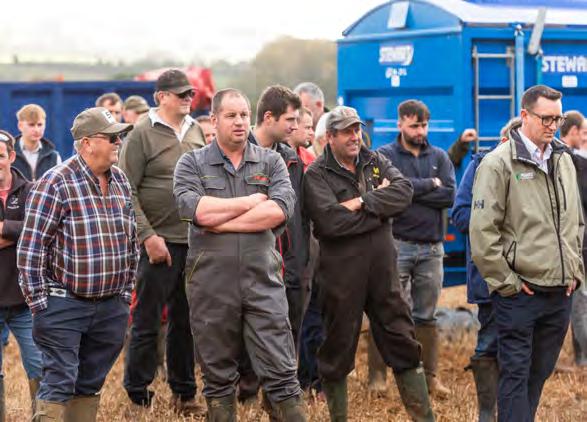



















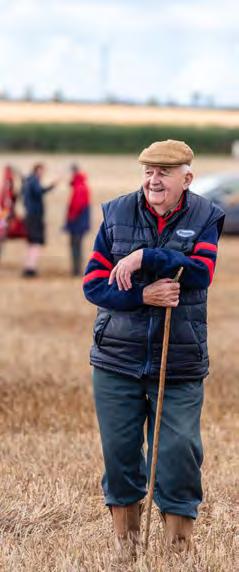
















The past, present, and future and what it means to your most valuable asset



One of the most significant decisions you will make when selling your property is choosing a property professional. This choice can mean the difference between a smooth, successful sale and a stressful, prolonged process. While flashy advertisements, sharp suits and promises of low fees might be tempting, the true value lies in the expertise, experience and comprehensive service offered by an established firm of chartered surveyors and property agents. Enter Symonds & Sampson.
Marketing and showcasing your property are just the beginning. A true property professional brings a wealth of knowledge and skills that go far beyond taking photos and listing a property online. Their in-depth understanding of the market, local trends and buyer psychology allows them to present your property in the best possible light, attracting the right buyers. This expertise is crucial in creating a compelling narrative for your home, one that resonates with potential buyers and highlights the property’s unique features and benefits.
value but also insight into the buyer’s motivations and the broader market conditions.
Local market knowledge provides a further edge. An agent who understands the nuances of your neighbourhood – such as upcoming developments, local amenities, school catchment areas and community dynamics – can significantly influence the outcome of a sale. By leveraging this knowledge, they can highlight the advantages of your property’s location to appeal to the right buyer demographic.
An agent’s connections within the community and the industry also offer added value. Their networks of potential buyers, investors and other agents increase your property’s exposure, while relationships with legal professionals help streamline the transaction process, ensuring everything progresses smoothly.
“The peace of mind that comes from knowing you are in capable, ethical hands cannot be overstated”
While it might be tempting to opt for the cheapest option or the most glamorous marketing, selling your home demands a professional approach. Firms of chartered surveyors and property professionals adhere to strict ethical standards, offering a level of trust and reliability essential for such an important transaction. They are accountable to professional bodies and bound by codes of conduct that prioritise your interests.
The sales process can be full of unexpected challenges, from tricky legal requirements to delicate negotiations. This is where a professional’s experience becomes invaluable. A skilled agent not only understands the legal intricacies of property transactions but can also navigate them with efficiency. They ensure you understand and comply with all necessary documentation, helping you avoid costly mistakes that could delay or derail a sale.
Negotiation skills are another critical asset. A seasoned professional knows how to manage offers and counteroffers, strategically positioning your property to secure the best possible price. This requires not only an understanding of your property’s
In contrast, agents who rely heavily on gimmicks or low fees may cut corners, potentially compromising the quality of service and your final selling price. The peace of mind that comes from knowing you are in capable, ethical hands cannot be overstated, especially when dealing with what is often your largest tax-free asset.
When it comes to selling your home, don’t settle for anything less than professional excellence.
Jon Summers MNAVA MNAEA Partner, Head of Agency
01305 251154 Poundbury jsummers@symondsandsampson.co.uk
When upgrading your property, balancing personal enjoyment with financial returns is key, says
Rickey Stoodley


layered, depending on factors like location, market trends and whether a buyer views them as an asset.
A swimming pool can transform your garden into a private oasis, perfect for relaxation and entertainment. Picture yourself lounging poolside on a hot summer’s day, hosting gatherings, or enjoying a refreshing swim whenever you like. Pools exude luxury, offering a unique space for exercise, unwinding and socialising. A well-designed pool, paired with stylish landscaping, can elevate your property’s overall aesthetics.
However, owning a pool is a significant commitment. Regular servicing, cleaning, chemical treatments and repairs can be both time-consuming and costly. Most pools in the UK demand at least weekly attention – checking water levels, cleaning filters, vacuuming, brushing walls and maintaining the water balance.

And tennis is not universally popular, so while a court may be a dream feature for some, it could be irrelevant – or even offputting – to others.
“Just enjoy them and hope a buyer is drawn to them as well”
Safety is another consideration. Families with young children or pets may view pools as a potential hazard. Then there’s the weather – the UK’s hit-and-miss summers can limit usage, diminishing the appeal and value of a pool for some buyers.
Tennis courts, on the other hand, are lower maintenance and often more versatile. Many courts can be adapted for other sports, increasing their appeal to a wider audience.
That said, courts require significant space, which may not be practical for all properties and could restrict landscaping options.
The added value these amenities bring to your home largely depends on your location and target market. In regions where outdoor living is a priority, swimming pools and tennis courts are often seen as must-have features that enhance property appeal and value. However, in the UK, their appeal – and the likelihood of a financial return on investment – can be less certain.
So, what’s the verdict? Are you going to use the pool or tennis court often? If you’ll enjoy them for five months or more each year, or if they’ll bring joy to your children or grandchildren, they’re worth considering. However, don’t expect to recoup your investment. Swimming pools can cost upwards of £40,000, including landscaping, while tennis courts are around £45,000. Ultimately, these features are about personal enjoyment. Just enjoy them and hope a buyer is drawn to them as well.
Rickey Stoodley MNAEA Residential Sales Manager 01297 33122 Axminster rstoodley@symondsandsampson.co.uk

Matthew Edmunds on a more affordable way for first-time buyers to gain a foothold in the property market

In today’s challenging housing market, getting onto the property ladder can seem impossible for many young buyers. Rising property prices, substantial deposit requirements and high mortgage costs often make homeownership feel out of reach. However, the shared ownership scheme offers a potential solution – a more affordable way for first-time buyers to purchase their first home.
Shared ownership is a governmentbacked initiative designed to help people, particularly young buyers, secure a home without needing to cover the entire cost upfront. Under this scheme, buyers purchase a share of a property (usually between 25 per cent and 75 per cent) while paying rent on the portion they don’t own. A housing association typically owns the remaining share, and buyers can increase their stake in the property over time through a process called ‘staircasing’.
Shared ownership also offers flexibility. Many housing associations allow you to staircase, meaning you can buy additional shares in the property over time. As you increase your ownership, the amount of rent you pay decreases. Ultimately, you can work toward owning 100 per cent of the property.
Selling a shared ownership property involves some extra steps compared to selling a home you fully own. Initially, the housing association typically has the right to market the property for a set period (usually six weeks) through their channels. During this time, the home will be listed on a local portal dedicated to shared ownership properties.
“Shared ownership helps people secure a home without needing to cover the entire cost upfront”
To qualify for a shared ownership home, buyers must meet certain criteria. These rules are designed to ensure that the scheme benefits those most in need of affordable housing. Typically, the eligibility requirements include:
• Your household income must be below a specified threshold (usually £80,000 or £90,000 in London).
• The property must be your primary and only home.
• You should not have the financial means to purchase a home that meets your needs on the open market.
One of the most significant advantages of shared ownership is the ability to start building equity in a property. While this may not be your ‘forever home’, shared ownership allows you to gain a foothold in the property market. For instance, if you’re paying £400 per month towards your mortgage, after five years, you could accumulate around £25,000 in equity, even before factoring in any potential appreciation in property value. This equity can later help you purchase a larger share of your current home or act as a stepping stone to buying a new home outright.
Before the sale, the property must be professionally valued by an independent surveyor, usually a member of the Royal Institution of Chartered Surveyors (RICS). This valuation is typically valid for three months, after which you may need to have the property revalued if it hasn’t sold. Once the housing association’s marketing period ends, the property can be listed on the open market with an estate agent. However, any potential buyer must still meet the shared ownership scheme’s eligibility criteria to ensure the sale complies with the scheme’s guidelines.
One frequent misunderstanding about shared ownership is that since you only own part of the property, you’re only responsible for part of the maintenance costs. In reality, as a shared owner, you are responsible for 100 per cent of the property’s upkeep and maintenance, just as you would be with a fully owned property. This includes repairs and general maintenance unless covered by warranties, such as the National House Building Council (NHBC) warranty, which typically covers structural issues for a set period after the home is built.
While it may not be suitable for everyone, shared ownership can provide a viable path to homeownership for those facing financial barriers in the current housing market.
Matthew Edmunds MNAEA
Residential Sales Negotiator
Join Jeremy Smith as he uncovers the story behind the window tax, a quirky chapter in British history that forever changed our buildings

As you stroll through a town or city, you might notice period buildings featuring sections of their façades where windows have been bricked up. This intriguing sight dates back to 1696, when a ‘progressive’ tax was implemented, making homes with more than 10 windows subject to a window tax.
The idea was that the poorest households, with fewer windows, would pay less tax. This was effective in rural areas, but failed to reduce the burden on the urban poor who lived in tenement buildings with many windows.
There was no specification on the size of the window opening, and even small larder windows were subject to the tax. As landlords were responsible for paying the tax, many windows were boarded up, causing significant health problems. The lack of ventilation meant air could not circulate as the buildings’ designers had intended, and the absence of natural light compounded the issue. Cases of typhus, smallpox and cholera rose dramatically, leading to increased mortality. But despite lobbying, the tax remained in place until 1851. This is where the phrase ‘daylight robbery’ originates.

S“Even small larder windows were subject to the tax”

o, who came up with the tax and why? The window tax was introduced during a time when income tax was viewed as too intrusive into personal affairs. But, faced with the financial strains of war against France, King William III sought alternative revenue sources. The window tax, despite not sparking the same outrage as the infamous poll tax of 1990, was highly unpopular. Its legacy is still visible today – just look around, and you might spot a few reminders of this quirky chapter in tax history.

Jeremy Smith MNAEA Residential Sales Partner, Head of Residential Sales 01935 423526 Yeovil jsmith@symondsandsampson.co.uk
Jon Summers, Head of Agency, explores the importance of material information in fostering trust and achieving smoother property transactions

As the property market continues to evolve, so too do the expectations for transparency and the quality of information provided by agents.
At Symonds & Sampson, our commitment to the highest standards of professionalism ensures that buyers and sellers are fully informed. By meeting the new requirements for essential material information, we promote trust and confidence at every stage of the property-selling process.
In today’s fast-moving and competitive market, material information refers to the critical facts about a property that could influence a buyer’s decision to purchase. These include:
• Property condition: Does the property require significant repairs? Are there ongoing maintenance issues?

Our approach to comprehensive material information is built on the principle that transparency is essential for successful outcomes for all parties.
• For sellers: Presenting clear and detailed information from the outset reduces the risk of unpleasant surprises that could derail negotiations or delay the sale. It fosters trust with buyers and helps transactions proceed smoothly, often resulting in stronger offers.
• For buyers: Access to detailed information allows buyers to assess properties more effectively before viewing, saving time and helping them make more confident decisions. Properties that fail to meet their criteria can be quickly ruled out, streamlining the process.
“Transparency is key to achieving the best outcomes for everyone involved in the property market”
• Legal and planning permissions: Are there restrictions, such as leasehold terms or previously refused planning applications? Are there future developments that could impact the area?
• Structural or environmental factors: Is the property in a flood risk zone? Are there concerns about subsidence, asbestos or other hazards?
These key details provide buyers with the information they need to make well-informed decisions.

As part of our commitment to excellence, we ensure full compliance with all relevant industry regulations. With increasing emphasis from regulators on the importance of transparency, it’s vital that both buyers and sellers understand what material information entails and why it matters.
By leading from the front, we ensure that our clients are wellprepared to navigate the ever-changing property market. Our proactive approach not only protects clients but also sets a benchmark for professionalism within the industry.
As property professionals, we know that a property’s value goes beyond its physical appearance or location. Providing a complete picture – including legal, financial and environmental aspects – is crucial for building trust and ensuring the smoothest possible transactions. By prioritising these elements, we enhance the experience for buyers and sellers alike.
If you’re considering selling your property and want to learn more about the requirements for material information, or how our market-leading strategies can help you achieve the best possible results, please contact your local Symonds & Sampson office. Our expert team is here to guide you through every step of the process.
Jon
Summers MNAVA MNAEA Partner, Head of Agency 01305 251154 Poundbury
Stuart Phillips looks at whether it is worth putting pen to paper


Aletter is put through your letterbox saying that a young couple have fallen in love with your property and, if you ever consider selling, to please give them a call. It is both reassuring and flattering to read – somebody likes your house as much as you do – and you feel great until you meet some other residents from the village who have all received a similar letter. The bubble bursts.
There is no harm in trying, and the old phrase ‘if you don’t ask, you don’t get’ is fair, especially when the potential buyer writes eloquently. Quite how keen they are once they hear the value of the property remains to be seen. It is amazing how interest fades away once money is mentioned.
If a property is so popular that we invite best offers by a certain date, we can often see gentle pressure from some buyers who tug at the seller’s heartstrings. Personal letters directed to our client and even a thick book put together online, with copious photographs of the potential buyer’s wedding day, children’s births, holidays and even testimonials from friends, are always worth a try. But do they really do any good, or is it only money that talks?
It depends on the client. An executor, especially one not related to the seller, will take a cold and detached view. Their job is to do the very best for the beneficiaries and they would be in breach of their duties if they sold under value just because the buyers sounded awfully nice. If any money is left to a charity, there may be a ruthless investigation, and the executor will have some explaining to do.
A single executor who is a child of the deceased may be swayed, however, and like the idea of the house being brought back to its former glory. If it has been in the family for a long time, the child may remember growing up there, and selling to the awfully nice people may happen.
I have seen some great letters: “I can imagine watching our children, Dorothea and Leopold, running around the garden, playing hide and seek and swinging from the trees,” or, “We have held back from having children, but we will fill the house with little ones and can’t wait to get started,” and even, “Your taste is exquisite, and we would not change a thing. It is just perfect. Our architect is so creative, and we feel sure you will love our plans.”
My suggestions, if you decide to write, are:
• Handwritten or typed? Only the former if your handwriting is copperplate and very legible.
• Keep the letter short but try to make a connection. Don’t share your life story – nobody is particularly interested –and keep any drama out of the letter. It is doubtful anyone will feel so sorry for you that it will swing the decision. It could go the other way and sound a bit desperate.
• Be very upbeat. Comments like, “We have missed out on so many houses,” may make the seller question whether you have enough money.
• Explain how you will purchase the house – cash and mortgage, inheritance, family loan, savings, etc.
• Never mention your plans for the house. “We’re going to tear down the walls, build a massive kitchen/living room and get rid of the poky bathrooms” may not win you the prize, especially if it is an emotional sale.
• Finish strongly. Put in something like, “Thank you for giving us the opportunity to make an offer for your property. We sincerely hope we will be safe custodians for many years to come.”
“It is both reassuring and flattering to read – somebody likes your house as much as you do”
Sellers who are very much alive may not be as sentimental. They might need the money for care fees or passing on to the next generation and could be as hard-nosed as an executor. Playing the right cards, therefore, and phrasing the letter carefully is very important. Know your quarry!
After all this advice, I must question whether writing a letter is truly worth it. I suppose the longer we live, the more cynical we become. We have seen people write begging letters offering a figure well off the pace; others who write and get their offer accepted, only to pull out of the sale for no particular reason. And worst of all, the many who confidently state that this will be their forever home. It never is!
Stuart Philipps MNAEA Residential Sales
Partner

People new to our area or just passing through often wonder about our unusual village names Steve Allen explains their origins
The name is a mix of Latin and Saxon, dating back to around 1102. ‘Ryme’ comes from ‘Rima’, meaning border or ridge –probably because of the range of hills to the south. In medieval times, there were two manors called Ryme. To tell them apart, one was called ‘In’ and the other ‘Out’, which were later Latinised to Intrinseca and Extrinseca – the latter linked to Long Bredy and Langton Herring.
With seven syllables, this one’s a bit of a mouthful. ‘Whitchurch’ comes from the Old English word ‘hwit’ for white. Regular readers may remember an article about Dorset’s flag and the story of St Wite, to whom the church in the village is dedicated. ‘Canonicorum’ means ‘of the canons’ and refers to its rectory being connected to the cathedrals of Salisbury and Wells.

Visitors often say this name like the Oxford college, but locals pronounce it as in ‘Mary Magdalene’. It means ‘the place of the five hides dedicated to (St) Magdalene’, who is also the namesake of the church.
This one’s easier to work out. The River Bovey runs through the village, and ‘Tracey’ was added in the 13th century after William de Tracey, the lord of the manor. He’s said to have rebuilt the parish church as penance for his role in the murder of Thomas Becket in 1170.

Once the port of the Manor of Budley Syon, the name comes from ‘Saltern’, or the Saxon ‘Sealter-tun’, meaning ‘town of the salters’. These were the people who worked the saltpans on the estuary, starting in Roman times. The name ‘Salterne’ still appeared on maps as late as 1831.
Named for ‘Ceola’, an Old English chieftain, this village combines ‘tun’ (farm) with Raleigh, added when the land passed to the family of that name in the 13th century.
This unusual name combines ‘episcopus’ – Latin for bishop – with ‘burh’, Old English for a fortified place. The name reflects its link to the Bishop of Bath and Wells.

The name breaks down to ‘cumb’ (valley or coomb) and ‘tun’ (farmstead or village). ‘Dundon’ refers to Dundon Hill, though why it’s included has been lost over time.
Recorded in the Domesday Book as ‘Micelenie’, this name means ‘the increasingly great island’. It once stood above the marshes in the Somerset Levels and can still be cut off by heavy storms.
The name comes from a grim hunting practice. ‘Lute-gar’ means ‘to lurk with a spear’ and describes pits dug with sharpened stakes to trap animals.
Previously called Ashlington, this name means ‘farmstead added on’. A trip up the hill here is well worth it for the stunning 360-degree view.
Though it sounds rather painful, ‘Wallop’ comes from the Old English ‘waella’ (stream) and ‘hop’ (valley). ‘Nether’ refers to its position as the lowest of the Wallops.
This name comes from the Cornish word ‘gwig’, meaning ‘forest village’. It’s been around since at least 1358. The Romans used its natural harbour and, by Elizabethan times, it was so busy it even had its own customs house.

Said to be the oldest town in Britain, Marazion is sometimes linked to the Jewish community. Its name, though, actually comes from the old Cornish word for ‘market’.

Steve Allen MNAEA Residential Sales Partner 01308 422092 Bridport sallen@symondsandsampson.co.uk
Will Tremlett explores a village book that offers a fascinating glimpse into local history
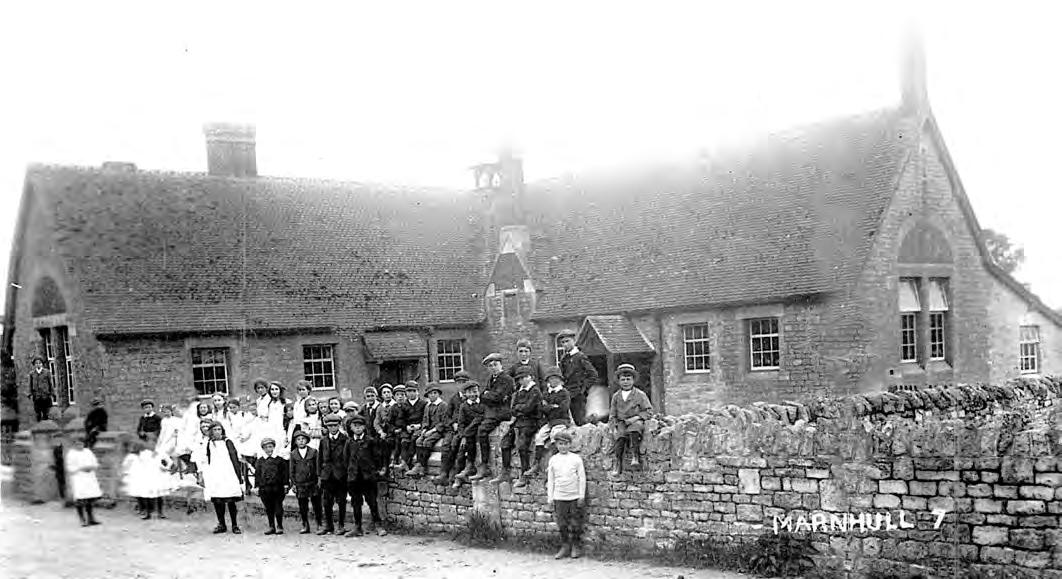

As the population has become more mobile and transient, roots have been lost, and genealogy, perhaps thanks to the internet, has become increasingly popular. We seek out our ancestors and try to understand who we are and where we have come from. People are equally curious about property, wondering what our towns and villages looked like and who lived in our houses.
New arrivals bring fresh perspectives to an area, and even those without links to a village can be curious and empathetic. Locals might say, “I remember when this was all fields.”
These words have been spoken and repeated through the generations as inevitable change comes to our beautiful countryside. But what did a village look like, and who bothered to make a record of it?

The book also features details about prominent villagers; one of the most intriguing accounts is of the Benedictine nuns who came to Nash Court as refugees from the French Revolution. They were treated with suspicion and even accused of concealing Napoleon Bonaparte!
There are records of sudden deaths, including four people who died in one week in 1808, all due to excessive heat. I’m not sure we can blame global warming for that one.

The book includes delightful rhymes about the neighbourhood that still hold true today:
“If Duncliffe Wood be fair and clear, You Stour Boys need have no fear; But if Duncliffe Wood doth wear a cap, You Marnhull Folk look out for that.”
“If you find a copy of The Marn’ll Book in a secondhand bookshop, it is well worth buying”
If you live in the Blackmore Vale in Dorset, The Marn’ll Book, produced in 1951 to coincide with the Festival of Britain, provides a snapshot of a moment in time.
Put together from an initial book by the Women’s Institute, The Marn’ll Book places the village in the context of the wider region, covering aspects such as towns, topography, early settlements, farming, churches and sport.
The more important houses are highlighted, not only for their size but often for their history and significance to the street scene. I often hear people say, “We’re not listed, thank goodness”, referring to their property not being designated a Grade I or Grade II listed building, but the protection of historic buildings for their special architectural or historic interest is vital for preserving an area’s character.
Symonds & Sampson, along with our forebears Senior & Godwin, have sold many of the properties in Marnhull. It’s one of my delights to visit a house featured in the book and reflect on its history.
A great deal has changed since the book was published, but perhaps I should leave the last word to the treasurer of the Marnhull Festival of Britain Committee, John Lochhead, who wrote: “We tread the same fields and lanes, look out on the same landscape. The actors come and go, but the scene remains.”
If you find a copy of The Marn’ll Book in a secondhand bookshop, it is well worth buying.
William Tremlett Sales Manager 01258

Adam Taylor shows his chivalrous side as he examines the shields that promote the counties in our region

Every
county has a coat of arms – a unique design symbolising the heritage of the area. But which county has the best one?
The classic golden dragons, with tongues poised to spit fire, wear Saxon crowns as collars and proudly hold a shield featuring the three lions representing England. There’s a fleur-de-lis, which also appears on the town shields of Dorchester, Bridport, Lyme Regis, Weymouth and Blandford, while the mural crown echoes the insignia of the Dorset Regiment.
The motto, ‘Who’s Afear’d’, was first adopted by the Society of Dorset Men in 1905 at the suggestion of its president, Thomas Hardy. It essentially means, ‘We aren’t afraid –bring it on!’
This is a flamboyant one, highlighting a rich and varied county. A Devon bull (for agriculture) and a sealion (for the sea) flank a shield depicting the red lion (representing the strength and authority of the King). Above it sits Sir Francis Drake’s ship, the Golden Hind, while above the shield rests a Naval crown – a nod towards the Royal Navy in Devon – with a Dartmoor pony rising above, bearing heather. Both inland and coastal communities are represented, and one can only wonder about the discussions that took place during the crest’s design.
The county motto is

and means ‘by divine aid’ or ‘emanating from God.’
Cornwall’s coat of arms also reflects its varied industries. A fisherman, sometimes bearded and sometimes not, holds a net over his shoulder, while a tin miner with a sledgehammer stands on the right. This symbolises the county’s great mineral wealth, industrial heritage and maritime connections. The shield also depicts waves and the great mystery of the golden roundels, or ‘bezants’ – a reference to the tale of the Duke of Cornwall captured by the Saracens during the Crusades. Cornishmen raised the ransom of 15 gold coins, or bezants, and this unity is celebrated in the inscription, ‘One and all.’

finds its place in a corner of the shield.
I particularly like the arms for West Wiltshire, which look much livelier. Two rams rise up, balancing on a cog and a wheatsheaf.
The famous white horse is present, and the blue squiggle represents a river.
I especially like the bustard with its claw on a grenade, symbolising the county’s link to the Army on Salisbury Plain. The motto ‘Know thy contree’ completes the design beautifully.

A chough, once prolific on the Cornish cliffs but now almost extinct, rises from the shield, resting a claw on a Ducal coronet, showing the link to the Duchy of Cornwall.

This coat of arms also tries to pack in as much history as possible. A stag and a red bull – each wearing a Saxon crown as a collar –rear up on either side of a shield, which features a dragon holding a mace. Both trample over grass with cider apples. A ram holding a Cheddar Pink (a flower that grows only on stony ledges in Cheddar Gorge) appears on top of a crown. The motto ‘Sumorsaete ealle’ translates to ‘All the people of Somerset.’
Finding the correct arms for this county was a challenge, and I almost went with one for West Wiltshire. The arms for Wiltshire Council feature the now-extinct bustard with elevated wings – which I assume denotes arrival rather than departure –sitting upon green and white colours representing the pasture and chalk downs. The striped field recalls the arms of Salisbury, while the trusty dragon of Wessex



Hampshire County Council approved this design fairly recently, in 1992. It features a lion rampant wearing a pendant of crossed swords, representing Winchester as the capital of Wessex and symbolising the county’s link to the Army. A stag, adorned with a crown and anchor, nods to the New Forest and the Navy. There are also plenty of roses, which date back to Agincourt, when the flower was granted by Henry V, and the castle reflects Hampshire’s role in defending the country. No motto, which is slightly disappointing. With thanks to heraldry-wiki.com
These colourful coats of arms are a great reflection of each county and represent the identity, history, and culture of our counties. They serve as symbols of pride, unity, and civic responsibility for their communities.
If you see better ones please send them along to me.

Adam Taylor Senior Residential Sales Manager

“It is always a treat to drive along this road, whatever the weather and time of year”
One of the most scenic avenues of trees can be found in Dorset. Neal Wilson enjoys the trip

When driving towards Wimborne from Blandford, the boundary of the Kingston Lacy Estate is clearly evident. After the village of Tarrant Keyneston, the road rises from the valley. At the crest of the slope, suddenly, the great beech tree avenue begins. Hundreds of mature, graceful trees flank the road all the way to Kingston Lacy Park, a distance of 3km.
William John Bankes planted the avenue in 1835 to create a natural gothic arch of beauty in honour of his mother, Frances. The beeches are fabulous any time of year, with sunlight flickering through the bare branches in winter or the full canopy in summer.
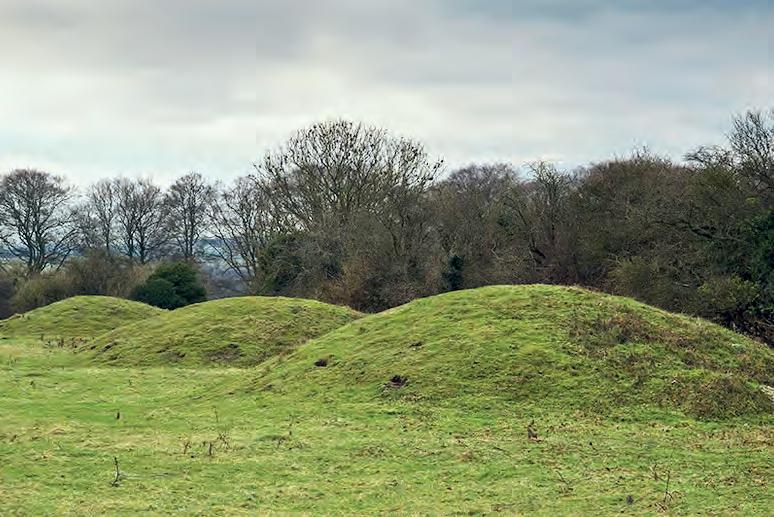
Round
are

On one side of the road, 365 trees were planted – one for each day in a usual year – and on the other side, 366, an extra tree for leap years. All nicely aligned and regularly spaced, but each using its 185 years of life to grow into its own unique natural form. The storms of 1987 and 1990 tore down many trees, but this violent natural act also revealed interesting archaeological sites: two Iron Age round barrows; Bronze Age pottery; a 3,000-year-old Deverel-Rimbury barrel urn; and a 1stcentury ballista bolt (an ancient missile thrower). It is always a treat to drive along this road, whatever the weather and time of year, and I’m delighted that the National Trust is doing all it can to maintain and preserve this iconic part of Dorset.

William John Bankes (1786 to 1855) was an explorer, Egyptologist and adventurer. His greatest discovery was the Philae Obelisk, which originally stood at the entrance to the Temple of Isis on Egypt’s island of Philae. Bankes had it transferred to Kingston Lacy, and the obelisk’s bilingual inscription helped with the decipherment of Egyptian hieroglyphs.
monuments. Most examples belong to
or
Deverel-Rimbury barrel urn: Bronze Age pot, usually more than 60cm high with a distinctive profile – wider in the middle than at the base or the rim. Often with applied cordons decorated with fingertip impressions.
Neal Wilson Residential Sales Manager 01202 843190 Wimborne nwilson@symondsandsampson.co.uk


Award-winning architectural and interior designer Ben Pentreath is renowned for his involvement in Duchy of Cornwall developments, including Poundbury in Dorset. In this interview, he reflects on his heroes, design philosophies and the lessons that have shaped his career.
Who is your architectural hero?
A difficult question – there are so many – but I can’t help always feeling a soft spot for John Nash. He reimagined London for the Prince Regent as a verdant classical landscape and he always looked incredibly happy in every image we know of him. He had fun and his buildings sizzle with that sense of delight.
What advice would you give to a would-be architect?
Remember that you carry on learning for the rest of your life and that if you are looking for the best answers on how to build in a given locality, you’ll probably find them all within 15 miles of the site.
Ben Pentreath talks inspiration, lessons and the future of architecture with Peter Grout-Smith
spaces, shops and employment – in a way that is completely unprecedented in the last 40 years in Britain and in its seamless delivery of social and affordable housing. These were revolutionary concepts at the time – and we have the King to thank, in particular, for the latter.
How do you believe Poundbury will be considered in 25 years’ time?
“A beautiful building becomes a long-lasting one –and a long-lasting building is a sustainable one”
What is your top tip for ‘kerb appeal’?
Good proportion, but concentrate also on the fine details. From the distance of the kerb, the small details really do matter.
Do you have a favourite era of housebuilding, or feature in housebuilding?
I have many building periods that I love in history – the drama of Jacobean architecture, the sheer perfection of the Queen Anne movement, the scale of the late Georgian vision, the humility of the Arts and Crafts. I like to draw deeply on all these and many more languages and periods and the one thing I’m not afraid of is copying. Originality is very overrated.
You have been involved with Poundbury since the original concept – what do you feel now when you see it as such an established development? What are you most proud of?
When Poundbury first began, I think everyone – even in the Duchy, really – thought of it as that small village in Phase 1. Now it’s become a living, breathing place. I’m most proud of the extent to which it has delivered mixed use – commercial
Already, Poundbury has been widely recognised for the astonishing achievement that it is. Twenty or even 10 years ago, I think it was fashionable to criticise the philosophy underlying the masterplan and the architecture of the town. Now, that has shifted. As it comes into its own, reaches scale and nears completion, I think it’s clear to see how this is a place where truly the whole is greater than the sum of the parts. However, with the dash for housebuilding delivery that we are now undergoing, I can’t help but worry that in 25 years, Poundbury will be considered a high point – a model of what could have been, but may not have been delivered. It’s complex and complicated and not easily replicable by the mass industrialised processes of the modern volume housebuilding industry. Time will tell.
The government has outlined ambitious plans for housebuilding. If you could ask Keir Starmer to abide by just one golden rule for development, what would it be?
This question relates to my last answer too. It would be to ensure that the individual houses that are built are beautiful. If you build a lot of something ugly, it becomes a very ugly place. If you build a lot of identical beautiful houses, it becomes a beautiful place –look at the great Georgian city expansions to understand that. A beautiful building becomes a long-lasting one – and a longlasting building is a sustainable one. I understand the dash for numbers, but let’s not repeat the mistakes of the 1960s and 70s all over again.
An English Vision: Traditional Architecture and Decoration for Today by Ben Pentreath is published by Rizzoli
Peter Grout-Smith MNAEA Senior Residential Sales Manager
One cottage industry has affected the lives of families in Dorset for more than 200 years. David Price finds it fastenating!

There are many stories about how Dorset became synonymous with the making of buttons, but it is believed to have started with Abraham Case and his wife, who set up a business near Shaftesbury in Dorset around 1622, taking advantage of the transition from doublet to coats.
The Dorset Horn sheep that grazed the Downs were a happy coincidence. The buttons were made from fabric, sheep’s horn, and thread, and the ‘high top’ was born: a thin disc of sheep’s horn as its base with a piece of linen pulled and twisted to form a firm conical shape. A flatter version was known as the ‘Dorset knob’. It was a vital business for local folk and, by the early 1700s, some 700 women and children were working for the firm. By the end of the century, around 7,000 were employed making buttons around Shaftesbury and Blandford.

An experienced buttoner could produce up to 72 a day, earning three shillings against nine old pence as a farm labourer. It was the perfect way to work from home, although some still worked the fields by day and made buttons by night. Although made locally, by 1850 they were exported all over the world, and an export office was opened in Liverpool, soon to be known as Cases Street.



The buttons were sorted on to coloured cards according to quality and the intended buyer: pink card for nobility and gentry; dark blue for the middle classes; yellow for lower classes; and black for general UK sales.
There were depots at Bere Regis, Milborne St Andrew, Sherborne, Poole, Langton Matravers and Tarrant Keyneston.
All went well until the Industrial Revolution and, once a button machine was exhibited at The Great Exhibition in 1851, the Dorset button industry went into a slow decline that devastated the area. Unemployment in Dorset was high, especially among the agricultural workforce, and the average farm labourer was one of the poorest paid in the country. This led many families to emigrate to Australia or America, and the buttoners had to move to new crafts such as needlework and glove-making.
There are still some people who keep the industry alive and, in
“Around 7,000 were employed making buttons around Shaftesbury and Blandford”
2017, the Heritage Crafts Association included button-making as one of its endangered heritage crafts.
If you drive around the area, however, you will still see a nod to the past. Look out for cottages called The Button Box, or visit Gold Hill Museum in Shaftesbury and see the buttons for yourself.
David Price MNAEA
Sales Manager

Dan Magee reflects on the highs and lows of learning the guitar – from opening notes to party performances

Ibegan learning the guitar after leaving the University of Lincoln in 2006. Initially, I struggled to find a job, so I decided that, rather than watching Homes Under the Hammer every day, I would put my time to “good use”.
I had always wanted to play the guitar and thought people who played were incredibly cool. What I hadn’t grasped was how difficult it was. I don’t come from a musical family and wouldn’t claim to have any natural musical talent, but what I did have was an awful lot of time on my hands.
The first thing I did was buy a guitar from a local music shop in Weymouth, along with a book to help me learn. This was before I realised that YouTube was a fantastic resource for beginners.

I started the journey by trying to learn songs rather than chords – not the best way to go about things, as it turns out! I decided to start big, tackling Metallica’s Nothing Else Matters. Anyone familiar with

this song will appreciate the complexity of its guitar work and immediately recognise it as unsuitable for beginners. However, the first part of the song is incredibly easy to learn, and I would sit for hours playing the opening notes over and over, much to the “enjoyment” of my family.
Learning the guitar is a slow and repetitive process, and I’m sure listening to me murder popular songs was torturous for those around me. Once I decided to focus on chords, I began to learn a variety of songs with varying degrees of success.
I was fortunate that my insanely talented friend Toby James, a local guitar teacher, was always on hand to offer advice, even though I never formally took lessons with him. (For anyone serious about learning guitar, I strongly recommend contacting Toby for lessons rather than winging it as I did.) He often suggested easier songs to learn, helping me to gradually expand my repertoire.
“I don’t come from a musical family and wouldn’t claim to have any natural musical talent”
The highlight of my guitar-learning journey was undoubtedly performing with my friend and former colleague John Wilson at a staff Christmas party. We played a short set that included my party piece: Little Lion Man by Mumford & Sons. If I’m ever at your house valuing and there’s a guitar lying around, I’m always happy to play it for you – for a small fee! Now, with two small children, I don’t have much time to play the guitar, but I still enjoy it when I can. I’d describe my ability as below average, and the title of this article reflects how I imagine my guitar feels when I pick it up!
Daniel Magee MNAEA Senior Residential Sales Manager 01308 422092 Bridport dmagee@symondsandsampson.co.uk

Penelope Hobhouse is one of the world’s most respected garden designers.
James McKay explores the timeless principles that define her work

Few people have had the honour of picking their eight favourite records for Desert Island Discs, but Penelope Hobhouse discussed hers with Sue Lawley in 1994. She is among a distinguished group of horticultural luminaries to make their selection, including gardener and broadcaster Geoffrey Smith, writer Anne Scott-James and, more recently, designer Dan Pearson as well as Alan Titchmarsh and Monty Don.
I always like to think of Penelope as one of our own – a true Somerset girl – but she was of Northern Irish descent and came to Somerset after marrying Paul Hobhouse. His family owned the Hadspen estate near Castle Cary, and the couple lived in a house in the grounds. Years later, on the death of her parents-in-law, they moved into the main house and Penelope set about transforming the eight acres of gardens. Looking though her many books, which test the sturdiness of my shelves, there is much to learn about gardening. A delve into her back catalogue is well worth it, and I recommend The Story of Gardening, Flower Gardens, and Colour in Your Garden. She writes so well that it all sounds easy. Here are some of her tips that I recommend:

about backgrounds
This is all about hedging and trees, and how you frame a garden. With vertical and horizontal lines, trees and shrubs can frame the sky and act as a ceiling.
Create a strong framework
The framework in question includes buildings, walls and steps, as well as plants. Looking at garden history, especially from the Italian Renaissance, is a good starting point.
Use colour, but don’t overuse it
Flowers are fleeting, so consider the shapes and hues of hedges and shrubs. The leaf forms of herbaceous plants provide their own colour throughout the season.
“It’s a bit like a guest list at a party – you don’t want too many people all of the same type and background”

Mix it up
It’s a bit like a guest list at a party – you don’t want too many people all of the same type and background. Choose plants that thrive in a particular spot and soil, but make sure they complement their neighbours.
Repeat, repeat, repeat
To create a seamless connection between home and garden, repeat elements of hard landscaping (such as fencing, walls, paths and patios) and soft landscaping (trees, plants and flowers).
Make sure it’s what you want
You’ll know where the sun is at different times of the day, so make sure there is shelter, scent and solitude. But don’t become a slave to the garden – enjoy it!
James Mckay MNAEA
Residential Sales Manager
jmckay@symondsandsampson.co.uk
Kirsty Simpson delves into the life of Emily Hobhouse, an English reformer, pacifist, social worker and humanitarian

Today, the world feels small, and travel is easy and relatively affordable. However, in 1899, journeying to South Africa was a long and arduous expedition; but it was a trip undertaken many times by Emily Hobhouse – a woman outraged by British foreign policy.
The Second Boer War (1899 to 1902) broke out when Britain rejected an ultimatum from the Transvaal, which called for arbitration to resolve disputes between Britain and the two Boer republics.
Hobhouse, originally from Cornwall, served as secretary for the women’s branch of the South African Conciliation Committee – a British organisation formed in response to the war to seek an early “peaceable settlement between this country and the Boer Republics”.
Through her role, she received information on how women and children were suffering in overcrowded, unsanitary internment camps (now referred to as concentration camps) built to incarcerate Boer women and children during the conflict. She worked to change the conditions, and her revelations turned public opinion against the war, exposing the camps as a national scandal.
Hobhouse returned to South Africa in 1903 to establish home industries aimed at rehabilitating Boer families affected by the war. Over the next five years, she focused on educating women and girls, appealing to the British public for funds to train individuals in spinning and weaving, and opening schools.
“No other woman was more loved and more loathed”

To Lord Kitchener she was “that bloody woman”, but to her friend Mahatma Gandhi she was “one of the noblest and bravest of women”.
Emily has a notable connection to St Ives, where she purchased a house, and to Hadspen House, near Castle Cary, the family seat of the Hobhouse family which she frequently visited. Hadspen House was sold by Symonds & Sampson in 2013 to Koos Bekker, a South African billionaire whose ancestors had been in the concentration camps. Bekker transformed the property into The Newt (named after the rare great crested newts found there) – a luxury hotel and spa.
Hobhouse was beloved by South Africans but spurned by the British public and politicians. She died in Kensington in 1926. Her ashes were ensconced in a niche in the National Women’s Monument at Bloemfontein, where she was regarded as a heroine. Her death went unreported in the Cornish press.
John Hall, her biographer, sums her up: “The mention of her name would bring an audience to its feet cheering and booing, and an appearance in the flesh guaranteed bouquets and missiles. No other woman was more loved and more loathed.”

Kirsty Simpson MNAEA Senior Residential
Sales Manager
01935 814488 Sherborne ksimpson@symondsandsampson.co.uk

Henley, Somerset Guide £700,000
A Grade II* Elizabethan Manor House set in a tranquil setting with far-reaching views.

Sutton Poyntz, Dorset Guide £995,000
A stunning Grade II Listed spacious barn with open country views.

A beautifully presented and spacious house situated on an exclusive private road.

, Hampshire Guide £925,000
A spacious house with outbuildings and paddock opening onto open New Forest countryside.

, Somerset Guide £800,000
An elegant period residence offering great potential, situated in an elevated position.


, Devon Guide £675,000
A charming 1920’s village house, tucked away yet close to the village and beach.

Somerset Guide £1,200,000
A much-improved Grade II house with a separate cottage and attractive gardens.

, Dorset Guide £1,100,000
A handsome Georgian residence with an integral cottage situated in the

, Dorset Guide £785,000
An imposing townhouse commanding an enviable position overlooking an attractive square.

, Somerset Guide £1,350,000
Grade II listed period home with two high-quality annexe/holiday lets.

Briantspuddle, Dorset Guide £850,000
A Grade II listed cottage in a secluded position within the Piddle Valley..

An exceptional country cottage with paddocks and pastureland set in a secluded location.

A first-floor apartment with breathtaking views over Greenhill Beach and Weymouth Bay.

A substantial, elegant Victorian house with tremendous potential and extensive grounds.

An impressive family home in a favoured location with a layout perfectly designed for modern living.

A stunning split-level barn conversion with adjoining annexe and far-reaching views.
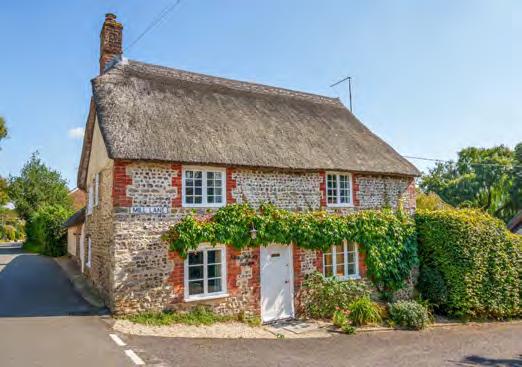

East Looe, Cornwall Guide £290,000
A stunning refurbishment/redevelopment opportunity with fabulous views.

Stourpaine, Dorset Guide
£600,000
A characterful Grade II listed cottage in generous gardens enjoying wonderful countryside views.


Martinstown, Dorset Guide
£325,000
A spacious terraced house situated in a peaceful position in the heart of the village.

Kilmington, Devon Guide
£550,000
A handsome cottage with impressive reception areas and attractive gardens.
We would highly recommend Symonds & Sampson as we had such a positive experience in selling our property and securing our new dream house. Professional, knowledgeable and friendly service from an agency we would use again & have already recommended to friends & family. –
Ms P

Very professional and knowledgeable team. Excellent communication throughout the process. We have been more than happy with the level of service provided and would have no hesitation in recommending the company–
Ms M

James Mckay makes a call into a great British landmark

When the venerated names of Sir Christopher Wren, or Nicholas Hawksmoor are considered, our thoughts are instantly transported to visions of opulent architecture and structural grandeur. However, there is another illustrious contributor, whose name is far less prominent on the architectural landscape! The person in question, is the late, great, Sir Giles Gilbert Scott. A talented architect, whose name deserves a far greater acknowledgment, for enriching some of Britain’s most iconic structures. It’s astonishing that his name doesn’t instantaneously resonate with the public, or meander its way to the forefront of our architectural appreciation. However, Gilbert Scott’s structural influences have permeated their way to the most far-flung corners of our island, whilst providing some instantly recognisable and iconic Real-Estate.
One of Gilbert Scott’s more prominent works is the controversial, yet colossal, Battersea Power Station. Once considered the engine room of London, this Grade 11 listed triumph was one of the world’s largest brick buildings of its time, boasting a lavish Art Deco interior, alongside its striking industrial exterior. I was first introduced to the name of Sir Gilbert Scott over a decade ago, when marketing apartments For Sale within the eponymously named, “Gilbert Scott Development” (a secluded block of residential apartments, positioned within an established walled garden, in leafy Southwest London). Situated within the confines of this salubrious development are an unexpected plethora of amenities, including a state-of-the-art gym, an elegant library, attractive manicured grounds, and a solitary Red Telephone Box! It was the latter that originally sparked my curiosity, and inevitably led me to discover, that the development was named after a distinguished 20th-century designer.
Sir Giles Gilbert Scott OM RA FRIBA (9 November 1880 – 8 February 1960) was a British architect known for his work on the New Bodleian Library, Cambridge University Library, Lady Margaret Hall, Battersea Power Station, Liverpool Cathedral, and the ubiquitous Red Telephone Box. Scott came from a family of architects, his father George Gilbert Scott Jr. was a co-founder of Watts & Co., which Scott eventually became the second chairman of. He was noted for his blending of Gothic tradition with modernism, making what might otherwise have been functionally designed buildings, into popular landmarks. I now look back on my time in London and often wonder what Sir Giles would make of the telephone box’s transformative use today! I imagine he would be amused, perplexed, and delighted to learn that his little red boxes that once housed the magic of communication, now occupy life-saving defibrillators, mini libraries, information booths, and anything arbitrary that villagers find a necessity!
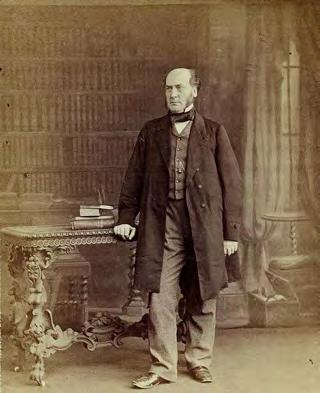
James Mckay MNAEA Residential Sales Manager 01935 814488 Sherborne
jmckay@symondsandsampson.co.uk


Bob Bickersteth from The London Office takes a break and saunters around the Royal parks
When we think of iconic places in London we may turn to Big Ben, The Houses of Parliament, Buckingham Palace or some of the shopping streets but if you want tranquillity and somewhere to retreat from the crowds the Royal Parks are a true delight.
The London Office is situated in St James Place near The Mall and we are fortunate to be, not only very central, but also close to two Royal Parks – Green Park to our west and St James’s Park to the south.
The Green Park was created in 1660 by Charles II as he wanted to walk from Hyde Park to St. James’s Park without leaving royal soil. He soon fell in love with his new park, taking a daily walk – or ‘constitutional’ – right here. In fact, that’s how nearby Constitution Hill got its name.
As you wander through the park, you may come across reminders of less peaceful days. There are three war memorials here – from the Canada Memorial in the east to the Bomber Command Memorial in the west. In the shadow of Wellington Arch, meanwhile, lie the Memorial Gates which pay powerful tribute to the five million people from India, Africa and the Caribbean who served in two world wars. The park is the perfect place for quiet contemplation.
St James’s Park is the most royal of London’s Royal Parks.
Shaped by generations of monarchs and bordered by three royal palaces, St. James’s Park is the home of ceremonial events in the capital. From royal weddings and jubilees to military parades and state celebrations – this is the park where history is made.
You’ll spot many famous landmarks in St. James’s Park – from sweeping Admiralty Arch to the ceremonial hotspot Horse

Guards Parade. Among the park’s diverse statues, you’ll see the statue of Queen Elizabeth the Queen Mother, adorned in a resplendent, plumed hat, a testament to regal elegance.
We appreciate that when you visit us you are looking for the best properties available from Symonds & Sampson but a wander afterwards into The Royal Parks can be a lovely way to finish your trip.
Bob Bickersteth MRICS Director TLO
Giles Wreford-Brown reveals the South-West’s priciest seaside spots, sharing what makes them special and how to fit right in


Top prices

We are fortunate to live and work in some of the best parts of the UK, especially as we market properties in both coastal and country settings. However, there can be significant price differences depending on whether you prefer surfing, sailing or simply a lovely view. Here’s our selection of some of the priciest locations, but you’ll need deep pockets!
£1,000 to £2,168 per square foot; expect to pay over £8m for the best properties.
What to expect
Top prices
£750 to £1,500 per square foot; expect to pay over £5m for prime properties.
What to expect
Away from the ‘front grid’, you’re likely to get homes built in the 1930s or 1950s that have been fully modernised and come with acres of grounds. Some families have been resident for decades, so the property could be on the open market for the first time in more than 50 years.
“Expect to see at least one celebrity”
A house built within the last decade, updated and offering waterfront access or a private jetty with boat hoist, indoor or outdoor swimming pool (often infinity), a studio, cinema room, home office, wine room and designer kitchen.
Is it worth it?
Known as ‘Millionaire’s Row’ – though perhaps ‘Multi-Millionaire’s Row’ would be more accurate these days – it’s not without its challenges. Properties with beach access face a busy road, especially at peak times when the ferry to Studland is running.
How to fit in
A sporty car with a personalised number plate is de rigueur, and anything parked outside Rick Stein’s under £80,000 won’t really cut it.
For something, cheaper try… Swanage, Boscombe or Southbourne.
Is it worth it?
Known as ‘Chelsea-on-Sea’, visitors flock to the town to enjoy the people-watching as much as the sailing. Expect to see at least one celebrity.

Top prices
£1,000 to £1,400 per square foot; expect to pay over £5m for River Dart views.
Most of the town has escaped the steel-and-glass rebuilds, and some properties have royal and Naval connections. The best will have waterfront access and private jetties with a slipway and boathouse. Gardens may be terraced, so be prepared for a steep climb to your front door.
Is it worth it?
One of Devon’s most popular and enchanting towns, it has been educating leaders since 1769. The feeling of history is palpable.
How to fit in
Be ready to host! The town is a draw year-round, but expect your phone to ring with friends wanting to cadge a stay

Top prices
£1,000 to £1,400 per square foot; expect to pay over £5m for river, creek and National Trust views.
What to expect

New-builds are keeping the local builders busy, complete with all mod cons. An outdoor shower for rinsing off wetsuits is essential. Keep an eye out for Gordon Ramsey jogging along the cliff tops, or David Cameron hoping someone recognises him.
Is it worth it?

Named as one of the 48 poshest villages in Britain, it’s quite a trek – five hours from London – and gained fame when William and Harry blew off some teenage steam at the Mariners pub.

Most of the town is in a conservation area, with prominent properties being Grade II listed. All are well-kept, with many newly refurbished and featuring landscaped gardens. Expect a private quay, and ownership of part of the foreshore.
Is it worth it?
Voted the best seaside town in the UK by Which? it is also known as ‘Britain’s St Tropez’.
How to fit in Barbours, wellies and old-school sailing gear abound, and be ready to make small talk with walkers, wildlife watchers and watersports lovers.
For something cheaper, try… Falmouth or Mousehole.
Top prices
A wetsuit is a must – you’ll need one for your paddle boarding and waterskiing lessons at the Camel Ski School, as well as
Top prices
£500 to £1,200 per square foot; expect to pay over £2m for sea views, with more for direct access to Porthminster beach.
New-builds are changing the views of the town, with some featuring swimming pools and hot tubs. Be mindful the town can become gridlocked and parking spaces are rarer than hen’s teeth.
Is it worth it?
Despite traffic issues, St Ives is charming, and the quality of the light has inspired many artists.
How to fit in
Embrace both your sporty and artistic sides. When you’re not surfing, windsurfing or waterskiing, be sure to visit Tate St Ives and explore the cobbled streets where artists sell their works.

£800 to £2,400 per square foot; expect to pay over £5m for views across the Camel Estuary to Padstow. What to expect
For something cheaper, try… Portreath.
If you want the sea views at a fraction of the price, consider exploring Weymouth, Portland, Falmouth, Exmouth, Sidmouth, West Bay or Swanage.
Angela Gillibrand

Does the name Mary Chudleigh ring a bell? You will be familiar with Emmeline Pankhurst, Florence Nightingale and Germaine Greer, but Lady Chudleigh may be new.
Mary was an English poet and feminist essayist who was born in 1656 in Winslade, Devon. After educating herself – she was an avid reader of theology, science and philosophy – she challenged traditional gender roles. Her strong views on the emancipation of women were well ahead of their time and fell on deaf male ears for centuries.
She married, at the age of 18, Sir George Chudleigh and it is assumed her husband inspired her to be outspoken, even if only in print. In his defence, he did not stop her publishing her views, so perhaps she was writing on behalf of other women. Another theory is that he dismissed her work, assuming nobody would take it seriously.
One of Chudleigh’s recurring themes is the hypocrisy of men who demand chastity and fidelity from women while freely indulging in libertine behaviour themselves. Her writings reflect a deep empathy for the plight of women trapped in unhappy marriages or denied opportunities for personal growth and fulfilment.
Her most famous poem, Ladies, critiques the unequal power dynamics between men and women and the domination they suffer from their husbands.


This witty but forceful poem, encouraging her sisters not to fear their husbands “as a God”, is reproduced here:
Wife and servant are the same,
But only differ in the name:
For when that fatal knot is tied,
Which nothing, nothing can divide:
When she the word obey has said,
And man by law supreme has made,
Then all that’s kind is laid aside,
And nothing left but state and pride:

Fierce as an Eastern prince he grows,
And all his innate rigour shows:
Then but to look, to laugh, or speak,
Will the nuptial contract break.
Like mutes she signs alone must make,
And never any freedom take:
But still be governed by a nod,
And fear her husband as a God:
Him still must serve, him still obey,
And nothing act, and nothing say,
But what her haughty lord thinks fit,
Who with the power, has all the wit.
Then shun, oh! shun that wretched state,
And all the fawning flatt’rers hate:
Value your selves, and men despise,
You must be proud, if you’ll be wise.
Her strong views on the emancipation of women were well ahead of their time”
It seems extraordinary that this was written over 300 years ago, and yet there are countries around the world where women are still without a voice. Even in the UK, there is still progress to be made. We must remember pioneering women like Mary Chudleigh. Her writings reflect her belief in the importance of women’s autonomy and self-determination – ideas that were radical for her time. She deserves to be applauded and perhaps given more recognition. Her courage and insight should inspire readers even today.
Angela Gillibrand
BSc(Hons) MNAEA
Sales Manager



2025 will mark a historic moment for Dorchester, as Sylvia Townsend Warner is immortalised with a statue as part of the Visible Women UK campaign, formerly known as Dorchester Sheroes.
Sylvia was chosen through a public vote in the town to honour women whose stories are seldom told. She will become Dorchester’s first nonroyal statue of a woman, joining six statues of men, including notable writers Thomas Hardy and William Barnes. But who was Sylvia Townsend Warner, and why is she so iconic?
Born in 1893, Sylvia was a celebrated poet, novelist and musicologist. Her works often explored themes such as rejecting the church and championing female empowerment and independence. She fell in love with the poet Valentine Ackland, and the two settled at Frome Vauchurch near Dorchester.

Caroline Childs-Chaffey celebrates the commemoration of a gay rights pioneer

One of Sylvia’s best-known novels, Lolly Willowes, tells the story of a middle-aged spinster who moves to a country village to escape her controlling relatives and takes up witchcraft. Set in the Chilterns rather than Dorset, the satirical tale includes the memorable line: “Women are like sticks of dynamite, waiting to explode.”
Sylvia’s writing suggests all women are witches at heart, even if they never use their powers: “They know it’s there – ready!”
After her death in 1978, Sylvia’s ashes were buried with Ackland’s at St Nicholas Church, Chaldon Herring.
“Sylvia lived her life as her true self, something many still find impossible due to prejudice and ignorance”

Charity trustee Anya Pearson, whose previous campaign led to a statue of fossil hunter Mary Anning in Lyme Regis, noted that Dorchester’s monuments previously consisted of “six men, one dog, a queen and a horse”.
Announcing Sylvia Townsend Warner as the winner of the public vote, Pearson said: “Sylvia lived her life as her true self, something many still find impossible due to prejudice and ignorance. She is a modern-day role model, allowing young people to see themselves in what she achieved all those years ago.”
Author Tracy Chevalier, a patron of Visible Women UK, added: “When people think of Dorset writers, they tend to think of men – Thomas Hardy and the poet William Barnes. That’s why I’m so delighted there will be a statue of Sylvia Townsend Warner, who spent most of her life in Dorset.”
The statue, designed by sculptor Denise Dutton, depicts Sylvia seated on a bench with one of her cats. The cat is modelled on a well-known local feline named Susie.
Caroline Childs-Chaffey MNAEA
Residential Sales Manager 01308 863100 Beaminster
ccchaffey@symondsandsampson.co.uk
Might your land, barns and buildings have development potential?
Do you have a site you are considering selling?
Symonds and Sampson have the experience and knowledge to guide you from an initial enquiry through planning to the point of sale. We look forward to hearing from you.

Stalbridge, Dorset
Residential development land with outline planning permission for up to 160 dwellings.

Mudford, Somerset
Residential development site with prior approval for conversion/construction for 12 dwellings.

, Somerset
Residential development site with detailed (FULL) planning permission for the erection of 7 no. dwellings.

Petherton, Somerset
A residential development site of 0.61 hectares/1.50 acres with proposed accommodation to be 4 detached houses.

A building plot with outline planning permission and extending to 0.23 acre. The site is located on an elevated position and enjoys lovely rural views to the rear.

A development site with FULL planning for 7 units (5 detached houses and 2 semi detached houses) totally 703 square metres or 7,567 square feet of proposed accommodation.

Planning permission for 2 detached dwellings in 0.66 acres.

A rare opportunity to purchase a development site for 3 dwellings with further opportunity to increase subject to all necessary consents.
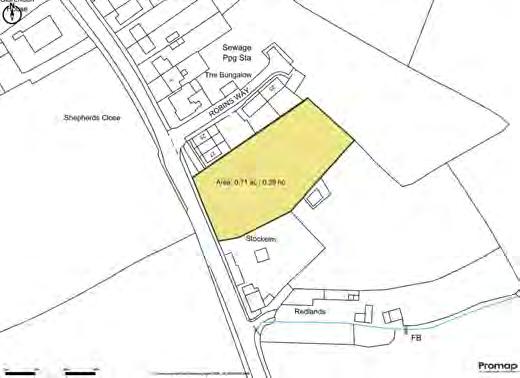
Planning permission has been granted for 9 dwellings with parking in a former orchard.

An elevated site with consent for a detached house close to the town centre.
A selection of varying styles/sizes of high specification and quality new homes throughout the stunning countryside, villages and towns across the region.

Poundbury, Dorset Guide £950,000
A 4 bedroom house with a south-west facing garden, double garage and parking, situated close to amenities.
Developers: C G Fry & Son.

North Cadbury, Somerset Guide £550,000
An impressive house within a development of just six highspecification properties forming an attractive courtyard in a sought-after South Somerset location.
Developers: Woolavington Homes.

Dinnington, Somerset Guide £725,000
A characterful converted barn with spacious and versatile accommodation, set in gardens of approximately 0.25 of an acre backing onto open countryside.
Developers: McGill Construction Services.

Chickerell, Dorset From £525,000
An exclusive development of 6 detached bungalows and 2 detached houses forming a select cul-de-sac in a convenient position close to Weymouth town.
Developers: Nord Homes Ltd.

Marnhull, Dorset OIRO £525,000
The last remaining house in this exceptional development. An attractive detached house built of local Marnhull stone with well laid out accommodation.
Developers: AMB Developments Ltd.

Nottington Park, Dorset Guide £565,000
A detached 4-bedroom house forming part of an exciting development of around 340 two, three and four bedroom dwellings in an attractive location close to Weymouth.
Developers: C G Fry & Son

Sturminster Marshall, Dorset Guide £425,000
A luxurious newly built house completed to a high specification and forming a close of just 5 properties in this pretty village in the Stour Valley.
Developers: Harlequin Homes.

Spetisbury, Dorset Guide £450,000
A stylish new house with generous living areas and a sizeable garden, forming part of a cul-de-sac close to the centre of this sought after village.
Developers: Addis Homes.

Sturminster Newton, Dorset From £375,000
An outstanding development of 9 individual barns all converted to an exceptionally high standard and forming a traditional courtyard within the Dorset countryside.
Developers: Plumber Court.

Compton Dundon, Somerset From £350,000
A small development of detached and semi-detached houses nestling in a quiet backwater close to Street, Somerton and Glastonbury.
Developers: Smith Carpentry & Construction.
Enquires also welcome for an exciting and diverse range of new homes throughout the region due to be launched during 2025.



Imay have inherited several things from my grandmother, Nanny Holland. Born Gertrude Heidi Freiburghaus in 1918 in Olten, Switzerland, she came to England as a young au pair to work at Knapp Farmhouse, Preston Plucknett, Yeovil. There, she fell in love with Frederick Stanley Holland, a Co-op insurance salesman. Married in 1938, they started their family amid the chaos of the Second World War, enduring bombs aimed at the Westlands factory while Grandad was sent to prison as a conscientious objector. He later served on the ground crew of the Dambusters.
The pair went on to become Mayor and Mayoress of Yeovil in their later years. Like many of us, I wish I’d been old enough to ask them more about their extraordinary lives.

Georgie Wakinshaw on her family’s connection to Ferne Animal Sanctuary
And this is where Bruce enters the story. Bruce was one of the first dogs adopted from Ferne by Nanny Holland, followed by a string of beloved family dogs, immortalised in old photos taken at Watercombe Lane and Westbourne Grove, Yeovil.
Ferne Animal Sanctuary relocated to its current 72-acre site near Wambrook, Chard, in 1975. Today, it provides refuge for over 300 animals, including many that will stay there for the rest of their lives. Imagine our delight when, on a recent visit with our son, we spotted a photo of Nanny and Bruce proudly displayed on one of their information boards. If only Nanny could see how far her legacy has travelled.
“Ferne provides refuge for over 300 animals, including many that will stay for the rest of their lives”
Three memories of Nanny linger in my mind. Standing in her dining room in Cambridge Close, Yeovil, aged perhaps two, listening to the Radio 4 pips and classical music. Tinkering with a toy fork and spade that sat on the window ledge of her porch with an array of houseplants. And, most vividly, her love of animals. Somehow, before the war, Nanny struck up a friendship with the Duchess of Hamilton. Nina Douglas-Hamilton (1878 to 1951), a British peeress and animal activist, is best known locally for establishing Ferne Animal Sanctuary. Horrified by the so-called British Pet Holocaust – in which an estimated 750,000 pets were euthanised in just one week at the outbreak of the Second World War – she founded a sanctuary at her home in Ferne, Dorset. Staff rescued pets from the East End of London, and she even apologised to her Dorset neighbours for the incessant barking.

Our family’s love of animals started with Nanny. My sister fondly remembers snuggling as a toddler with two enormous Great Danes, Nina and Pippa. They were preceded by Cleo the collie-cross, Lucky the ‘Heinz 57’, and an assortment of cats. Nanny couldn’t resist a sob story.
My parents have continued to support Ferne through their Friends of Ferne scheme, and over the past 23 years, we’ve adopted several feline companions ourselves. There was Lily, who lived to an impressive 21 years, and now Larry Lauda, who keeps the rodent population near Ilminster firmly in check.
When I’m 80, I’m convinced I’ll be a crazy cat lady with 342 feline companions. So yes, I did inherit something from Nanny and Grandad. Alongside Grandad’s piano came a love of music and a distaste for confrontation. From Nanny came green fingers and an enduring obsession with all things feline. Nature or nurture? Perhaps a bit of both. With rising costs, Ferne Animal Sanctuary needs support more than ever. You can find out how to help at ferneanimalsanctuary.org.uk.
Georgie Wakinshaw BSc (Hons) MNAEA Senior Residential Sales Negotiator 01460 200790 Ilminster gwakinshaw@symondsandsampson.co.uk
Andy Wakinshaw dusts off the vinyl, cranks up the 8-track and fires up the CD player to revisit some great tunes


What was the best decade for modern music? A look back at the charts from 1965, 1975, 1985 and 1995 might offer some clues. Many songs from these years have stood the test of time, still sounding as fresh today as they did back then. They all evoke memories, and are great to belt out when the mood strikes. Definitely worth adding to your playlist. Enjoy!

1965 takes some beating. Just consider these classics: I Can’t Help Myself (Sugar Pie, Honey Bunch) by the Four Tops; (I Can’t Get No) Satisfaction by The Rolling Stones; You’ve Lost That Lovin’ Feelin’ by The Righteous Brothers; Help! by The Beatles; I Got You Babe by Sonny and Cher; Stop! In the Name of Love by The Supremes; What’s New Pussycat? by Tom Jones; Like a Rolling Stone by Bob Dylan; California Girls by The Beach Boys; and Nowhere to Run by Martha and the Vandellas. What a lineup!

In 1975, an estimated one billion people tuned in to watch Muhammad Ali defeat Joe Frazier in ‘The Thrilla in Manila.’ And the music of that year was just as electrifying. The legendary Bohemian Rhapsody by Queen still stands as one of the most famous songs of all time. Steve Harley and Cockney Rebel’s Make Me Smile (Come Up and See Me) had everyone on the dance floor, while Jive Talkin’ by the Bee Gees brought disco fever. Other unforgettable tracks included Fame by David Bowie, Love is the Drug by Roxy

Music, and Sailing by Rod Stewart. There were also classics like No Woman, No Cry by Bob Marley, and I’m Not in Love by 10cc.

Fast forward to 1985, when power dressing was in and HMV was the go-to for music lovers. The charts were packed with iconic songs such as Alive & Kicking by Simple Minds; Money for Nothing by Dire Straits; We Don’t Need Another Hero (Thunderdome) by Tina Turner; Raspberry Beret by Prince; Everytime You Go Away by Paul Young; and wedding-day favourite Saving All My Love for You by Whitney Houston. Madonna’s Crazy for You and Grace Jones’ Slave to the Rhythm also made their mark. And Kate Bush’s Running Up That had its first airing. The track would experience a resurgence years later and become the UK’s song of the summer in 2022 after being featured in the Netflix series Stranger Things
“Whatever the year, the songs all evoke memories and many are worth belting out”


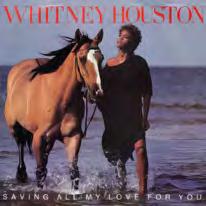



I glanced at 1995 expecting to see songs that didn’t resonate with me, but I was pleasantly surprised. That year gave us Roll with It by Oasis, while their Britpop rivals Blur released Country House Shaggy’s Boombastic never fails to make me smile, while Gangsta’s Paradise by Coolio remains a cultural touchstone. Other notable tracks from that year include Fairground by Simply Red; Kiss from a Rose by Seal; and Back for Good by Take That – a firm favourite among teens at the time.

Andy


Wakinshaw MNAEA Partner
01460 200790 Ilminster
gwakinshaw@symondsandsampson.co.uk
George Rogers offers insights into the region’s commercial property market and its resilience in the face of economic challenges


Despite the ups and downs of the UK and global economies, the SouthWest commercial property market continues to provide opportunities for both occupiers and investors. Over the past 12 months, inflation has fallen closer to the Bank of England’s two per cent target, which has contributed to ‘real’ income growth and bolstered business and consumer confidence. This improving scenario has eased financial pressures on many SME and regional businesses, fostering a renewed sense of optimism.
As we look ahead, several factors are shaping the market’s prospects:
• Inflation reduced in line with the Bank of England’s two per cent target.
• Real income growth has supported improved business and consumer confidence.
• The Bank of England is expected to maintain a cautious approach.
The office sector has demonstrated a notable bounce back throughout 2024, with quality premises and prime locations being a key focus for occupiers. The shift towards hybrid working arrangements has continued, with properties offering flexible occupancy options remaining highly sought-after.
some areas. Food retail and takeaway businesses have performed particularly well, supported by the rise of click-and-deliver outlets.
Traditional retail premises have often needed to adapt, with upper floors being repurposed for residential use to meet the strong demand for housing. Overall, the retail sector remains cautious, with businesses focused on converting consumer confidence into stronger sales performance.
In contrast, the industrial sector has shown resilience to wider economic pressures and continues to experience robust demand across all property sizes, particularly for well-located, modern premises. The rise of hybrid/small business units has driven average rent increases of 10 to 15 per cent over the past two to three years, with strong levels of occupier and freehold demand.
That said, there are emerging concerns about potential oversupply in some light industrial sub-markets, which may lead to a slight easing of rents in the coming months as availability catches up with demand.
“This could be advantageous for both occupiers and investors, helping to
stimulate activity”
The availability of modern office space across the region remains limited, as many older buildings have been repurposed for residential use. A recent highlight for our team was successfully negotiating lease renewals for approximately 12,000 sq ft of office space in Yeovil, achieving a 20 per cent uplift on passing rents for our client.
The retail sector continues to face significant challenges due to shifting shopping trends and online competition. However, there has been a notable return to high streets and market towns in
Market sentiment across the mainstream commercial sectors remains cautiously optimistic. Economic forecasts suggest a return to pre-pandemic averages, and new policy changes introduced by the Labour government, particularly planning reform commitments, could present further opportunities for commercial property owners.
Collectively, this could be advantageous for both occupiers and investors, helping to stimulate activity across the South-West region.
If you would like to discuss any commercial property matters further, please feel free to contact one of our experts based in our Dorchester (01305 261008) or Yeovil (01935 423526) offices
Neville Thorner discovers that Devon has produced some of the UK’s bestloved comedians


Peter Cook
When most people think of Devon, the first thoughts are of thatched cottages, long sandy beaches, and cream teas (the proper way – cream before jam).
A bit of delving, however, reveals a rich seam of comedy, and it’s clear that Devon has been a breeding ground for great comedic talent.


Peter Cook, born in Torquay, was one of the sharpest wits of his generation. With family roots in Devon tracing back to 1440, he came from a wellheeled background, attending Radley College in Oxfordshire. From there, he seamlessly transitioned to Cambridge University, where he joined the prestigious Footlights comedy troupe. There, he wrote sketches and performed alongside Jonathan Miller, Alan Bennett and, of course, Dudley Moore. His love of Devon was never lost, and he married his third wife in Torbay. Blue plaques in the town and at Torquay United ensure people still remember where he started.

Dawn French
Dawn French has strong connections to the region, as her parents married in their home town of Plymouth. She later attended boarding school at St Dunstan’s Abbey School for Girls in Plymouth, and she now lives in Cornwall. She even supports Plymouth Argyle, proving you can take the girl out
Miranda Hart
Born in Torquay, Miranda Hart is another national treasure. From an aristocratic background, her father is a member of the Hart Dyke baronetcy, and her mother is the daughter of Sir William Luce, Commander-in-Chief and Governor of Aden. Perhaps blue plaques will appear in Plymouth soon!
Peter Richardson
Some readers may recall the television Five Go Mad In Dorset, first aired on the launch night of Channel 4 in 1982. It starred Rik Mayall, Ade Edmondson, Nigel Planer, the aforementioned Dawn French, and Jennifer Saunders, as well as Devonian Peter Richardson. Peter, born in Newton Abbot, spent his formative years near Denbury and Dartmoor. The Comic Strip Presents is just as entertaining today as it was 40 years ago.
Fred Karno
Few of us are old enough to have seen Fred Karno on stage, yet his name and legacy remain legendary – who doesn’t love a good custard-pie-inthe-face gag? Revered as a comedic genius, Karno’s fame became so widespread that his name became shorthand for chaos. Even the disorganised volunteer soldiers of the Great War adopted the nickname ‘Fred Karno’s Army’. Born in Exeter, Karno stayed close to his roots, spending his final years in the village of Lilliput near Sandbanks, Dorset, where he passed away in 1941 at the age of 75.



Tommy Cooper
Tommy Cooper only had to walk on stage to make people laugh. Although born in Wales, his parents moved to Exeter when he was three, and he used a West Country accent as a part of his act. I think we can call him an honorary Devonian.

Are you a landlord or tenant about to take out a commercial lease? Ryan Holmes has the advice you need

When businesses consider entering a commercial lease, they often focus more on practical elements, such as the layout of the property and fit-out works, than on the terms of the agreement with their new landlord. A large proportion of tenants spend less time negotiating the terms of their tenancy than they do choosing the paint colour for their premises!
When negotiating leases on behalf of our clients, we are regularly asked: “What is the norm?” The answer is always the same: there simply is no norm. Term length, repair liabilities, rent review patterns, incentives (such as rent-free periods), rent and security provisions all depend on factors such as market conditions, location, covenant strength (the financial security of the business), overriding freehold covenants, and/or head leasehold obligations.
regarding repairs, maintenance, compliance and insurance. Instead, these responsibilities are defined in the lease. The lease also determines who the ‘responsible person’ is for matters such as fire safety regulations, asbestos management, and health and safety obligations.
Given the weight of responsibility regarding regulatory and compliance matters – with potential financial and criminal consequences for non-compliance – it is essential that lease terms, and their implications, are considered carefully at the outset.
Typically, landlords are represented by surveyors to negotiate the core terms of a tenancy, while tenants often choose to represent themselves. The landlord’s surveyor is obliged to act in the landlord’s best interests, so unless the tenant has experience in negotiating lease terms and understands the technicalities of commercial tenancies, the terms are likely to favour the landlord.
“Every commercial letting is a bespoke arrangement”
Commercial tenancies, unlike residential tenancies, are dictated almost exclusively by the terms of the lease. By comparison, there are very few statutory obligations on landlords
Independent solicitors are usually appointed by each party to act in most commercial leasehold transactions. However, renegotiating lease terms after solicitors are instructed can be challenging and is often seen as disingenuous by landlords. In the landlord’s mind, the core terms have already been agreed once Heads of Terms are issued, making late renegotiation difficult. This dynamic works in reverse if a tenant appoints a surveyor and the landlord does not.

Other key questions for occupiers to consider are:
Are you taking out a lease or a sublease?
Are you leasing premises directly from the property owner, or subletting from a tenant? Subletting can provide flexibility for tenants struggling to pay rent, but it is crucial to understand the original lease terms between the head tenant and the property owner.
What use is permitted?
The permitted use of commercial premises is defined by both planning legislation and the lease. To change a property’s use, you will likely need the landlord’s consent and possibly planning permission.
Have you carried out the relevant title investigations, searches and enquiries?
Your solicitor should perform these checks, as with any property transaction.
What about Stamp Duty Land Tax and Land Registry requirements?
Stamp Duty Land Tax (SDLT) is payable on lease completion, calculated on the net present value of rents specified in the lease. Leases over seven years usually also require Land Registry registration by the tenant.
Do you have any statutory rights?
Under the Landlord and Tenant Act 1954, tenants may have a statutory right to renew their lease. However, if a lease is contracted out of the Act, the tenant has no right to renewal.

Do you know the full extent of your demise?
The ‘demise’ is the part of the property the tenant is entitled to occupy under the lease. Understanding its extent is vital to determining repair and maintenance obligations.
Are there service charges or other payments?
Tenants may be liable for service charges, insurance premiums, sub-metered utilities, and penalties for late payments. Clarify these costs upfront.
Who is responsible for insurance?
In most cases, the landlord insures the premises, and the tenant reimburses a proportion of the premium. Check that the property is insured and who bears the cost.
What is the state of repair at the start of the lease?
Tenants are often responsible for maintaining the property to a specified standard, even if it wasn’t in good condition at the start of the lease. This can be addressed through rent concessions or limiting repair liabilities by agreeing on a schedule of condition.
Every commercial letting is a bespoke arrangement. Both landlords and tenants should seek independent advice to ensure their interests are protected. Our commercial surveyors are highly experienced in negotiating lease terms, representing both landlords and tenants.

Jan Merriott dives into the eccentric and exhilarating world of the region’s quirkiest events


The Knob is a hard biscuit and, in Dorset, it doubles as the perfect projectile! Competitors throw three Knobs underarm, and the furthest one is measured at its final resting place. Unlimited entries are available, and there are no age restrictions. In 2024, the Dorset Knob Throwing Games were part of the Cattistock Countryside Show, which featured events such as Knob painting, a Knob-andspoon race, and even Knob darts. With live music and plenty of attractions, it’s a day out with a difference.

Ottery St Mary gets fired up for 5 November in a big way. Brave locals (and only locals!) hoist flaming barrels of tar onto their shoulders and race through the town. This centuries-old tradition draws thousands of spectators to witness the thrilling spectacle.

Visit the Dorset Nectar cider farm in Waytown near Bridport on the afternoon of 21 June 2025 for the annual World Nettle Eating Championship. Contestants have 30 minutes to strip nettle leaves from stalks and eat them. The winners are crowned Nettle King and Nettle Queen. If you don’t fancy taking part, just turn up and drink the cider.
Cheese racing
The Gold Hill Cheese Race, part of Shaftesbury’s annual Food and Drink Festival in early May, sees competitors racing up the iconic cobbled hill while carrying 14-inch truckles of local cheese. After a start at the hill’s base, participants charge back to the summit. Winners receive a crown – and a cheese! With races for both individuals and teams, it’s a tribute to centuries of cheese-making in Blackmore Vale.


Calling all heat-seekers! The Great Dorset Chilli Festival is your chance to sample pepper plants, spicy sauces and cayenne condiments. The highlight is the chilli-eating competition at 4pm, billed as “the hottest day out in Dorset”. This fiery event usually takes place at the Stock Gaylard Estate in Sturminster Newton each August.

The story goes that, while visiting Totnes, Sir Francis Drake bumped into a boy carrying oranges. The fruit tumbled down the steep high street and the boy chased after it. The myth turned into a zesty event in the 1970s. The orange race has wide a-peel (my apologies..) and on the third Tuesday of August the people of Totnes hurtle down the high street – kicking and rolling their orange towards the finish line. The only rule? You must cross the line with an orange, even if it’s not the one you started with!


The origins of Padstow’s ’Obby ’Oss celebration are numerous. Some believe it has its roots in pagan times, others that it’s a rainmaker, a fertility symbol, a deterrent to a possible landing by the French centuries ago, or perhaps a welcome to the summer. Each May Day, locals decorate the town with flags, flowers and greenery. The following morning, two ’osses, led by theatrical Teazers, swirl and dance through the streets in a vibrant celebration.
This colourful tradition in Devizes dates back to the old Devizes Carnival in 1913, when crowds threw confetti and rose petals at parade participants. By 1955, it had evolved into a full-scale confetti battle in the Market Place, now held each September. Expect a joyful mess!

Jan Merriott BSc. MRICS Commercial Manager 01305 261008 Dorchester, Poundbury

Unit 9 at Trinity House, Dorchester
Let at £2,460 Per Annum
This 80 ft2 office was let within 5 days of being listed, in November 2024.

Forever Bridal, Sturminster Newton
Let at £7,250 Per Annum
Located in the heart of Sturminster, this former bridal dress fitting shop was let in July 2024.

Unit 2 and 6 Holt Mill, Dorchester
Both Let at £5,400 Per Annum
These two units were both let to separate fashionrelated businesses within the space of 4 months.

Building D Dorset Business Park
Let at an average of £123,000 Per Annum
This 18,739 ft2 logistics unit is on the newly established Dorset Business Park near Blandford Forum.

The Kings Head Inn, Merriott
Sold at £440,000
This beautiful 17th Century traditional village pub located in Somerset was sold by Tender in October 2024.

Former Natwest Bank, Wincanton
Let at £8,500 Per Annum
This property was let to a local charity who provide mental health and wellbeing services for the military community
Rachael James with your guide to what’s changing in the rental market


Tset to make big changes to the Private Rental Sector (PRS). It will bring in new rules to protect tenants, change landlord responsibilities, and update how the PRS is managed. The Bill is expected to come into effect in summer 2025, with few changes to the draft prepared in 2024. Here’s a breakdown of the key proposals:
Fixed-term assured shorthold tenancies (ASTs), which have been common in the rental market, will be replaced by periodic tenancies. Tenants will be able to leave by giving two months’ written notice at any time.
evictions
“Landlords will need to prove a specific reason to regain possession of their property”
No-fault evictions presently allows landlords to evict tenants with two months’ notice, without giving a reason. This will no longer be allowed. Landlords will need to prove a specific reason to regain possession of their property.
• Selling the property: Landlords can serve four months’ notice after the tenancy has been running for 12 months. If the property doesn’t sell, it cannot be re-let for 12 months.
• Moving in: A landlord, or a close family member, can move into the property by giving four months’ notice after the twelve months. The property cannot be re-let for 12 months.
• Serious rent arrears: If a tenant owes three months’ rent, the landlord can give four weeks’ notice and apply to the court for possession.
All rent increases will need to be implemented made using the same process using a Section 13 notice. The Bill will limit rent increases to once a year, and they must be in line with market rates. Tenants will have the right to challenge any increase at a tribunal
If a tenant makes a request, Landlords must consider and cannot unreasonably refuse. If permission is granted, Landlords will be able to request pet insurance to cover any damage to their property.
The Bill includes other measures to improve conditions for tenants, such as requiring landlords to fix health hazards quickly under ‘Awaab’s law.’ Discussions about how to deal with housing shortages, a Landlords Database, and resolve disputes are expected as the Bill moves forward.
The Renters’ Rights Bill is a key focus for the Labour government and is expected to become law in 2025. By changing how the PRS works, it could improve the experience for tenants and landlords alike.
To stay updated on the Bill and understand how it might affect you, get in touch with your local Symonds & Sampson office. We will be running landlord seminars throughout 2025. If you are a new landlord, contact us to register for an invitation.
Rachael James MARLA Partner, Head of Lettings
01258 474265 Blandford, Sturminster Newton rjames@symondsandsampson.co.uk
Life as a letting agent is full of challenges, as Levi Musselwhite reveals

In the world of residential property rental, letting agents are the unsung heroes – managing properties, dealing with tenants, and ensuring everything runs smoothly for all concerned. Problem-solving is at the heart of the job, and managing people’s expectations can often be the hardest part. One thing is certain: these moments define what it really means to be a letting agent.
One of the most important tasks for any letting agent is dealing with paperwork. From contracts and references to property inventories and inspection reports, the list seems endless. Just when you think everything is under control, an agreement needs to be amended, a tenant refuses to sign, or a legal change requires an entire document to be rewritten.
The real challenge arises when paperwork becomes more than just an inconvenience. For instance, a tenant failing to pay rent might lead to a drawn-out legal battle over eviction. Or a missing clause in a contract could spark a dispute with a landlord. These moments can push even the most seasoned letting agent to the limit. After all, it’s never just a piece of paper – it’s someone’s home and, potentially, a messy legal situation.
The nightmare tenant:
An agent’s worst fear

Dealing with a nightmare tenant often means trying to resolve issues without letting the situation spiral out of control. The last thing any letting agent wants is to become embroiled in a full-blown conflict with a difficult tenant, but sometimes it’s unavoidable. And when that tenant refuses to leave at the end of the tenancy, the drawn-out eviction process can be incredibly frustrating.
Letting agents are vital to the rental process. They are the problem-solvers, negotiators and the crucial link between landlords and tenants. Without their expertise, landlords might struggle to manage their properties effectively, and tenants could be left without the support they need.

“It’s never just a piece of paper – it’s someone’s home and, potentially, a messy legal situation”
No matter how experienced a letting agent is, encountering a nightmare tenant is almost inevitable at some point. These tenants ignore rules, disrupt the peace and cause endless problems for landlords and neighbours alike.
A nightmare tenant could be someone who keeps pets despite them being prohibited or invites unauthorised guests, leading to noise complaints. Others might break the rules with reckless abandon, knowing it will fall to the letting agent to pick up the pieces.
Letting agents ensure things run smoothly. They manage the paperwork, resolve issues and often mediate conflicts before they escalate. It’s a tough job, and while it can feel thankless at times, the satisfaction of a job well done makes it all worthwhile.
When everything comes together – happy tenants, satisfied landlords and well-maintained properties – there’s a sense of accomplishment that only a letting agent can truly appreciate. It shouldn’t happen to a letting agent, but when it does, they’re the ones who ensure the show goes on.
In the end, despite the difficult tenants and endless paperwork, letting agents are a vital part of the rental market. They may be the first to face a crisis, but they’re also the first to solve it. Next time a letting agent gets caught in the chaos, remember – they’re just doing their job, and in the world of property, that job is more important than ever.
Levi Musselwhite MARLA



Samantha
, head of lettings
and Karen Mitchell, head of lettings in Yeovil, share 11 essential tips for new landlords
Are you among the many people still keen to invest in rental properties? As the area’s largest letting agency, we understand what landlords need to know to meet their responsibilities and safeguard their investments. Here are our top tips:
Make sure you have the right to let the property
It sounds rather obvious, but not every property can be let. Some flats in a block have a clause stating that the property cannot be let out on an assured shorthold tenancy, let alone an Airbnb or holiday let. The mortgage company may also preclude a property from being let.
fire,
It is the landlord’s responsibility to ensure all gas appliances, electrical equipment, furniture and soft furnishings are maintained in a safe condition and that they comply with the appropriate regulations. The tenant must also be provided with the correct, current documentation. Make sure the tenant has a copy of all tests and all the instruction manuals.
All properties being marketed as available to let are required to have an Energy Performance Assessment carried out and a certificate produced. This must meet a standard minimum, presently set at E or above.
Every tenant should go through a thorough vetting process, including a detailed assessment of their ability to afford the rent, credit and ID checks, proof of residency and references from employers and former landlords. Stringent checks should also be carried out on guarantors.
A professional inventory and schedule of condition at the start of the tenancy are essential to ensure that you have an accurate record should you need to make a claim against the deposit for damage. Make sure all parties agree on the schedule before the tenancy starts.
Tenancy agreements protect your interests as a landlord and must comply with residential letting legislation. They must be easy to understand, written in plain English and contain no unfair terms or conditions.
Most ordinary home insurance products do not cover rented properties, so it is important to have the appropriate building and contents insurance for letting a property. Without the correct insurance, you may not be able to claim and could face serious financial losses.
You might look at insurance for building repairs and maintenance, rent guarantees if the tenant falls into arrears, and contents insurance – although the tenant will purchase their own contents insurance.
with late rent or rent arrears
You will need a robust system in place to chase rental payments to ensure you avoid late payments and act accordingly if they do occur. You must serve the correct legal notice at the right time if your tenant falls into arrears with their rent.

Deposits must be protected in accordance with the rules and regulations of the Tenancy Deposit Protection Scheme. You need to provide your tenant with the details within 30 days of the tenancy’s start.
Regular and suitably documented visits to the property are vital, as is ensuring someone is on call to deal with any maintenance issues, emergencies and the many calls tenants make about the property.
“Becoming a landlord can seem overwhelming, but a professional agent can help”
Any profit made from letting a property is subject to UK income tax, whether the landlord lives in the UK or not, and must be reported in a self-assessment tax return.
If you are purchasing an additional dwelling, SDLT will be charged at five per cent above £250,001 and below £925,000. Becoming a landlord can seem overwhelming, but a professional agent can help with all the above. Choosing Symonds & Sampson for your letting ensures you’re on track with all the legal requirements and gives you peace of mind that your interests are fully protected.

Samantha Brown MARLA
Residential Lettings Manager 01308 459565 Axminster, Beaminster, Bridport sbrown@symondsandsampson.co.uk
Karen Mitchell MARLA
Residential Lettings Manager 01935 382903 Ilminster, Sherborne, Yeovil kmitchell@symondsandsampson.co.uk

Substantial six/seven-bedroom detached house located in the heart of the Georgian town of Blandford Forum.

Beautifully restored five-bedroom farmhouse with far reaching views over the Blackmore Vale situated on the outskirts of the village.

Spacious farmhouse retaining many character features and situated within easy reach of the Jurassic Coast.


A charming three-bedroom detached house with large mature gardens situated in a rural location yet within easy reach of Wincanton and the A303.

A well-presented three-bedroom semi-detached house with garden and parking, located in sought-after village.

An attractive attached farmhouse built in the early 19th Century, offering spacious accommodation and original features throughout.

Well-presented three-bedroom railway cottage set in a rural location benefiting from far reaching views over Sutton Bingham reservoir and the Somerset countryside in the distance.

An attractive four-bedroom detached family home with enclosed garden and parking located in a popular Somerset village with good access to the A303.

A three-bedroom detached cottage set in the heart of a sought-after Dorset village benefiting from a garden, garage and parking.

Substantial 4-bedroom detached period residence which boasts a picturesque rural outlook and has been meticulously renovated to blend character features with modern décor.

A recently renovated, detached three-bedroom house situated in the idyllic countryside of West Dorset with large garden, ample parking and outside storage facilities.

A modern detached four-bedroom family home tucked away in a quiet popular residential cul-de-sac.

A detached, individual and modern three-bedroom upside down house with a garage situated in a desirable village.

Detached house with beautiful established gardens, situated in sought after location close to town centre.

Traditional Grade II

Highlights, insights, and sound advice for future bidders


We are the leading firm of property auctioneers in the southwest (excluding Bristol)
LOCATION OF BIDDERS
% LOCATION OF LOTS





Ready, set, bid! Meredith Wallis walks you through the essentials, from setting your budget to sealing the deal
n alert about a new property for sale, fed from our website, pops up on your screen, or you see an advert on social media or in the newspaper. Perhaps you spot our for-sale board, or you are on our extensive mailing list. However the news reaches you, it’s definitely the lot for you… so what do you do next?
It may seem obvious, but we are often surprised by how many people bid hundreds of thousands of pounds without ever visiting the property.
This includes downloading the legal pack from our website and employing a solicitor to review the documents. Pay particular attention to the special conditions (see Graham Barton’s article, Nothing special? Think again). If there are structural issues, consider employing a surveyor or engineer.
You can watch online, but nothing beats being in the sale room in person. This way, you can experience the auction’s atmosphere and see how everything operates in real-time. You may feel more relaxed if you know what to expect!
A guide price is just that – a guide – and may not reflect the final sale price. You can check past results on our website to get a general sense of trends, but every property is different.
Make sure to account for the buyer’s administration fee and any additional costs outlined in the special conditions. Don’t forget to factor in stamp duty as well.
If you require a mortgage, you should at the very least have an agreement in principle. If you are successful but don’t have everything in place, you only have 20 working days to arrange payment. Some sellers allow a longer completion date, but this must be agreed in writing ahead of the auction rather than trying to negotiate an extension after the auction. We recommend obtaining a formal mortgage offer prior to bidding to ensure the funds are guaranteed.
You can register to bid via our website using the Auction Passport system. As part of the registration process, you will be required to upload identification documents and confirm your solicitor’s details. We ask you to authorise a £10,000 security deposit on a card if you are bidding remotely. If you are unsuccessful, the funds are released within three business days. If you secure your lot, then the £10,000 is deducted as part of the 10% deposit.
Some bidders like to start the bidding early, while others wait until the last moment – though this can be risky. Our advice is simple: if you want the property, just get on and bid for it.
Most lots will have a clause requiring you to insure the property from the fall of the hammer.
If you attend in person, it’s a good idea to introduce yourself to the auctioneer and let them know where you will be sitting. This helps them look out for you when your lot is offered. You can also check with the solicitor (if present) about any last-minute addendums. After that, the rest is then in the lap of the gods. Good luck!
Meredith Wallis MNAVA
Partner
Graham Barton steers us through the Special Conditions – an essential part of the auction legal pack


As one of Symonds & Sampson’s auctioneers, prospective buyers often come to me and say: “I can’t be bothered to read the legal pack, and I won’t spend money on a solicitor. Is there anything in there that should bother me?”
The difficulty is that what may not be a concern for one person could completely deter another.
Consequently, I always recommend that every potential bidder read the auction legal pack from cover to cover, paying particular attention to the Special Conditions of Sale. But what are they?
fees that may become payable on completion, including search fees from the local council, the buyer’s administration fee, and possibly a contribution towards the seller’s disposal costs.
The rights and responsibilities of both the buyer and seller will be included, with comments on the title, whether freehold or leasehold. For example, it could be Fee Simple Absolute or a Limited Title Guarantee. The property may have only Possessory Title, which could affect the mortgage company’s willingness to lend. There will also be a clause to confirm whether VAT is payable in addition to the purchase price.
“The Special Conditions outline the legal obligations and terms specific to the property”
Put simply, the Special Conditions outline the legal obligations and terms specific to the property. Ignoring them could lead to legal and financial liabilities. They may, for example, contain crucial information about the lot, such as existing ‘liens’ (a claim against the property by another party), encumbrances, or restrictions on use. There may be an overage clause on the property or a restrictive covenant limiting its use.
The Specials (as they’re known) will also set out payment terms, especially the date on which completion is set and the interest rate to be applied for late payment. They will mention other
Even then, you should crossreference the title plan with the physical boundaries of the property. Do not rely solely on the plan in the auctioneer’s catalogue.
It is all a matter of due diligence, and we expect you to be a prudent buyer. If you are in doubt about the limits of your expertise, always employ a solicitor to check the auction legal pack and, in particular, the Special Conditions – then you can bid with confidence.
Graham
Barton MRICS
Auctioneer and Surveyor 01297 33122 Axminster gbarton@symondsandsampson.co.uk
George Whittaker on the growing popularity of telephone bidding at auction – and how to get it right


Bin an auction room while also being livestreamed online. You can attend the sale (often the best way to to get a true feel for how it’s progressing), or, if you’re busy or travelling, you can leave us a bid and we will act on your behalf – a proxy. If you can’t make it in person, you might prefer to bid online or by telephone.
If you wish to bid by telephone at one of our auctions, you must secure your line in good time. If you haven’t pre-registered, telephone bidding will not be possible, as lines are allocated on a first-come, first-served basis. Sometimes there are simply too many people wanting to bid via phone. Once allocated, you will receive an email confirmation from us, including further information about the process. We will ask you to confirm that you have read and understood the email. On the day of the sale, a member of the auction team at Symonds & Sampson will call you to confirm that your telephone line is working and reiterate the following instructions:

e you are in a quiet space without distractions and somewhere you can fully concentrate.
n will not take long, and I will be your ears, telling you what the bids are and asking whether you wish to bid.
lease be very clear by saying, “Yes, I want to bid.”
neer will call the final bid three times; I recommend you get on with your bidding and do not wait until the last minute. We record all telephone bidding conversations using an app, so if you say, “Yes, I want to bid” and the message is misunderstood, we have it all on tape. We will also tell you about any addendums to the special
Telephone bidding is a popular choice, giving buyers confidence that their bid will be placed. Many prefer it to online bidding, which depends on a reliable internet connection – a glitchy stream can quickly turn into a stressful experience.
The key to bidding by phone is to make sure you are somewhere quiet, without distractions, and fully focused – ideally using a landline. Over the years, we’ve had people bidding from the Mound Stand at Lord’s, a noisy London restaurant, via a satellite phone on a boat in the Mediterranean, and even up a mountain in Kazakhstan – none of which are ideal environments!
We’ve had people bidding from Lord’s, a boat in the Mediterranean, and up a mountain in Kazakhstan”
One of the most important instructions concerns what to do if the connection is lost. It may happen, but we will always ring you back – don’t ring us, otherwise both phones will be engaged. It’s also prudent to text us your maximum bid just in case we are not reconnected. Some bidders are nervous and therefore chatty. This does not help. Asking how many people are in the room or who is bidding only slows down the process, and if the auctioneer is calling bids, you may not have time to react. Occasionally, telephone bidders try to watch the online stream while bidding over the phone. We strongly advise against this because what we are seeing in the room, and trying to relay to you, is happening ahead of the livestream. We can hear the stream in the background, which can be distracting if we’re asking for clear instructions.

It’s a straightforward process, as long as you’re somewhere quiet and able to concentrate. If you are with someone, make sure you communicate with each other non-verbally. Once, we had a husband and wife on speakerphone. As the price rose, we asked, “Do you want to bid?” At the same time, the wife whispered, “Is it your bid?” and the husband replied to her, “No”, which we took to be his answer to our question. We thanked him for his bidding and told the auctioneer he was out. Happily, just before the hammer came down, a quick conversation took place and the miscommunication was resolved. The bidding continued for a further £100,000!
If you want to discuss bidding by telephone at any auction, please contact the auction team.
George Whittaker AssocRICS FAAV MBIAC CEnv Senior Surveyor
gwhittaker@ symondsandsampson.co.uk


Mark Lewis revisits Dorset’s 1925 property auctions, uncovering tales of resilience amid economic turmoil
ne hundred years ago, Britain was a struggling nation. It was a time of depression, deflation and decline, marked by Winston Churchill’s decision to reintroduce the Gold Standard. This monetary system, which tied currency to a fixed quantity of gold, kept interest rates high and made UK exports expensive. Meanwhile, coal reserves, depleted during the war, forced Britain to import more coal than it was mining. Unemployment soared to over two million, hitting the north of England and Wales particularly hard, with some areas seeing rates as high as 70 per cent.
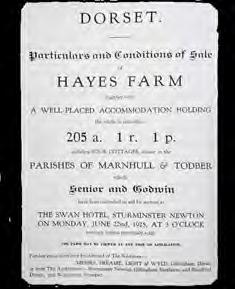

away and there were no other bidders. This pattern of limited competition continued throughout the year – the auctioneer bidding on behalf of the vendor, and the purchaser getting the property on reserve. In some cases, there were no bids at all.
Crosses Farm at Marnhull, owned by Mr Guy – whose descendants remain nearby – was described as a comfortable dwelling with 32 acres of deep feeding pasture fields. With a reserve of £3,000, the bidding started at £2,000 and the auctioneer went up in £100 bids eventually dropping to £50 increments and withdrawing at £2,950. The property was later sold to Major Gordon Campbell Johnston for £2,850, suggesting he knew there were no other bids and kept his powder dry!
“As the year progressed, auction success rates improved. Even with few bidders, properties found buyers, and prices held firm”
Against this grim backdrop, it’s perhaps unsurprising that property auctions in Dorset were not always successful. Leafing through the auction book from 1925 reveals many properties failed to meet their reserves. What fascinates me most, however, is that many of these lots have since been sold by our firm or managed by us in various capacities over the years.
In North Dorset, Knoll Farm was the first property offered for sale that year. A detached thatched cottage with cow stalls for seven, a wagon house, and paddock sold for £60 to a Mr Trowbridge – a name well known locally.
Rams Hill was the first farm to go under the hammer. This freehold dairy farm, let on an annual Lady Day tenancy, spanned 101 acres and included a four-bedroom house, garden, yard and buildings. Six acres had been ploughed by tenants under orders from the War Agricultural Committee.
1925 wasn’t just a year of economic challenges – it also saw the birth of remarkable figures who would shape the worlds of science, politics, entertainment and more.
• Gerald Durrell, naturalist
• George Cole, actor
The largest farm to be offered in 1925 was Hayes Farm in Marnhull, a 192-acre estate with an excellent residence and farm premises including four cottages. The reserve was £8,000, but J Ellison Gosling began bidding at £6,500, alternating with the auctioneer in £250 increments until reaching the reserve. Given the acreage was valued at around £40 per acre, making the land alone worth £7,700, the cottages were effectively thrown in for free. Other properties from that year remain familiar to local people: 105-acre Upper Kingsbury Farm in Milborne Port, White House Farm in Motcombe, Millers Farm in Buckland Newton, and Folly Farm in Madjeston.
• Peter Sellers, comedian and actor
• Richard Burton, actor
• Oliver Postgate, animator
• Norris and Ross McWhirter, co-founders of The Guinness Book of Records
• Margaret Thatcher, politician
• Henry Carpenter, boxing commentator
• Paul Raymond, publisher
As I know the auctioneer’s code, I can decipher that the reserve was £3,000. It appears that Captain Browne bid this figure straight
As the year progressed, auction success rates improved. Even with few bidders, properties found buyers and prices held firm. However, some sales still failed. Manor Farm in Bagber, with 66 acres and a courtyard of buildings but no house, failed to sell at £200, and a similar fate befell Woodrow Farm at Hazelbury Bryan.
Mark Lewis FRICS FAAV FNAVA Senior Partner 01258 473766 Sturminster Newton mlewis@symondsandsampson.co.uk


Imagine the scene: the auctioneer is in the sale field, auctioning different lots. He is surrounded by farmers and dealers, many of whom can look over the clerk’s shoulder and see the reserve prices written down. If the lot has £5,750 written against it, then everybody knows the reserve. But if it says £I,AIE, it may be more difficult to decipher.
Every firm of auctioneers has its own closely guarded secret code. It should be 10 letters long and, obviously, there can be no repeated letters. For example, in the code CUMBERLAND, C = 1, U = 2, and so on until we get to D = 0. In this code, £5,750 would be written £E,LED.
Mark Lewis unveils a dying art… and sets you a test

Problems arise if, like me, you are schooled in one code and then join a firm that uses another. When I worked in Cheshire, I might see £LEE and, thinking in terms of our Dorset code, assume it meant £900, when in fact the reserve was £755 – a mistake that could prove both embarrassing and costly.
Another code is AWONDERFUL, where A = 1, W = 2 and O =3, and so on. When negotiating with another chartered surveyor, both valuers may have their notebook filled with items with a code against them. If you happen to glimpse the opposition’s book, you might attempt to crack their code and work out how much they wanted for an item or assess their purchasing power.
“Every firm of auctioneers has its own closely guarded secret code”
My client was taking on the farm, while his was retiring, so I was tasked with buying as cheaply as possible. My book may have said 50 ewes at £75 each, but after cracking his code, I saw he had written £50. I offered £40, he countered with £50, and we settled at £45. It was a large valuation and, after two hours, we shook hands, signed each other’s books, and he was none the wiser. Sadly, this seems to be a dying art, and I am one of the few who still use it. Nevertheless, I am so glad the code has been handed down through the generations. I take great pleasure in flicking through old auction ledgers – even as far back as 1900 – and seeing how the bidding unfolded. It transports me back to the auction room.
In the photograph, you can see the auction of Hayes Farm, Marnhull, on 22 June 1925, had a reserve of £8,000 written in code as £beee, and the ledger records how the auctioneer opened at £6,500 and JWG raised his hand. The auctioneer bid £6,750 on behalf of the vendor (v), JWG went to £7,000, the auctioneer countered with £7,250, JWG responded with £7,500, and the auctioneer made one final bid for his client at £7,750. Mr Gosling then bought for £8,000. I’m sure everyone was delighted. Now, here’s your challenge: can you crack our code? I’ve given you a few clues to get started, so all you need do is put it into a 10-letter word. Good luck!

This happened to me when I was negotiating the break-up of a partnership with another auctioneer. He was much older and more experienced than me but made a schoolboy error by working across the desk from me with his notebook open. I could read the code upside down and recognised it as the one I had used in Cheshire.
Mark Lewis FRICS FAAV FNAVA Senior Partner
Answer: FORMIDABLE
76 Boundary Lane, St. Leonards – A bungalow for renovation in 6.32 acres of woodland with a range of outbuildings. 63 interested parties, 36 legal packs downloaded (828 individual documents). The guide price was £275,000 and it sold for £440,000.

Under 10 acres: 4.92 acres of pasture land at Tidderson sold for £60,975 per acre. Between 10 and 30 acres: 10.81 acres of pasture land at Broadoak, Bridport sold for £16,836 per acre. Over 30 acres: 38.42 acres of arable land at Pallington, Dorchester sold for £12,857 per acre.

2.53 acres of scenic woodland situated just over a mile from the coast in Llantwit Major, Glamorgan, Wales, and Brookwood in Lelant, St. Ives – a detached chalet bungalow in 0.40 acres a stone’s throw from the Hayle Estuary. The lots are 239 miles from one another.


Proctors Cottage, Holwell – A cottage in need of renovation with excellent potential for extension/remodelling with 5.31 acres situated on the edge of Holwell between Sturminster Newton and Sherborne. Guided at £300,000, the cottage achieved a sale price of £454,000 at our 15 November auction.

Oaklands House, Chard – A substantial Victorian property in grounds of just under 2 acres. The property sold for £960,000 with a guide price of £650,000.
0.04 acres between Beer and Seaton in Devon. The land had a guide of £5,000 and sold for £10,000 at our May auction in Axminster.

An online bidder in Arlington, Virginia in the United States took part in our 15 November auction bidding for a property in Looe, Cornwall.

The Old Boathouse, Lyme Regis – The freehold of a Grade II Listed Building comprising a vacant ground floor commercial premises, and a flat above (sold off on a long leasehold) situated on the seafront. Guide price: £380,000, sale price £520,000 (25 July Auction).


A charming, ruined Grade II Listed period house with great potential, surrounded by about 11.76 acres (4.76 ha) of pasture and woodland in a tranquil and secluded location near Shute, Axminster. Achieved £250,000 at our 16 May auction in Axminster.

In September we listed 44 lots for auction across 7 counties – Dorset, Somerset, Wiltshire, Hampshire, Devon, Cornwall, and Wales. We achieved a 91% success rate selling 31 out of 34 lots and raised just under £7,500,000 for our clients. A majority of the successful bidders chose to attend the auction and bid in person.


48A West Street in Corfe Castle enjoyed views of the castle from its own garden. The cottage was sold on behalf of the National Trust and achieved £292,000 from a guide price of £225,000 in our 15 November auction.
Fire Station Bungalow, East Morden – A detached single storey property in need of complete refurbishment. Guide price £125,000 sold for £208,000.

Mark hit a milestone when he sold his 3,000th property auction lot and it was a poignant property as it was the former head office of Symonds & Sampson.

A development plot in Chilcompton, near Radstock comprised a partially built detached property. The plot sold at our ‘Beat the Budget’ auction on 25 October for £400,000 (guide price £195,000).

Avalon in East Looe, Cornwall enjoyed a postcard view over East Looe and the river. Offered at our 3 October auction the property sold for £340,000 (guide £290,000)


Friday 28 February 2025 at 2:00pm The Digby Memorial Church Hall, Digby Road, Sherborne DT9 3NL
Thursday 27 March 2025 at 2:00pm Digby Hall, Hound Street, Sherborne DT9 3AB
Thursday 10 April 2025 at 2:00pm The Guildhall, West Street, Axminster EX13 5NX


Thursday 15 May 2025 at 2:00pm
Hall, Hound Street, Sherborne DT9 3AB


Thursday 5 June 2025 at 2:00pm

Thursday 24 July 2025 at 2:00pm
Digby Memorial Church Hall, Digby Road, Sherborne, Dorset DT9 3NL
Thursday 18 September 2025 at 2:00pm Digby Hall, Hound Street, Sherborne DT9 3NL
Thursday 9 October 2025 at 2:00pm The Guildhall, West Street, Axminster, Devon EX13 5NX


Thursday 6 November 2025 at 2:00pm
Digby Hall, Hound Street, Sherborne DT9 3AA


Friday 12 December 2025 at 2:00pm Digby Memorial Church Hall, Digby Road, Sherborne DT9 3NL
































Show Date 2025 7 August









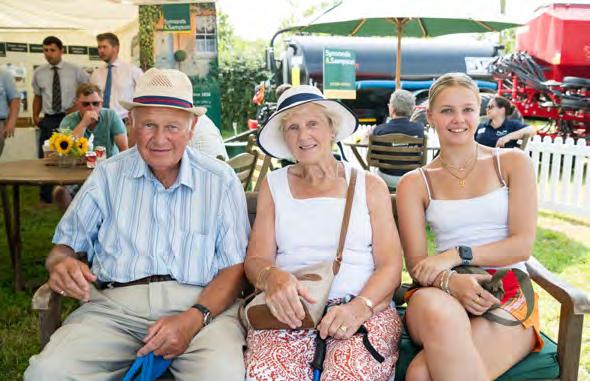
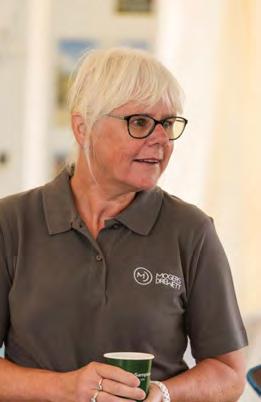


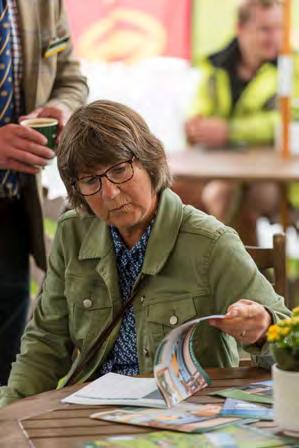































Show Date 2025 13 – 14 August










































Show Date 2025 21 August






























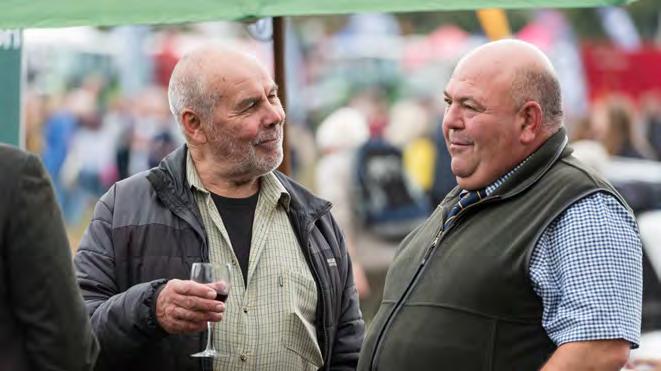











Show Dates 2025 2–3 September










































The Royal Agricultural Benevolent Institution (RABI), is an award-winning national charity providing local support to the farming community across England and Wales. Established in 1860, they have been offering guidance, financial support and practical care to farming people of all ages for generations.

YFW (Yeovil Free Wheel) Blood Bikes, a group of emergency volunteer bikers operating out of Yeovil, Wincanton, and Dorchester Hospitals and carrying blood, platelets, blood and tissue samples, medication, breast milk, documents, CT scans, and equipment to hospitals, hospices, and nursing homes as well as private addresses across much of Somerset and all of Dorset, saving the NHS well over £200,000 each year while easing patients’ suffering and helping to save lives.

• The annual coffee and cake morning in the Poundbury office is incredibly well supported by the local community, enjoying a wonderful selection of homemade bakes. Local businesses contributed generously to a raffle, and the morning raised a record breaking £1,850!
• O ur Beaminster office hosted its annual summer garden party in the beautiful gardens of Peter Brook, where guests were treated to a delicious spread.
• At the firms’ summer party, staff enjoyed supporting the charities by placing their bets on virtual horse races, winners of each race won a prize, and the remaining money was donated to charity.
• We organised a joint golf tournament with Porter Dodson solicitors. The day was thoroughly enjoyed by a number of local businesses, friends and colleagues.
• O ur Axminster, Blandford, Ilminster & Sherborne offices organised festive fundraisers during December.
We have also supported other events organised by solicitors and local people including the West Bay Raft Race.
We are grateful that representatives from both RABI and YFW Bloodbikes have given their time to attend a number of our charity events. With the final figures for the year still be tallied, we look forward to making a substantial contribution to the chosen charities. Thank you to our staff, clients and colleagues who joined forces to ensure that our fundraising has been both successful and thoroughly enjoyable.




In 2025, Symonds & Sampson are delighted to announce that our chosen charities are Macmillan Cancer Support and Prostate Cancer UK. We will be hosting various fundraising events throughout the year, please stay tuned to our social media sites for more details!


Anabel Merriman reflects on adventures and challenges of a year at sea.

Completing a transatlantic circuit, exploring the Caribbean and sailing 12,000nm.

What is ocean sailing like?
There is nothing around you and with the vast horizon, sunrise and sunset fill the sky, a stunning feature of the day. Weather systems, or ships arrive in about 20 minutes from the horizon. On a clear moonlit night, the whole sky is filled with stars it is a marvel to see. A cloudy night is the blackest of black, as if surrounded by velvet curtains, beautiful phosphorescence twinkles like stars on the waves.
Over the continental shelf the deeper water is royal blue. From Bahamas to Bermuda with no wind, the sea was silky flat, rich electric blue and so clear we went for a swim with 4,000m below.

Spare parts?
Lots, and then lots more! Boat jobs are part of ownership, we had our fair share but aided by You-Tube and friendly sailors, we became experts in all areas of boat maintenance. You must be self-reliant.
Getting ashore and security?
Our dinghy (aged 4½) escaped for a ‘wild night’ on the coral. Once returned, with battle scars, she was on Restriction of Privileges. We took an electric outboard but regretted not bringing our petrol Yamaha. A dinghy is your car, why take a small electric when four-wheel drive is what you need? Outboards are local currency, so we locked our dinghy when ashore, put it on deck at night and sometimes locked ourselves into the boat at anchor at nighttime.
What are your best memories?
“With the vast horizon, sunrise and sunset fill the sky, a stunning feature of the day”
Then during a series of thunderstorms, the grey sea was flatted by the wind and rain. Cloud engulfed us we could only see 20 metres with lightning strikes within a mile of us. A mid Atlantic gale-force 8 bought 5m waves with spray blowing off the top, a black and angry sea. Expect the unexpected!
We had many dolphins playing around our bows and leaping from the sea. We saw whales, a variety of sea birds, some hitching a ride, and flying fish such a privilege to see.
Food?
Eggs last many weeks if turned every few days, fruit and veg are stored in net hammocks hanging from the bimini. Cooking underway is an action sport, G-force pushes you into or away from cabinets and the food never stays still but is an important morale booster!
How many plasters?
We took advice and rivalled a small medical centre, ensuring doctors could treat mid-ocean by phone from head injuries to broken limbs.
A wonderful experience, incredible natural beauty, the Exumas, swimming pigs, volcanoes, waterfalls, coral fish, turtles, sharks, sting rays, barracuda and divebombing pelicans.
We met some amazing people both the locals and sailors.
Grown-Up Gap Year Stats
Islands 74 Countries 19 Days at sea 374, 1 night ashore Ocean passages 8 Max wind Force 8 Max sea state: 5m Closest lightning strike under 1nm Whales spotted 8 Many dolphins, stars, sunsets and sunrises Chandleries visited Every single one! Dress shops Less than 5 Haircuts 1 Hours clearing customs Too many Stamps in passports 32 Music, laughter and lovely people Nature’s beauty Waterfalls, volcanoes, flowers, turtles, fish, sharks, beaches, sea colours, sunshine, swimming and incredible snorkelling New skills Learnt Self-reliance and engineers of all kinds Flying fish Many, On deck a few, midnight wallop to the head 1
Top 5 places
Shroud Cay, Exuma Unbelievable beauty Barbuda Frigate bird colony and Princess Diana Beach Anguilla Elvis Beach Bar, paddleboarding ashore among turtles while pelicans divebomb in turquoise water Dominica Unspoilt natural beauty of river canyons, rainforest walks, waterfalls and hot springs St George’s, Bermuda Georgian charm, white roofs, clear water and pristine beaches.
Thank you Symonds & Sampson for enabling me to chase my dream!
Anabel Merriman MNAEA Assistant Residential Sales Manager 01258 473766 Sturminster Newton amerriman@symondsandsampson.co.uk

Andrew Tuffin shares his love for skittles, a game that combines skill, fun and camaraderie

Most rural pubs have a skittle alley, and I believe I’ve played in nearly all of them in our area. I love the game, not just for its competitive side but also the chance to meet up with mates during the dark winter nights. If you’ve never played skittles, it’s like ten-pin bowling in one way and nothing like it in another! For starters, there are nine pins and although the balls are heavy there is no hole for your thumb so it’s a matter of bowling (chucking rarely yields the best results) and trying to knock down as many pins as you can in three attempts.
The art of bowling varies wildly, and I think I’ve seen it all. There’s the sedate roll, the “throw it as hard as you can”, the spin (which occasionally works brilliantly), and the fall-forward technique, where the player holds the ball between their legs and hurls both themselves and the ball forward.
There are various games:

“There is great competitiveness when we get to the business end of the season”
Front pin first: You need a fair bit of accuracy for this one and, as alleys vary, a knowledge of the surface and peculiarities of the course help.
Nomination: The player has to say which pin they’ll hit first. This is only for the brave – or the very skilled – and any successful shots are usually met with cries of “show off!”
We tend to keep it straightforward, with the bonus that knocking over all nine pins earns a ‘spare’ hit. In theory, you could score 27 points, though I’ve never seen it done.
We pal up with our opposite number from the rival team and have a beer round – the loser buys a drink for their partner – and the running scores are made while we take it in turns to ‘stick up’ (reset the knocked-down pins). A dangerous place to be when the balls are hurtling down!
For me, the best part of the evening is invariably the snack meal afterwards – chicken or sausage and chips – and time for good banter and much mickey-taking.
It may sound relaxed, but skittle leagues are taken seriously and there is great competitiveness when we get to the business end of the season. It’s great fun and if you are interested in playing, call into your local pub, see if it has an alley, and join a team. You won’t regret it!
Andrew Tuffin BSc (Hons) MRICS FAAV Partner, Head of Farm Agency 01258 472244 Frome Market, Sturminster Newton atuffin@symondsandsampson.co.uk

“The sky’s the limit when it comes to career progression”
Lucy Carnell reveals how we support and develop our trainees for lasting success

At Symonds & Sampson, we recognise that our new entrants to the business are the future, and we are therefore proud to offer a range of mentoring and assistance as part of our training programme.
Back in January 2023, our graduate training programme was overhauled and refreshed to ensure that our graduates, apprentices and trainees receive the support they need and deserve to fulfil their potential.
Our training programme is now tailored to our candidates’ individual career paths and training routes, whether as a graduate or an apprentice. The current graduate training programme provides a full 24 months of structured training, including monthly study groups, an annual training day, regular contact with supervisors and counsellors, external professional body training events, feedback from our in-house Assessment of Professional Competence (APC) auditor, and mock interviews prepared by APC assessors using questions based on the candidates’ submissions.
At a time when finding the right staff is trickier than ever, here at Symonds & Sampson, we are striving to provide our up-and-coming professionals with the best possible start to their careers.
A number of our senior professionals and partners have worked their way up from apprenticeship or graduate entry to their current positions. Whether in a client-facing role or as part of the invaluable support departments, all our staff are an integral part of the Symonds & Sampson team. The sky’s the limit when it comes to career progression.
Testimonial: Mentorship that matters
“The Royal Institution of Chartered Surveyors (RICS) APC training programme offered by Symonds & Sampson has been important to my professional development. The firm has a range of experienced mentors who can be called on to provide a clear understanding of the APC process and provide opportunities for applying knowledge in real-world scenarios. The monthly study groups are thorough, interactive and tailored to help prepare for the final assessment. The firm encourages self-motivation and autonomous working, offers a wide variety of continuing professional development (CPD) opportunities, as well as study leave prior to exams.”
“Symonds & Sampson’s APC training programme was invaluable in helping me pass my APC. I felt that the firm also gave me fundamental support and revision assistance. The iSpy reports and mock interviews are an important training aspect that helped me feel confident and prepared when taking my APC assessment. I would recommend the Symonds & Sampson training programme to any graduate who would like to take the rural pathway like I did.”
Lucy Carnell BSc (Hons) MRICS

David West comes round to the sight of a steering wheel millimetres from his nose and his white shirt covered in blood.
A milk tanker has swerved to avoid hitting the queue at a temporary set of traffic lights and has instead hit West’s car head on as he’s come through the lights from the opposite direction. It’s left him with multiple injuries to his arms, legs and chest.
“It was at that moment I knew my football career was over,” says the estate agent, who once tackled Dutch three-time Ballon d’Or winner Johan Cruyff in front of 60,000 fans in Rotterdam.
But at least he’s alive.
Rewind to Spring 1983 and the 18 year old striker had just become one of Bob Paisley’s last Liverpool signings, scoring on his Anfield debut for the reserves against Bury. Not bad for a Dorchester youth product.
“I didn’t have any fear and just got on with it”, says the dad of two boys. “I was full of confidence and that’s a big thing in football”.
Liverpool ended that 82/83 season as league and league cup double champions with the likes of Ian Rush, Kenny Dalglish, Graeme Souness, Alan Hansen and Bruce Grobbelaar all running riot.
“I realised very quickly they were just normal blokes. Although names to everyone else, they are just normal people like you or me. They just happened to be very good footballers.”
West impressed Paisley’s replacement Fagan so much that he got called into the pre-season squad, where he made his first team debut again Cruyff’s Feyenoord.
“I watched him from the bench thinking what a player and then came on, and with my first touch of the game I tackled him. I wasn’t renowned for my tackling, but I was proud of that one.”
An unused 13th man in early 83/84 season league ties away to Arsenal and Norwich (clubs were only allowed one sub in those days); he then also didn’t get off the bench in both legs of a European Cup first round tie with Denmark’s Odense, despite Liverpool winning 6-0 on aggregate (in Europe you were still allowed up to five subs).
“Nowadays a manager would have made loads of substitutions, but it just didn’t happen in those days. Liverpool would use 14 players over 60 games and it was a club full of internationals that was always going to be very tough to break into.”
Despite this, West starred in the reserve side that own the Central League that season and he travelled with the delegation to Rome for the European Cup final again Roma, where Grobbelaar famously got shaky legs in that shootout win.
The first team came away with a historic league, league cup and European Cup treble in 83/84 – the first in England to have achieved such a feat – and a lad from Dorset sat on the cusp of one of the greatest sides in footballing history.
Cruyff-tackler who survived horror smash, looks back on career defining decisions.
In desperate need of rest, to his horror he was then recalled for an end of season tour of Swaziland (now Eswatini) where he played against newly crowned UEFA Cup winners Tottenham Hotspur twice, complete with star players Ossie Ardiles and Ray Clemence. He then featured in a game against the not so starstudded Swaziland national team.
“That completely clobbered me. It did me no favours going on that end of season tour, and I don’t think it would happen to a young player nowadays. I went into pre-season before and just didn’t play as well in my second season and lost a bit of confidence.
“Fagan started off great with me, but when you lose a bit of confidence, and aren’t playing as well, they lose interest in you and expect you to figure it out yourself and that’s where I came up short.
“I probably shouldn’t have asked to go out on loan,” he added. “I needed to knuckle down really. When I look back on my career, I think I needed to be mentally stronger when the going got tough.
“It’s no excuse. I had a really good first season and was around the first team squad, so I had the ability, but I think mental toughness was lacking for me when things went wrong.”
Having been released from Liverpool for daring to ask to go out on loan, West ended up at Bristol when Terry Cooper already had a left sided start in Alan Walsh. He then went to Torquay because it was close to Weymouth instead of opting to go back up north with Brian Norton’s Hull. Then he turned down an opportunity in Belgium to again stay relatively closer to home with Cheltenham.
“I don’t look back on life with regrets. I don’t think you can do that. You’ve just got to live in the moment, I’ve learnt that lesson. I just made some really bad mistakes. Nowadays you’d have an agent, back then there was no such thing, but I don’t live life in the past.”
“When things start going downhill it’s very difficult to bounce back and I admire those who do, because they’ve got a mental toughness to accept knocks along the way.”
He retired at 27.
Football sometimes crops up in conversation when he’s showing clients around their potential new home, but he suppresses the urge to tell them that he once played for Liverpool and even once turned Cruyff.
Words I Ashley Hammond
David West MNAEA
Residential Sales Manager 01305 251154 Poundbury
dwest@symondsandsampson.co.uk
Beth Rutterford explores the sport where teamwork, speed and instinct combine

Flyball is an exhilarating and fast-paced dog sport that continues to gain popularity worldwide. While it welcomes dogs of all breeds, some naturally excel in its high-energy, competitive environment. The sport originated in America in the 1970s, with the British Flyball Association celebrating its 50th anniversary in 2024.
Flyball is an exciting relay race where teams of four dogs and their handlers compete in a test of speed and precision. Each dog must pass through sensor start gates and leap over four hurdles before triggering a box jump that releases a ball. After catching the ball, the dog must return over the hurdles and through the start gates to complete its run.
To secure a valid time, all four dogs must complete their runs cleanly, jumping all hurdles and bringing their balls through the start gates. Dogs ‘pass’ at the start gate nose-to-nose, released by their handlers 30 to 50 yards before the line. The aim is to get passes as close as possible, avoiding early passes that require the dog to rerun and waste time.

“Flyball is fast and furious. The current British record is an astonishing 14.23 seconds”
Why are gundogs so well-suited to Flyball? Their natural instincts, trainability and high work drive make them ideal for the sport. Labradors, for example, have an inherent love of retrieving, making it rare for one to drop the ball before crossing the line. Meanwhile, the shorter height of cocker spaniels often sees them act as the team’s ‘height dog’, lowering the jump height without significantly compromising speed.
If you fancy trying Flyball with your gundog – or any breed – both the British Flyball Association and UK Flyball League provide details on their websites to help you find a local team.
Flyball is fast and furious. The current British record is held by the Raptors Team, with an astonishing time of 14.23 seconds. Meanwhile, Belgium’s Road Runners broke the world record in April 2024, setting a remarkable time of 14.07 seconds!
While border collies and lurcher sport crosses are often considered dominant in the fastest divisions, gundog breeds are regular and reliable competitors across the levels.
The British Flyball Association (BFA) boasts an impressive 590 registered labrador retrievers, 293 English springer spaniels, and nearly 700 English cocker spaniels.


Local flyball teams are spread across the Southwest, including Wild West and Test Valley Raiders near Wincanton, Isca Flyball in Exeter, Two Bridges Flyball near Plymouth, Bassett Allsorts at Wootton Bassett, Odyssey in Andover, and Bristol Ballistics. Outdoor competitions are held at venues like Turnpike and West Woodlands Showgrounds
Beth Rutterford BSc (Hons) Apprentice Surveyor 01380 710535 Devizes brutterford@symondsandsampson.co.uk





Meredith Wallis (nee Holmes)
married Robert Wallis
When: Saturday 1 June 2024
Where: The Church of St. Eustace, Ibberton, and a reception at Crockers Farm, Stoke Wake Honeymoon: Jamaica

Morgan Fry (nee Clement)
married Andrew Fry
When: Saturday 15 June 2024
Where: St. James’s Church, Kingston, and a reception at Westhill Farm, Kingston Honeymoon: Argentina

George Whittaker
married Alice Whittaker (nee Gaillard)
When: Saturday 19 October 2024
Where: Gorwell Farm, Abbotsbury Honeymoon: Cape Verde

Mark Lewis Editor
The book I reread the Karla trilogy by John Le Carre. I read the books, listen to the BBC dramas, the audiobooks and the film and television adaptions. Alec Guinness and Simon Russell Beale are imperious as George Smiley. The artist I would collect if I could afford it: There are so many but I have always been drawn to the surreal and the absurd, a little like my humour, so I’ll plump for René Magritte.
The best advice I have been given: Don’t drive in where you can’t back out!

Richard Miller Professional proof reader
In another life I would be: A ghillie on a Scottish salmon river. As my early interviews for becoming a land agent didn’t go very well I toyed with the idea but I’m pretty sure staying patient with fishing guests would have been a stretch –they say one of the skills of being a ghillie is to be able to yawn with your mouth shut.
My sense of humour is: I think it’s called cringe humour. The Office from the early noughties is a good example. My wife can’t understand why I watch repeats of it, usually without even laughing very much, but I find the awkwardness of the whole thing strangely compelling.
The best advice I have been given: Get it in writing.

Mally Wright Proof reader
The book I reread: Mapp and Lucia by EF Benson. I never get tired of it – the characters and their wonderfully sharp wit always keep me entertained, even though I know exactly what’s coming next!
My signature dish: Apple crumble. It’s always a crowd-pleaser and the perfect comfort food for chilly days.
My favourite building: The Royal Albert Hall – it’s such an iconic building. I love the atmosphere there, especially when it’s buzzing with energy during a performance.

Rob Nolan Show and sale photography
Who has inspired you: Ansel Adams, who is often considered as one of the greatest photographers especially for his breathtaking images of the American West. His mastery of landscape photography, using natural light and the beauty of wide, open spaces serves as a great influence on my own landscape photography.
The place that means a lot to me: As a photographer, there are several local spots that I will always return to, sometimes its enjoyable to just sit and watch the change in the light. Kimmeridge Bay, in the Purbecks is a fantastic location especially at Sunset!
The best advice I have been given: It’s not about what you capture; it’s about what you convey.
The importance of storytelling and conveying emotion through imagery, rather than simply taking a technically perfect photo, something that I can quite easily get hung up on!

The book I re-read: Several by Ian McEwan – I first discovered his novels on a ’recommended reading list’ before starting my A-Levels and his books have been a regular part of my reading ever since. A particular favourite is The Children Act, which explores moral dilemmas, the complexities of the legal system, and personal/ professional conflict.
Signature dish: Slow-cooked beef ragu with pappardelle and pecorino cheese (and a bottle of Italian red!)
The best advice I have been given: “Heels down, shoulders back!” –probably the best advice I received as a child when learning to ride, and I still remind myself of it today. I am certain it has helped me avoid countless falls over the years!

In another life I would be: An archaeologist. I have always been curious about ancient civilizations and the lost technology they must have possessed.There are so many unanswered and unexplained mysteries attached to the past I would love to uncover.
The artist I would collect if I could afford it:
I’ve always been fascinated by detailed woodcuts, especially the unique and mind-bending work of M.C. Escher. His creative use of optical illusions and impossible spaces makes you think about things in a different way.
The place that means a lot to me: As the son of a military man, I’ve lived in many places. Although I was born in Singapore, Germany always calls me back. I think it’s because I lived there from the ages 7 to 10, when I was most impressionable and later visiting with my wife. I love the culture and efficiency and nothing beats a Christmas in Bavaria!

Featured artist
Nicholas studied at St. Martins School of Art and Bristol Polytechnic (Fine Art).
Since his first one-man exhibition in 1984 Nicholas has exhibited consistently in London, Dublin and Hong Kong. His paintings have increasingly become more in demand and now feature in many private and corporate collections.
He lives with his wife in Dorset and gets much of his inspiration from the surrounding countryside and the coast. He also travels to some of his favourite places to paint – particularly Venice, Paris, the West of Ireland and Cornwall.
“I wake-up most mornings thinking about painting. Usually it is something that I have seen the day before….A long straight sunlit road, lined with telegraph poles…A sparrow hawk flips over the hedge…These are possible elements for a picture.
I am lucky to live in the middle of rural Dorset, not too far from the sea. The seasons and the constantly changing moods of the countryside are my inspiration. From large dramatic landscapes, where people and animals seem small under the passing clouds, to smaller things…A bird in a cold winter sky…This is what makes me want to paint… Moments of heartbreaking beauty, moments that take your breath away.”
















The views expressed in this publication are not necessarily those of Symonds & Sampson LLP.


PROPERTY ADVICE SINCE 1858